
Userid: CPM Schema: tipx Leadpct: 100% Pt. size: 10
Draft Ok to Print
AH XSL/XML
Fileid: … ions/p590a/2023/a/xml/cycle03/source (Init. & Date) _______
Page 1 of 61 9:10 - 4-Mar-2024
The type and rule above prints on all proofs including departmental reproduction proofs. MUST be removed before printing.
Department of the Treasury
Internal Revenue Service
Publication 590-A
Cat. No. 66302J
Contributions
to Individual
Retirement
Arrangements
(IRAs)
For use in preparing
2023 Returns
Get forms and other information faster and easier at:
• IRS.gov (English)
• IRS.gov/Spanish (Español)
•
IRS.gov/Chinese (中文)
•
IRS.gov/Korean (한국어)
• IRS.gov/Russian (Pусский)
• IRS.gov/Vietnamese (Tiếng Việt)
Contents
Future Developments ....................... 1
What's New for 2023 ........................ 1
What’s New for 2024 ........................ 2
Reminders ............................... 2
Introduction .............................. 3
Chapter 1. Traditional IRAs .................. 6
Who Can Open a Traditional IRA? ............ 6
When Can a Traditional IRA Be Opened? ....... 7
How Can a Traditional IRA Be Opened? ........ 7
How Much Can Be Contributed? ............. 8
When Can Contributions Be Made? .......... 10
How Much Can You Deduct? ............... 11
What if You Inherit an IRA? ................ 20
Can You Move Retirement Plan Assets? ....... 20
When Can You Withdraw or Use Assets? ...... 30
What Acts Result in Penalties or Additional
Taxes? ............................. 31
Chapter 2. Roth IRAs ..................... 37
What Is a Roth IRA? ..................... 38
When Can a Roth IRA Be Opened? .......... 38
Can You Contribute to a Roth IRA? ........... 38
Can You Move Amounts Into a Roth IRA? ...... 43
Chapter 3. Retirement Savings Contributions
Credit (Saver's Credit) .................. 45
How To Get Tax Help ....................... 46
Appendices ............................. 51
Index .................................. 59
Future Developments
For the latest information about developments related to
Pub. 590-A, such as legislation enacted after it was
published, go to IRS.gov/Pub590A.
What's New for 2023
IRA contribution limit increased. Beginning in 2023,
the IRA contribution limit is increased to $6,500 ($7,500
for individuals age 50 or older) from $6,000 ($7,000 for in-
dividuals age 50 or older).
Increase in required minimum distribution age. Indi-
viduals who reach age 72 after December 31, 2022, may
delay receiving their required minimum distributions until
April 1 of the year following the year in which they turn age
73.
Modified AGI limit for traditional IRA contributions.
For 2023, if you are covered by a retirement plan at work,
Mar 4, 2024

Page 2 of 61 Fileid: … ions/p590a/2023/a/xml/cycle03/source 9:10 - 4-Mar-2024
The type and rule above prints on all proofs including departmental reproduction proofs. MUST be removed before printing.
your deduction for contributions to a traditional IRA is re-
duced (phased out) if your modified AGI is:
•
More than $116,000 but less than $136,000 for a mar-
ried couple filing a joint return or a qualifying surviving
spouse,
•
More than $73,000 but less than $83,000 for a single
individual or head of household, or
•
Less than $10,000 for a married individual filing a sep-
arate return.
Modified AGI limit for certain married individuals.
If you are married and your spouse is covered by a retire-
ment plan at work and you aren’t, and you live with your
spouse or file a joint return, your deduction is phased out if
your modified AGI is more than $218,000 (up from
$204,000 for 2022) but less than $228,000 (up from
$214,000 for 2022). If your modified AGI is $228,000 or
more, you can’t take a deduction for contributions to a tra-
ditional IRA.
Modified AGI limit for Roth IRA contributions. For
2023, your Roth IRA contribution limit is reduced (phased
out) in the following situations.
•
Your filing status is married filing jointly or qualifying
surviving spouse and your modified AGI is at least
$218,000. You can’t make a Roth IRA contribution if
your modified AGI is $228,000 or more.
•
Your filing status is single, head of household, or mar-
ried filing separately and you didn’t live with your
spouse at any time in 2023 and your modified AGI is at
least $138,000. You can’t make a Roth IRA contribu-
tion if your modified AGI is $153,000 or more.
•
Your filing status is married filing separately, you lived
with your spouse at any time during the year, and your
modified AGI is more than zero. You can’t make a Roth
IRA contribution if your modified AGI is $10,000 or
more.
Qualified tuition program rollover to a Roth IRA. Be-
ginning with distributions made after December 31, 2023,
a beneficiary of a section 529 qualified tuition program is
permitted to roll over a distribution from the section 529
account to a Roth IRA for the beneficiary if certain require-
ments are met.
•
The rollover must be paid through a trustee-to-trustee
transfer.
•
The rollover amount cannot be more than the Roth
IRA annual contributions limit.
•
The rollover must be from a section 529 account that
has been open for more than 15 years.
The distribution is paid in a direct trustee-to-trustee
transfer (rollover) to a Roth IRA maintained for the benefit
of the designated beneficiary. The distribution cannot ex-
ceed the aggregate amount contributed to the program
(and earnings attributed to the contributed amount) before
the 5-year period ending on the date of the distribution.
A distribution made after December 31, 2023, and be-
fore April 15, 2024, that is rolled over to a Roth IRA by
April 15, 2024, and designated for 2023 would be reported
as a Roth IRA contribution for 2023.
For more information, see Trustee-to-Trustee Transfer
and Can You Move Amounts Into a Roth IRA.
What’s New for 2024
IRA contribution limit increased for 2024. Beginning
in 2024, the IRA contribution limit is increased to $7,000
($8,000 for individuals age 50 or older) from $6,500
($7,500 for individuals age 50 or older).
Modified AGI limit for traditional IRA contributions in-
creased. For 2024, if you are covered by a retirement
plan at work, your deduction for contributions to a tradi-
tional IRA is reduced (phased out) if your modified AGI is:
•
More than $123,000 but less than $143,000 for a mar-
ried couple filing a joint return or a qualifying surviving
spouse,
•
More than $77,000 but less than $87,000 for a single
individual or head of household, or
•
Less than $10,000 for a married individual filing a sep-
arate return.
Modified AGI limit for certain married individuals
increased. If you are married and your spouse is covered
by a retirement plan at work and you aren’t, and you live
with your spouse or file a joint return, your deduction is
phased out if your modified AGI is more than $230,000
(up from $218,000 for 2023) but less than $240,000 (up
from $228,000 for 2023). If your modified AGI is $240,000
or more, you can’t take a deduction for contributions to a
traditional IRA.
Modified AGI limit for Roth IRA contributions in-
creased. For 2024, your Roth IRA contribution limit is re-
duced (phased out) in the following situations.
•
Your filing status is married filing jointly or qualifying
surviving spouse and your modified AGI is at least
$230,000. You can’t make a Roth IRA contribution if
your modified AGI is $240,000 or more.
•
Your filing status is single, head of household, or mar-
ried filing separately and you didn’t live with your
spouse at any time in 2024 and your modified AGI is at
least $146,000. You can’t make a Roth IRA contribu-
tion if your modified AGI is $161,000 or more.
•
Your filing status is married filing separately, you lived
with your spouse at any time during the year, and your
modified AGI is more than zero. You can’t make a Roth
IRA contribution if your modified AGI is $10,000 or
more.
Reminders
Qualified disaster tax relief. The special rules that pro-
vide for tax-favored withdrawals and repayments from cer-
tain qualified plans for taxpayers who suffered an
2 Publication 590-A (2023)

Page 3 of 61 Fileid: … ions/p590a/2023/a/xml/cycle03/source 9:10 - 4-Mar-2024
The type and rule above prints on all proofs including departmental reproduction proofs. MUST be removed before printing.
economic loss as a result of a qualified disaster were
made permanent by the SECURE 2.0 Act of 2022.
A qualified disaster is a major disaster that occurred on
or after January 26, 2021, and was declared by the Presi-
dent after December 27, 2020, under section 401 of the
Robert T. Stafford Disaster Relief and Emergency Act. For
more information, see Disaster-Related Relief in Pub.
590-B, Distributions from Individual Retirement Arrange-
ments (IRAs).
Certain corrective distributions not subject to 10%
early distribution tax. Beginning on December 29,
2022, the 10% additional tax on early distributions will not
apply to a corrective IRA distribution, which consists of an
excessive contribution (a contribution greater than the IRA
contribution limit) and any earnings allocable to the exces-
sive contribution, as long as the corrective distribution is
made on or before the due date (including extensions) of
the income tax return.
Divorce or separation instruments after 2018.
Amounts paid as alimony or separate maintenance pay-
ments under a divorce or separation instrument executed
after 2018 won't be deductible by the payer. Such
amounts also won't be includible in the income of the re-
cipient. The same is true of alimony paid under a divorce
or separation instrument executed before 2019 and modi-
fied after 2018, if the modification expressly states that the
alimony isn't deductible to the payer or includible in the in-
come of the recipient. For more information, see Pub. 504.
IRA interest. Although interest earned from your IRA is
generally not taxed in the year earned, it isn’t tax-exempt
interest. Tax on your traditional IRA is generally deferred
until you take a distribution. Don’t report this interest on
your return as tax-exempt interest. For more information
on tax-exempt interest, see the instructions for your tax re-
turn.
Photographs of missing children. The IRS is a proud
partner with the National Center for Missing & Exploited
Children® (NCMEC). Photographs of missing children se-
lected by the Center may appear in this publication on pa-
ges that would otherwise be blank. You can help bring
these children home by looking at the photographs and
calling 1-800-THE-LOST (1-800-843-5678) if you recog-
nize a child.
Introduction
This publication discusses contributions to individual re-
tirement arrangements (IRAs). An IRA is a personal sav-
ings plan that gives you tax advantages for setting aside
money for retirement. For information about distributions
(including rollovers) from an IRA, see Pub. 590-B.
What are some tax advantages of an IRA? Two tax ad-
vantages of an IRA are that:
•
Contributions you make to an IRA may be fully or parti-
ally deductible, depending on which type of IRA you
have and on your circumstances; and
•
Generally, amounts in your IRA (including earnings
and gains) aren’t taxed until distributed. In some ca-
ses, amounts aren’t taxed at all if distributed according
to the rules.
What's in this publication? This publication discusses
contributions to traditional and Roth IRAs. It explains the
rules for:
•
Setting up an IRA,
•
Contributing to an IRA,
•
Transferring money or property to and from an IRA,
and
•
Taking a credit for contributions to an IRA.
It also explains the penalties and additional taxes that
apply when the rules aren’t followed. To assist you in com-
plying with the tax rules for IRAs, this publication contains
worksheets and sample forms, which can be found
throughout the publication and in the appendices at the
end of the publication.
How to use this publication. The rules that you must
follow depend on which type of IRA you have. Use Table
I-1 to help you determine which parts of this publication to
read. Also use Table I-1 if you were referred to this publi-
cation from instructions to a form.
Comments and suggestions. We welcome your com-
ments about this publication and suggestions for future
editions.
You can send us comments through IRS.gov/
FormComments. Or, you can write to the Internal Revenue
Service, Tax Forms and Publications, 1111 Constitution
Ave. NW, IR-6526, Washington, DC 20224.
Although we can’t respond individually to each com-
ment received, we do appreciate your feedback and will
consider your comments and suggestions as we revise
our tax forms, instructions, and publications. Don’t send
tax questions, tax returns, or payments to the above ad-
dress.
Getting answers to your tax questions. If you have
a tax question not answered by this publication or the How
To Get Tax Help section at the end of this publication, go
to the IRS Interactive Tax Assistant page at IRS.gov/
Help/ITA where you can find topics by using the search
feature or viewing the categories listed.
Getting tax forms, instructions, and publications.
Go to IRS.gov/Forms to download current and prior-year
forms, instructions, and publications.
Ordering tax forms, instructions, and publications.
Go to IRS.gov/OrderForms to order current forms, instruc-
tions, and publications; call 800-829-3676 to order
prior-year forms and instructions. The IRS will process
your order for forms and publications as soon as possible.
Don’t resubmit requests you’ve already sent us. You can
get forms and publications faster online.
Publication 590-A (2023) 3
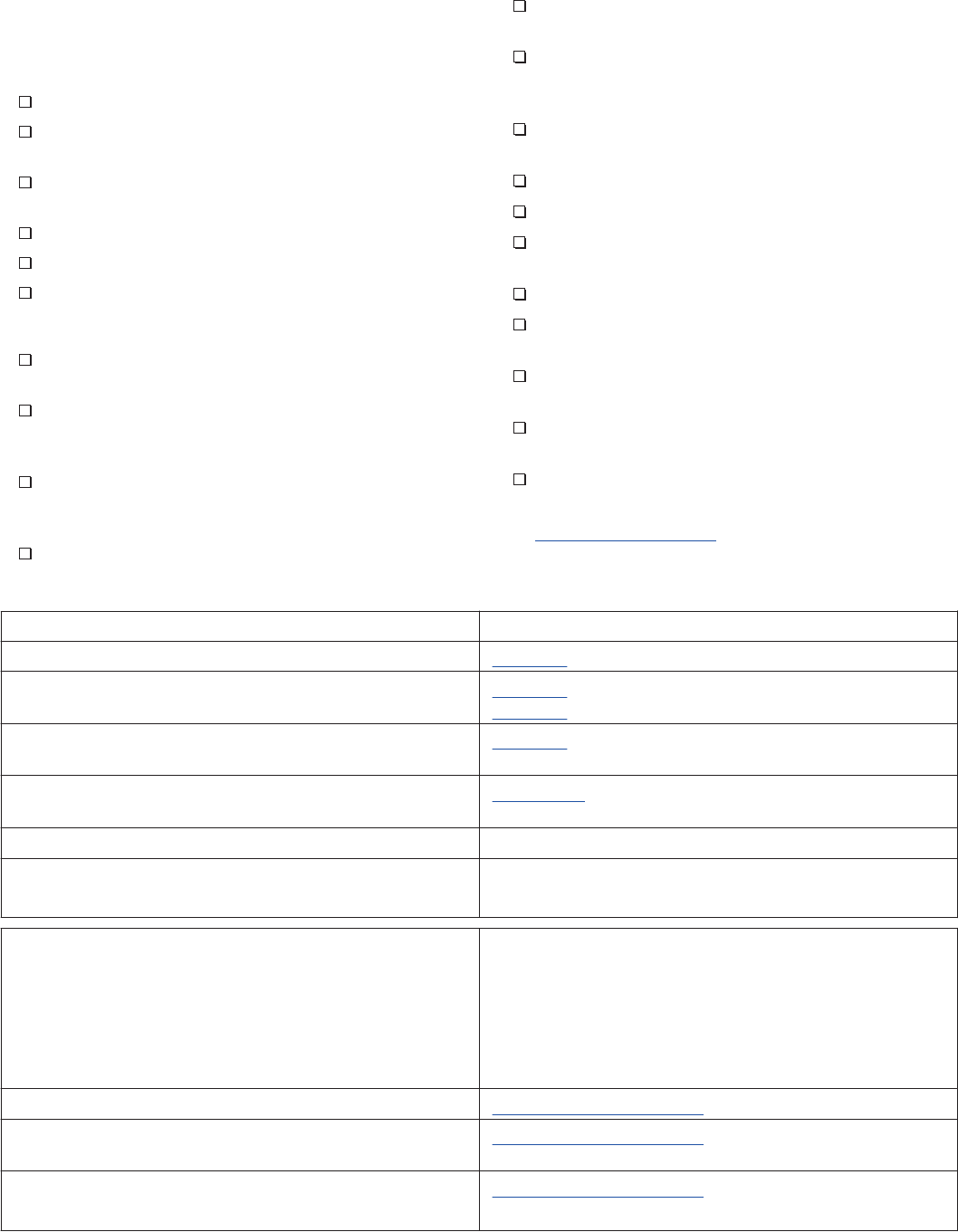
Page 4 of 61 Fileid: … ions/p590a/2023/a/xml/cycle03/source 9:10 - 4-Mar-2024
The type and rule above prints on all proofs including departmental reproduction proofs. MUST be removed before printing.
Useful Items
You may want to see:
Publications
505 Tax Withholding and Estimated Tax
590-B Distributions from Individual Retirement
Arrangements (IRAs)
560 Retirement Plans for Small Business (SEP,
SIMPLE, and Qualified Plans)
571 Tax-Sheltered Annuity Plans (403(b) Plans)
575 Pension and Annuity Income
939 General Rule for Pensions and Annuities
Forms (and Instructions)
W-4P Withholding Certificate for Pension or Annuity
Payments
1099-R Distributions From Pensions, Annuities,
Retirement or Profit-Sharing Plans, IRAs,
Insurance Contracts, etc.
5304-SIMPLE Savings Incentive Match Plan for
Employees of Small Employers (SIMPLE)—Not
for Use With a Designated Financial Institution
5305-S SIMPLE Individual Retirement Trust Account
505
590-B
560
571
575
939
W-4P
1099-R
5304-SIMPLE
5305-S
5305-SA SIMPLE Individual Retirement Custodial
Account
5305-SIMPLE Savings Incentive Match Plan for
Employees of Small Employers (SIMPLE)—for
Use With a Designated Financial Institution
5329 Additional Taxes on Qualified Plans (Including
IRAs) and Other Tax-Favored Accounts
5498 IRA Contribution Information
8606 Nondeductible IRAs
8815 Exclusion of Interest From Series EE and I U.S.
Savings Bonds Issued After 1989
8839 Qualified Adoption Expenses
8880 Credit for Qualified Retirement Savings
Contributions
8915-C Qualified 2018 Disaster Retirement Plan
Distributions and Repayments
8915-D Qualified 2019 Disaster Retirement Plan
Distributions and Repayments
8915-F Qualified Disaster Retirement Plan
Distributions and Repayments
See How To Get Tax Help for information about getting
these publications and forms.
5305-SA
5305-SIMPLE
5329
5498
8606
8815
8839
8880
8915-C
8915-D
8915-F
Table I-1. Using This Publication
IF you need information on... THEN see...
traditional IRAs chapter 1.
Roth IRAs chapter 2, and parts of
chapter 1.
the credit for qualified retirement savings contributions
(saver's credit)
chapter 3.
how to keep a record of your contributions to, and
distributions from, your traditional IRA(s)
Appendix A.
SEP IRAs, SIMPLE IRAs, and 401(k) plans Pub. 560.
Coverdell education savings accounts (ESAs) (formerly
called education IRAs)
Pub. 970.
IF for 2023, you:
•
received social security benefits,
•
had taxable compensation,
•
contributed to a traditional IRA, and
•
you or your spouse were covered by an employer
retirement plan,
and you want to...
THEN see...
first figure your modified adjusted gross income (AGI) Appendix B, Worksheet 1.
then figure how much of your traditional IRA contribution
you can deduct
Appendix B, Worksheet 2.
and finally figure how much of your social security is
taxable
Appendix B, Worksheet 3.
4 Publication 590-A (2023)

Page 5 of 61 Fileid: … ions/p590a/2023/a/xml/cycle03/source 9:10 - 4-Mar-2024
The type and rule above prints on all proofs including departmental reproduction proofs. MUST be removed before printing.
Table I-2. How Are a Traditional IRA and a Roth IRA Different?
This table shows the differences between traditional and Roth IRAs. Answers in the middle column apply to traditional
IRAs. Answers in the right column apply to Roth IRAs.
Question Answer
Traditional IRA? Roth IRA?
Is there an age limit on when I can open
and contribute to a ................
No. For tax years after 2019, you are
able to contribute to your IRA even if
you have reached age 70
1
/2 or older.
See Who Can Open a Traditional IRA?
in chapter 1.
No. You can be any age. See Can You
Contribute to a Roth IRA? in chapter 2.
If I earned more than $6,500 in 2023
($7,500 if I was age 50 or older by the
end of 2023), is there a limit on how
much I can contribute to a ...........
Yes. For 2023, you can contribute to a
traditional IRA up to:
•
$6,500, or
•
$7,500 if you were age 50 or older
by the end of 2023.
There is no upper limit on how much
you can earn and still contribute. See
How Much Can Be Contributed? in
chapter 1.
Yes. For 2023, you may be able to
contribute to a Roth IRA up to:
•
$6,500, or
•
$7,500 if you were age 50 or older
by the end of 2023,
but the amount you can contribute may
be less than that depending on your
income, filing status, and if you
contribute to another IRA. See How
Much Can Be Contributed? and Table
2-1 in chapter 2.
Can I deduct contributions to a .......
Yes. You may be able to deduct your
contributions to a traditional IRA
depending on your income, filing status,
whether you are covered by a
retirement plan at work, and whether
you receive social security benefits.
See How Much Can You Deduct? in
chapter 1.
No. You can never deduct contributions
to a Roth IRA. See What Is a Roth IRA?
in chapter 2.
Do I have to file a form just because I
contribute to a ....................
Not unless you make nondeductible
contributions to your traditional IRA. In
that case, you must file Form 8606. See
Nondeductible Contributions in
chapter 1.
No. You don’t have to file a form if you
contribute to a Roth IRA. See
Contributions not reported in chapter 2.
Publication 590-A (2023) 5
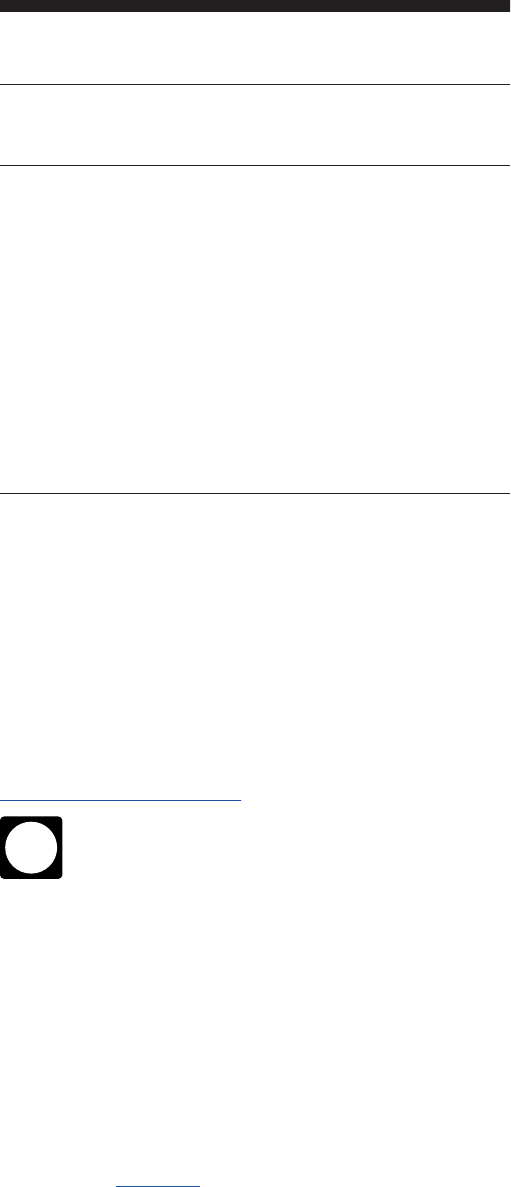
Page 6 of 61 Fileid: … ions/p590a/2023/a/xml/cycle03/source 9:10 - 4-Mar-2024
The type and rule above prints on all proofs including departmental reproduction proofs. MUST be removed before printing.
1.
Traditional IRAs
Introduction
This chapter discusses the original IRA. In this publica-
tion, the original IRA (sometimes called an ordinary or reg-
ular IRA) is referred to as a traditional IRA. A traditional
IRA is any IRA that isn’t a Roth IRA or a SIMPLE IRA. The
following are two advantages of a traditional IRA.
•
You may be able to deduct some or all of your contri-
butions to it, depending on your circumstances.
•
Generally, amounts in your IRA, including earnings
and gains, aren’t taxed until they are distributed.
Who Can Open a Traditional
IRA?
You can open and make contributions to a traditional IRA if
you (or, if you file a joint return, your spouse) received tax-
able compensation during the year.
You can have a traditional IRA whether or not you are
covered by any other retirement plan. However, you may
not be able to deduct all of your contributions if you or your
spouse are covered by an employer retirement plan. See
How Much Can You Deduct, later.
For tax years beginning after December 31, 2019,
the rule that you are not able to make contribu-
tions to your traditional IRA for the year in which
you reach age 70½ and all later years has been repealed.
Both spouses have compensation. If both you and
your spouse have compensation, each of you can open an
IRA. You can’t both participate in the same IRA. If you file
a joint return, only one of you needs to have compensa-
tion.
What Is Compensation?
Generally, compensation is what you earn from working.
For a summary of what compensation does and doesn’t
include, see Table 1-1. Compensation includes all of the
items discussed next (even if you have more than one
type).
Wages, salaries, etc. Wages, salaries, tips, professional
fees, bonuses, and other amounts you receive for provid-
ing personal services are compensation. The IRS treats
as compensation any amount properly shown in box 1
(Wages, tips, other compensation) of Form W-2, Wage
and Tax Statement, provided that amount is reduced by
any amount properly shown in box 11 (Nonqualified
TIP
plans). A scholarship or fellowship is generally taxable
compensation only if it is in box 1 of your Form W-2. How-
ever, for tax years beginning after 2019, certain non-tuition
fellowship and stipend payments not reported to you on
Form W-2 are treated as taxable compensation for IRA
purposes. These amounts include taxable non-tuition fel-
lowship and stipend payments made to aid you in the pur-
suit of graduate or postdoctoral study and included in your
gross income under the rules discussed in chapter 1 of
Pub. 970, Tax Benefits for Education.
Commissions. An amount you receive that is a percent-
age of profits or sales price is compensation.
Self-employment income. If you are self-employed (a
sole proprietor or a partner), compensation is the net
earnings from your trade or business (provided your per-
sonal services are a material income-producing factor) re-
duced by the total of:
•
The deduction for contributions made on your behalf
to retirement plans, and
•
The deduction allowed for the deductible part of your
self-employment taxes.
Compensation includes earnings from self-employment
even if they aren’t subject to self-employment tax because
of your religious beliefs.
Self-employment loss. If you have a net loss from
self-employment, don’t subtract the loss from your salaries
or wages when figuring your total compensation.
Alimony and separate maintenance. For IRA purpo-
ses, compensation includes any taxable alimony and sep-
arate maintenance payments you receive under a decree
of divorce or separate maintenance but only with respect
to divorce or separation instruments executed on or before
December 31, 2018, that have not been modified to ex-
clude such amounts.
Nontaxable combat pay. If you were a member of the
U.S. Armed Forces, compensation includes any nontaxa-
ble combat pay you received. This amount should be re-
ported in box 12 of your 2023 Form W-2 with code Q.
Graduate or postdoctoral study. A scholarship or fel-
lowship is generally taxable compensation only if it is in
box 1 of your Form W-2. However, for tax years beginning
after 2019, certain non-tuition fellowship and stipend pay-
ments not reported to you on Form W-2 are treated as tax-
able compensation for IRA purposes. These amounts in-
clude taxable non-tuition fellowship and stipend payments
made to aid you in the pursuit of graduate or postdoctoral
study and included in your gross income under the rules
discussed in chapter 1 of Pub. 970.
6 Chapter 1 Traditional IRAs Publication 590-A (2023)

Page 7 of 61 Fileid: … ions/p590a/2023/a/xml/cycle03/source 9:10 - 4-Mar-2024
The type and rule above prints on all proofs including departmental reproduction proofs. MUST be removed before printing.
Compensation for Purposes
of an IRA
Includes... Doesn’t include...
earnings and profits from
property.
wages, salaries, etc.
interest and
dividend income.
commissions.
pension or annuity
income.
self-employment income.
deferred compensation.
taxable alimony and separate
maintenance.
income from certain
partnerships.
nontaxable combat pay.
any amounts you exclude
from income.
taxable non-tuition fellowship and
stipend payments.
What Isn’t Compensation?
Compensation doesn’t include any of the following items.
•
Earnings and profits from property, such as rental in-
come, interest income, and dividend income.
•
Pension or annuity income.
•
Deferred compensation received (compensation pay-
ments postponed from a past year).
•
Income from a partnership for which you don’t provide
services that are a material income-producing factor.
•
Conservation Reserve Program (CRP) payments re-
ported on Schedule SE (Form 1040), line 1b.
•
Any amounts (other than combat pay) you exclude
from income, such as foreign earned income and
housing costs.
When Can a Traditional IRA Be
Opened?
You can open a traditional IRA at any time. However, the
time for making contributions for any year is limited. See
When Can Contributions Be Made, later.
How Can a Traditional IRA Be
Opened?
You can open different kinds of IRAs with a variety of or-
ganizations. You can open an IRA at a bank or other finan-
cial institution or with a mutual fund or life insurance com-
pany. You can also open an IRA through your stockbroker.
Any IRA must meet Internal Revenue Code requirements.
Table 1-1. The requirements for the various arrangements are dis-
cussed below.
Kinds of traditional IRAs. Your traditional IRA can be an
individual retirement account or annuity. It can be part of
either a SEP or an employer or employee association trust
account.
Individual Retirement Account
An individual retirement account is a trust or custodial ac-
count set up in the United States for the exclusive benefit
of you or your beneficiaries. The account is created by a
written document. The document must show that the ac-
count meets all of the following requirements.
•
The trustee or custodian must be a bank, a federally
insured credit union, a savings and loan association,
or an entity approved by the IRS to act as trustee or
custodian.
•
The trustee or custodian generally can’t accept contri-
butions of more than the deductible amount for the
year. However, rollover contributions and employer
contributions to a SEP can be more than this amount.
•
Contributions, except for rollover contributions, must
be in cash. See Rollovers, later.
•
You must have a nonforfeitable right to the amount at
all times.
•
Money in your account can’t be used to buy a life in-
surance policy.
•
Assets in your account can’t be combined with other
property, except in a common trust fund or common
investment fund.
•
You must start receiving distributions by April 1 of the
year following the year in which you reach age 72 (or if
you become age 72 in 2023 or later, April 1, after
reaching age 73). See Pub. 590-B for more informa-
tion about required minimum distributions (RMDs) and
other distribution rules.
Individual Retirement Annuity
You can open an individual retirement annuity by purchas-
ing an annuity contract or an endowment contract from a
life insurance company.
An individual retirement annuity must be issued in your
name as the owner, and either you or your beneficiaries
who survive you are the only ones who can receive the
benefits or payments.
An individual retirement annuity must meet all the fol-
lowing requirements.
•
Your entire interest in the contract must be nonforfeita-
ble.
•
The contract must provide that you can’t transfer any
portion of it to any person other than the issuer.
•
There must be flexible premiums so that if your com-
pensation changes, your payment can also change.
Publication 590-A (2023) Chapter 1 Traditional IRAs 7

Page 8 of 61 Fileid: … ions/p590a/2023/a/xml/cycle03/source 9:10 - 4-Mar-2024
The type and rule above prints on all proofs including departmental reproduction proofs. MUST be removed before printing.
This provision applies to contracts issued after No-
vember 6, 1978.
•
The contract must provide that contributions can’t be
more than the deductible amount for an IRA for the
year, and that you must use any refunded premiums to
pay for future premiums or to buy more benefits before
the end of the calendar year after the year in which
you receive the refund.
•
Distributions must begin by April 1 of the year follow-
ing the year in which you reach age 72 (or if you be-
come age 72 in 2023 or later, April 1, after reaching
age 73). See Pub. 590-B for more information about
required minimum distributions (RMDs) and other dis-
tribution rules.
Individual Retirement Bonds
The sale of individual retirement bonds issued by the fed-
eral government was suspended after April 30, 1982. The
bonds have the following features.
•
They stop earning interest when you reach age 70
1
/2.
If you die, interest will stop 5 years after your death, or
on the date you would have reached age 70
1
/2, which-
ever is earlier.
•
You can’t transfer the bonds.
If you cash (redeem) the bonds before the year in which
you reach age 59
1
/2, you may be subject to a 10% addi-
tional tax. See Pub. 590-B for more information about the
age 59
1
/2 rule for early distributions and other distribution
rules. You can roll over redemption proceeds into IRAs.
SIMPLE IRAs
A SIMPLE IRA plan is a tax-favored retirement plan that
certain small employers (including self-employed employ-
ees) can set up for the benefit of their employees. Your
participation in your employer's SIMPLE IRA plan doesn’t
prevent you from making contributions to a traditional or
Roth IRA. See Pub. 560 for more information about SIM-
PLE IRAs.
Simplified Employee Pension (SEP)
A SEP is a written arrangement that allows your employer
to make deductible contributions to a traditional IRA (a
SEP IRA) set up for you to receive such contributions.
Generally, distributions from SEP IRAs are subject to the
withdrawal and tax rules that apply to traditional IRAs. See
Pub. 560 for more information about SEPs.
Employer and Employee Association
Trust Accounts
Your employer or your labor union or other employee as-
sociation can set up a trust to provide individual retirement
accounts for employees or members. The requirements
for individual retirement accounts apply to these traditional
IRAs.
Required Disclosures
The trustee or issuer (sometimes called the sponsor) of
your traditional IRA must generally give you a disclosure
statement at least 7 days before you open your IRA. How-
ever, the sponsor doesn’t have to give you the statement
until the date you open (or purchase, if earlier) your IRA,
provided you are given at least 7 days from that date to re-
voke the IRA.
The disclosure statement must explain certain items in
plain language. For example, the statement should explain
when and how you can revoke the IRA, and include the
name, address, and telephone number of the person to
receive the notice of cancellation. This explanation must
appear at the beginning of the disclosure statement.
If you revoke your IRA within the revocation period, the
sponsor must return to you the entire amount you paid.
The sponsor must report on the appropriate IRS forms
both your contribution to the IRA (unless it was made by a
trustee-to-trustee transfer) and the amount returned to
you. These requirements apply to all sponsors.
How Much Can Be
Contributed?
There are limits and other rules that affect the amount that
can be contributed to a traditional IRA. These limits and
rules are explained below.
Community property laws. Except as discussed later
under Kay Bailey Hutchison Spousal IRA Limit, each
spouse figures their limit separately, using their own com-
pensation. This is the rule even in states with community
property laws.
Brokers' commissions. Brokers' commissions paid in
connection with your traditional IRA are subject to the con-
tribution limit. For information about whether you can de-
duct brokers' commissions, see Brokers' commissions,
later, under How Much Can You Deduct.
Trustees' fees. Trustees' administrative fees aren’t sub-
ject to the contribution limit. For information about whether
you can deduct trustees' fees, see Trustees' fees, later,
under How Much Can You Deduct.
Qualified reservist repayments. If you were a member
of a reserve component and you were ordered or called to
active duty after September 11, 2001, you may be able to
contribute (repay) to an IRA amounts equal to any quali-
fied reservist distributions (defined under Early Distribu-
tions in Pub. 590-B) you received. You can make these re-
payment contributions even if they would cause your total
contributions to the IRA to be more than the general limit
on contributions. To be eligible to make these repayment
contributions, you must have received a qualified reservist
distribution from an IRA or from a section 401(k) or 403(b)
plan or a similar arrangement. See Early Distributions in
8 Chapter 1 Traditional IRAs Publication 590-A (2023)

Page 9 of 61 Fileid: … ions/p590a/2023/a/xml/cycle03/source 9:10 - 4-Mar-2024
The type and rule above prints on all proofs including departmental reproduction proofs. MUST be removed before printing.
Pub. 590-B for more information on qualified reservist dis-
tributions.
Limit. Your qualified reservist repayments can’t be
more than your qualified reservist distributions.
When repayment contributions can be made. You
can’t make these repayment contributions later than the
date that is 2 years after your active duty period ends.
No deduction. You can’t deduct qualified reservist re-
payments.
Reserve component. The term “reserve component”
means the:
•
Army National Guard of the United States,
•
Army Reserve,
•
Naval Reserve,
•
Marine Corps Reserve,
•
Air National Guard of the United States,
•
Air Force Reserve,
•
Coast Guard Reserve, or
•
Reserve Corps of the Public Health Service.
Figuring your IRA deduction. The repayment of
qualified reservist distributions doesn’t affect the amount
you can deduct as an IRA contribution.
Reporting the repayment. If you repay a qualified re-
servist distribution, include the amount of the repayment
with nondeductible contributions on line 1 of Form 8606.
Example. In 2023, your IRA contribution limit is
$6,500. However, because of your filing status and AGI,
the limit on the amount you can deduct is $3,500. You can
make a nondeductible contribution of $3,000 ($6,500 –
$3,500). In an earlier year, you received a $3,000 qualified
reservist distribution, which you would like to repay this
year.
For 2023, you can contribute a total of $9,000 to your
IRA. This is made up of the maximum deductible contribu-
tion of $3,500; a nondeductible contribution of $3,000;
and a $3,000 qualified reservist repayment. You contribute
the maximum allowable for the year. Because you are
making a nondeductible contribution ($3,000) and a quali-
fied reservist repayment ($3,000), you must file Form
8606 with your return and include $6,000 ($3,000 +
$3,000) on line 1 of Form 8606. The qualified reservist re-
payment isn’t deductible.
Contributions on your behalf to a traditional IRA
reduce your limit for contributions to a Roth IRA.
See chapter 2 for information about Roth IRAs.
General Limit
For 2023, the most that can be contributed to your tradi-
tional IRA is generally the smaller of the following
amounts.
•
$6,500 ($7,500 if you are age 50 or older).
CAUTION
!
•
Your taxable compensation (defined earlier) for the
year.
Note. This limit is reduced by any contributions to a
section 501(c)(18) plan (generally, a pension plan created
before June 25, 1959, that is funded entirely by employee
contributions).
This is the most that can be contributed regardless of
whether the contributions are to one or more traditional
IRAs or whether all or part of the contributions are nonde-
ductible. (See Nondeductible Contributions, later.) Quali-
fied reservist repayments don’t affect this limit.
Examples. Gina, who is 34 years old and single, earns
$24,000 in 2023. Her IRA contributions for 2023 are limi-
ted to $6,500.
Danny, an unmarried college student working part time,
earns $3,500 in 2023. His IRA contributions for 2023 are
limited to $3,500, the amount of his compensation.
More than one IRA. If you have more than one IRA, the
limit applies to the total contributions made on your behalf
to all your traditional IRAs for the year.
Annuity or endowment contracts. If you invest in an
annuity or endowment contract under an individual retire-
ment annuity, no more than $6,500 ($7,500 if you are age
50 or older) can be contributed toward its cost for the tax
year, including the cost of life insurance coverage. If more
than this amount is contributed, the annuity or endowment
contract is disqualified.
Kay Bailey Hutchison Spousal IRA
Limit
For 2023, if you file a joint return and your taxable com-
pensation is less than that of your spouse, the most that
can be contributed for the year to your IRA is the smaller
of the following two amounts.
1. $6,500 ($7,500 if you are age 50 or older).
2. The total compensation includible in the gross income
of both you and your spouse for the year, reduced by
the following two amounts.
a. Your spouse's IRA contribution for the year to a
traditional IRA.
b. Any contributions for the year to a Roth IRA on be-
half of your spouse.
This means that the total combined contributions that
can be made for the year to your IRA and your spouse's
IRA can be as much as $13,000 ($14,000 if only one of
you is age 50 or older, or $15,000 if both of you are age 50
or older).
Note. This traditional IRA limit is reduced by any con-
tributions to a section 501(c)(18) plan (generally, a pen-
sion plan created before June 25, 1959, that is funded en-
tirely by employee contributions).
Publication 590-A (2023) Chapter 1 Traditional IRAs 9

Page 10 of 61 Fileid: … ions/p590a/2023/a/xml/cycle03/source 9:10 - 4-Mar-2024
The type and rule above prints on all proofs including departmental reproduction proofs. MUST be removed before printing.
Example. You are a full-time student with no taxable
compensation and marry during the year. Neither you nor
your spouse is at least age 50 by the end of 2023. Your
spouse has taxable compensation of $30,000. Your
spouse plans to contribute (and deduct) $6,500 to a tradi-
tional IRA. If you and your spouse file a joint return, you
and your spouse can each contribute $6,500 to a tradi-
tional IRA. Because you have no compensation, you can
add your spouse’s compensation, reduced by the amount
of your spouse’s IRA contribution ($30,000 - $6,500 =
$23,500), to your compensation (-0-) to figure your maxi-
mum contribution to a traditional IRA. In your case, $6,500
is your contribution limit, because $6,500 is less than
$23,500 (your compensation for purposes of figuring your
contribution limit).
Filing Status
Generally, except as discussed earlier under Kay Bailey
Hutchison Spousal IRA Limit, your filing status has no ef-
fect on the amount of allowable contributions to your tradi-
tional IRA. However, if during the year either you or your
spouse was covered by a retirement plan at work, your de-
duction may be reduced or eliminated, depending on your
filing status and income. See How Much Can You Deduct,
later.
Example. You and your spouse are both age 53. You
both work and you both have a traditional IRA. You earned
$3,800 and your spouse earned $48,000 in 2023. Be-
cause of the Kay Bailey Hutchison Spousal IRA limit rule,
even though you earned less than $7,500, you can con-
tribute up to $7,500 to your IRA for 2023 if you file a joint
return. Your spouse can contribute up to $7,500 to their
IRA. If you file separate returns, the amount that can be
contributed to your IRA is limited by your earned income,
$3,800.
Less Than Maximum Contributions
If contributions to your traditional IRA for a year were less
than the limit, you can’t contribute more after the due date
of your return for that year to make up the difference.
Example. You are age 40 and earn $30,000 in 2023.
Although you can contribute up to $6,500 for 2023, you
contribute only $3,000. After April 15, 2024, you can’t
make up the difference between your actual contributions
for 2023 ($3,000) and your 2023 limit ($6,500). You can’t
contribute $3,500 more than the limit for any later year.
More Than Maximum Contributions
If contributions to your IRA for a year were more than the
limit, you can apply the excess contribution in one year to
a later year if the contributions for that later year are less
than the maximum allowed for that year. However, a pen-
alty or additional tax may apply. See Excess Contribu-
tions, later, under What Acts Result in Penalties or Addi-
tional Taxes.
When Can Contributions Be
Made?
As soon as you open your traditional IRA, contributions
can be made to it through your chosen sponsor (trustee or
other administrator). Contributions must be in the form of
money (cash, check, or money order). Property can’t be
contributed.
Although property can’t be contributed, your IRA may
invest in certain property. For example, your IRA may pur-
chase shares of stock. For other restrictions on the use of
funds in your IRA, see Prohibited Transactions, later in this
chapter. You may be able to transfer or roll over certain
property from one retirement plan to another. See the dis-
cussion of rollovers and other transfers later in this chapter
under Can You Move Retirement Plan Assets.
You can make a contribution to your IRA by having
your income tax refund (or a portion of your re-
fund), if any, paid directly to your traditional IRA,
Roth IRA, or SEP IRA. For details, see the instructions for
your income tax return or Form 8888, Allocation of Re-
fund.
Contributions can be made to your traditional IRA for
each year that you receive compensation. For any year in
which you don’t work, contributions can’t be made to your
IRA unless you receive taxable alimony, nontaxable com-
bat pay, military differential pay, or file a joint return with a
spouse who has compensation. See Who Can Open a
Traditional IRA, earlier. Even if contributions can’t be made
for the current year, the amounts contributed for years in
which you did qualify can remain in your IRA. Contribu-
tions can resume for any years that you qualify.
Contributions must be made by due date. Contribu-
tions can be made to your traditional IRA for a year at any
time during the year or by the due date for filing your return
for that year, not including extensions. For most people,
this means that contributions for 2023 must be made by
April 15, 2024.
For tax years beginning after 2019, the rule that
you are not able to make contributions to your tra-
ditional IRA for the year in which you reach age
70½ and all later years has been repealed.
Designating year for which contribution is made. If
an amount is contributed to your traditional IRA between
January 1 and April 15, you should tell the sponsor which
year (the current year or the previous year) the contribu-
tion is for. If you don’t tell the sponsor which year it is for,
the sponsor can assume, and report to the IRS, that the
contribution is for the current year (the year the sponsor
received it).
Filing before a contribution is made. You can file your
return claiming a traditional IRA contribution before the
contribution is actually made. Generally, the contribution
TIP
TIP
10 Chapter 1 Traditional IRAs Publication 590-A (2023)

Page 11 of 61 Fileid: … ions/p590a/2023/a/xml/cycle03/source 9:10 - 4-Mar-2024
The type and rule above prints on all proofs including departmental reproduction proofs. MUST be removed before printing.
must be made by the due date of your return, not including
extensions.
Contributions not required. You don’t have to contrib-
ute to your traditional IRA for every tax year, even if you
can.
How Much Can You Deduct?
Generally, you can deduct the lesser of:
•
The contributions to your traditional IRA for the year,
or
•
The general limit (or the Kay Bailey Hutchison Spousal
IRA limit, if applicable) explained earlier under How
Much Can Be Contributed.
However, if you or your spouse were covered by an em-
ployer retirement plan, you may not be able to deduct this
amount. See Limit if Covered by Employer Plan, later.
You may be able to claim a credit for contributions
to your traditional IRA. For more information, see
chapter 3.
Trustees' fees. Trustees' administrative fees that are bil-
led separately and paid in connection with your traditional
IRA aren’t deductible as IRA contributions. You are also
not able to deduct these fees as an itemized deduction.
Brokers' commissions. These commissions are part of
your IRA contribution and, as such, are deductible subject
to the limits.
Full deduction. If neither you nor your spouse was cov-
ered for any part of the year by an employer retirement
plan, you can take a deduction for total contributions to
one or more of your traditional IRAs of up to the lesser of:
•
$6,500 ($7,500 if you are age 50 or older), or
•
100% of your compensation.
This limit is reduced by any contributions made to a
501(c)(18) plan on your behalf.
Kay Bailey Hutchison Spousal IRA. In the case of a
married couple with unequal compensation who file a joint
return, the deduction for contributions to the traditional
IRA of the spouse with less compensation is limited to the
lesser of:
1. $6,500 ($7,500 if the spouse with the lower compen-
sation is age 50 or older), or
2. The total compensation includible in the gross income
of both spouses for the year reduced by the following
three amounts.
a. The IRA deduction for the year of the spouse with
the greater compensation.
b. Any designated nondeductible contribution for the
year made on behalf of the spouse with the
greater compensation.
TIP
c. Any contributions for the year to a Roth IRA on be-
half of the spouse with the greater compensation.
This limit is reduced by any contributions to a section
501(c)(18) plan on behalf of the spouse with the lesser
compensation.
Note. If you were divorced or legally separated (and
didn’t remarry) before the end of the year, you can’t de-
duct any contributions to your spouse's IRA. After a di-
vorce or legal separation, you can deduct only the contri-
butions to your own IRA. Your deductions are subject to
the rules for single individuals.
Covered by an employer retirement plan. If you or
your spouse were covered by an employer retirement plan
at any time during the year for which contributions were
made, your deduction may be further limited. This is dis-
cussed later under Limit if Covered by Employer Plan.
Limits on the amount you can deduct don’t affect the
amount that can be contributed.
Are You Covered by an Employer
Plan?
The Form W-2 you receive from your employer has a box
used to indicate whether you were covered for the year.
The “Retirement plan” box should be checked if you were
covered.
Reservists and volunteer firefighters should also see
Situations in Which You Aren’t Covered, later.
If you aren’t certain whether you were covered by your
employer's retirement plan, you should ask your employer.
Federal judges. For purposes of the IRA deduction, fed-
eral judges are covered by an employer plan.
For Which Year(s) Are You Covered?
Special rules apply to determine the tax years for which
you are covered by an employer plan. These rules differ
depending on whether the plan is a defined contribution
plan or a defined benefit plan.
Tax year. Your tax year is the annual accounting period
you use to keep records and report income and expenses
on your income tax return. For almost all people, the tax
year is the calendar year.
Defined contribution plan. Generally, you are covered
by a defined contribution plan for a tax year if amounts are
contributed or allocated to your account for the plan year
that ends with or within that tax year. However, also see
Situations in Which You Aren’t Covered, later.
A defined contribution plan is a plan that provides for a
separate account for each person covered by the plan. In
a defined contribution plan, the amount to be contributed
to each participant's account is spelled out in the plan.
The level of benefits actually provided to a participant de-
pends on the total amount contributed to that participant's
account and any earnings and losses on those
contributions. Types of defined contribution plans include
Publication 590-A (2023) Chapter 1 Traditional IRAs 11
Page 12 of 61 Fileid: … ions/p590a/2023/a/xml/cycle03/source 9:10 - 4-Mar-2024
The type and rule above prints on all proofs including departmental reproduction proofs. MUST be removed before printing.
profit-sharing plans, stock bonus plans, and money pur-
chase pension plans.
Example. Company A has a money purchase pension
plan. Its plan year is from July 1 to June 30. The plan pro-
vides that contributions must be allocated as of June 30.
An employee leaves Company A on December 31, 2022.
The contribution for the plan year ending on June 30,
2023, is made February 15, 2024. Because an amount is
contributed to the employee’s account for the plan year,
this employee is covered by the plan for their 2023 tax
year.
A special rule applies to certain plans in which it isn’t
possible to determine if an amount will be contributed to
your account for a given plan year. If, for a plan year, no
amounts have been allocated to your account that are at-
tributable to employer contributions, employee contribu-
tions, or forfeitures, by the last day of the plan year, and
contributions are discretionary for the plan year, you aren’t
covered for the tax year in which the plan year ends. If, af-
ter the plan year ends, the employer makes a contribution
for that plan year, you are covered for the tax year in which
the contribution is made.
Example. You were covered by a profit-sharing plan
and left the company on December 31, 2022. The plan
year runs from July 1 to June 30. Under the terms of the
plan, employer contributions don’t have to be made, but if
they are made, they are contributed to the plan before the
due date for filing the company's tax return. Such contribu-
tions are allocated as of the last day of the plan year, and
allocations are made to the accounts of individuals who
have any service during the plan year. As of June 30,
2023, no contributions were made that were allocated to
the June 30, 2023, plan year, and no forfeitures had been
allocated within the plan year. In addition, as of that date,
the company wasn’t obligated to make a contribution for
such plan year, and it was impossible to determine
whether or not a contribution would be made for the plan
year. On December 31, 2023, the company decided to
contribute to the plan for the plan year ending June 30,
2023. That contribution was made on February 15, 2024.
You are an active participant in the plan for your 2024 tax
year but not for your 2023 tax year.
No vested interest. If an amount is allocated to your
account for a plan year, you are covered by that plan even
if you have no vested interest in (legal right to) the ac-
count.
Defined benefit plan. If you are eligible to participate in
your employer's defined benefit plan for the plan year that
ends within your tax year, you are covered by the plan.
This rule applies even if you:
•
Declined to participate in the plan,
•
Didn’t make a required contribution, or
•
Didn’t perform the minimum service required to accrue
a benefit for the year.
A defined benefit plan is any plan that isn’t a defined
contribution plan. In a defined benefit plan, the level of
benefits to be provided to each participant is spelled out in
the plan. The plan administrator figures the amount nee-
ded to provide those benefits, and those amounts are con-
tributed to the plan. Defined benefit plans include pension
plans and annuity plans.
Example. You are an employee of Company B and are
eligible to participate in Company B's defined benefit plan,
which has a July 1 to June 30 plan year. You leave Com-
pany B on December 31, 2022. Because you are eligible
to participate in the plan for its year ending June 30, 2023,
you are covered by the plan for your 2023 tax year.
No vested interest. If you accrue a benefit for a plan
year, you are covered by that plan even if you have no ves-
ted interest in (legal right to) the accrual.
Situations in Which You Aren’t Covered
Unless you are covered by another employer plan, you
aren’t covered by an employer plan if you are in one of the
situations described below.
Social security or railroad retirement. Coverage under
social security or railroad retirement isn’t coverage under
an employer retirement plan.
Benefits from previous employer's plan. If you receive
retirement benefits from a previous employer's plan, you
aren’t covered by that plan.
Reservists. If the only reason you participate in a plan is
because you are a member of a reserve unit of the Armed
Forces, you may not be covered by the plan. You aren’t
covered by the plan if both of the following conditions are
met.
1. The plan you participate in is established for its em-
ployees by:
a. The United States,
b. A state or political subdivision of a state, or
c. An instrumentality of either (a) or (b) above.
2. You didn’t serve more than 90 days on active duty
during the year (not counting duty for training).
Volunteer firefighters. If the only reason you participate
in a plan is because you are a volunteer firefighter, you
may not be covered by the plan. You aren’t covered by the
plan if both of the following conditions are met.
1. The plan you participate in is established for its em-
ployees by:
a. The United States,
b. A state or political subdivision of a state, or
c. An instrumentality of either (a) or (b) above.
2. Your accrued retirement benefits at the beginning of
the year won’t provide more than $1,800 per year at
retirement.
12 Chapter 1 Traditional IRAs Publication 590-A (2023)

Page 13 of 61 Fileid: … ions/p590a/2023/a/xml/cycle03/source 9:10 - 4-Mar-2024
The type and rule above prints on all proofs including departmental reproduction proofs. MUST be removed before printing.
Limit if Covered by Employer Plan
As discussed earlier, the deduction you can take for con-
tributions made to your traditional IRA depends on
whether you or your spouse was covered for any part of
the year by an employer retirement plan. Your deduction is
also affected by how much income you had and by your
filing status. Your deduction may also be affected by social
security benefits you received.
Reduced or no deduction. If either you or your spouse
were covered by an employer retirement plan, you may be
entitled to only a partial (reduced) deduction or no deduc-
tion at all, depending on your income and your filing sta-
tus.
Your deduction begins to decrease (phase out) when
your income rises above a certain amount and is elimina-
ted altogether when it reaches a higher amount. These
amounts vary depending on your filing status.
To determine if your deduction is subject to the phase-
out, you must determine your modified AGI and your filing
status, as explained later under Deduction Phaseout.
Once you have determined your modified AGI and your fil-
ing status, you can use Table 1-2 or Table 1-3 to deter-
mine if the phaseout applies.
Social Security Recipients
Instead of using Table 1-2 or Table 1-3 and Worksheet
1-2, complete the worksheets in Appendix B of this publi-
cation if, for the year, all of the following apply.
•
You received social security benefits.
•
You received taxable compensation.
•
Contributions were made to your traditional IRA.
•
You or your spouse were covered by an employer re-
tirement plan.
Use the worksheets in Appendix B to figure your IRA de-
duction, your nondeductible contribution, and the taxable
portion, if any, of your social security benefits. Appendix B
includes an example with filled-in worksheets to assist
you.
Deduction Phaseout
The amount of any reduction in the limit on your IRA de-
duction (phaseout) depends on whether you or your
spouse were covered by an employer retirement plan.
Covered by a retirement plan. If you are covered by an
employer retirement plan and you didn’t receive any social
security retirement benefits, your IRA deduction may be
reduced or eliminated depending on your filing status and
modified AGI, as shown in Table 1-2.
If your spouse is covered. If you aren’t covered by an
employer retirement plan, but your spouse is, and you
didn’t receive any social security benefits, your IRA de-
duction may be reduced or eliminated entirely depending
on your filing status and modified AGI as shown in Ta-
ble 1-3.
Filing status. Your filing status depends primarily on your
marital status. For this purpose, you need to know if your
filing status is single or head of household, married filing
jointly or qualifying surviving spouse, or married filing sep-
arately. If you need more information on filing status, see
Pub. 501, Dependents, Standard Deduction, and Filing In-
formation.
Lived apart from spouse. If you didn’t live with your
spouse at any time during the year and you file a separate
return, your filing status, for this purpose, is single.
Modified adjusted gross income (AGI). You can use
Worksheet 1-1 to figure your modified AGI. If you made
Effect of Modified AGI
1
on Deduction if You Are Covered by a Retirement Plan at
Work
If you are covered by a retirement plan at work, use this table to determine if your modified AGI affects the amount of your
deduction.
IF your filing status is... AND your modified AGI is... THEN you can take...
single or
head of household
$73,000 or less a full deduction.
more than $73,000
but less than $83,000
a partial deduction.
$83,000 or more no deduction.
married filing jointly or
qualifying surviving spouse
$116,000 or less a full deduction.
more than $116,000
but less than $136,000
a partial deduction.
$136,000 or more no deduction.
married filing separately
2
less than $10,000 a partial deduction.
$10,000 or more no deduction.
1
Modified AGI (adjusted gross income). See Modified adjusted gross income (AGI), later.
2
If you didn’t live with your spouse at any time during the year, your filing status is considered Single for this purpose (therefore, your IRA deduction
is determined under the “Single” filing status).
Table 1-2.
Publication 590-A (2023) Chapter 1 Traditional IRAs 13
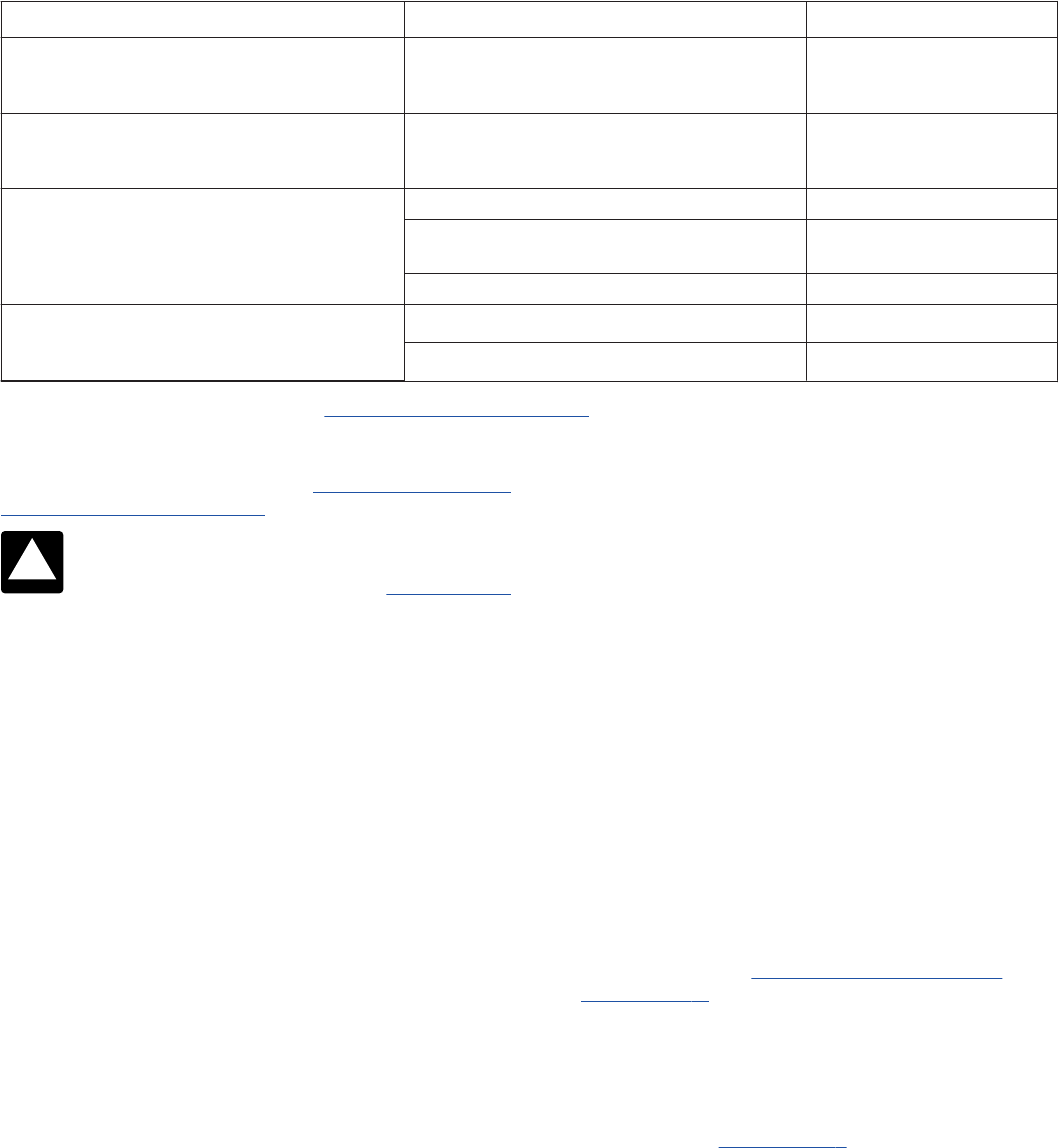
Page 14 of 61 Fileid: … ions/p590a/2023/a/xml/cycle03/source 9:10 - 4-Mar-2024
The type and rule above prints on all proofs including departmental reproduction proofs. MUST be removed before printing.
contributions to your IRA for 2023 and received a distribu-
tion from your IRA in 2023, see Both contributions for
2023 and distributions in 2023, later.
Don’t assume that your modified AGI is the same
as your compensation. Your modified AGI may in-
clude income in addition to your compensation
(discussed earlier) such as interest, dividends, and in-
come from IRA distributions.
Form 1040 or 1040-SR. If you file Form 1040 or
1040-SR, refigure the amount on line 11, the “adjusted
gross income” line, without taking into account any of the
following amounts.
•
IRA deduction.
•
Student loan interest deduction.
•
Foreign earned income exclusion.
•
Foreign housing exclusion or deduction.
•
Exclusion of qualified savings bond interest shown on
Form 8815.
•
Exclusion of employer-provided adoption benefits
shown on Form 8839.
This is your modified AGI.
Form 1040-NR. If you file Form 1040-NR, refigure the
amount on line 11, the “adjusted gross income” line, with-
out taking into account any of the following amounts.
•
IRA deduction.
•
Student loan interest deduction.
CAUTION
!
•
Exclusion of qualified savings bond interest shown on
Form 8815.
•
Exclusion of employer-provided adoption benefits
shown on Form 8839.
This is your modified AGI.
Income from IRA distributions. If you received distri-
butions in 2023 from one or more traditional IRAs and your
traditional IRAs include only deductible contributions, your
distributions are fully taxable and are included in your
modified AGI. See Pub. 590-B for more information on dis-
tributions.
Both contributions for 2023 and distributions in
2023. If all three of the following apply, any IRA distribu-
tions you received in 2023 may be partly tax free and
partly taxable.
•
You received distributions in 2023 from one or more
traditional IRAs.
•
You made contributions to a traditional IRA for 2023.
•
Some of those contributions may be nondeductible
contributions. (See Nondeductible Contributions and
Worksheet 1-2, later.)
If this is your situation, you must figure the taxable part of
the traditional IRA distribution before you can figure your
modified AGI. To do this, you can use Worksheet 1-1 in
Pub. 590-B.
If at least one of the above doesn’t apply, figure your
modified AGI using Worksheet 1-1.
Effect of Modified AGI
1
on Deduction if You Aren’t Covered by a Retirement Plan at
Work
If you aren’t covered by a retirement plan at work, use this table to determine if your modified AGI affects the amount of
your deduction.
IF your filing status is... AND your modified AGI is... THEN you can take...
single,
head of household, or
qualifying surviving spouse
any amount a full deduction.
married filing jointly or separately with a
spouse who isn’t covered by a plan
at work
any amount a full deduction.
married filing jointly with a spouse who is
covered by a plan at work
$218,000 or less a full deduction.
more than $218,000
but less than $228,000
a partial deduction.
$228,000 or more no deduction.
married filing separately with a spouse who is
covered by a plan at work
2
less than $10,000 a partial deduction.
$10,000 or more no deduction.
1
Modified AGI (adjusted gross income). See Modified adjusted gross income (AGI), earlier.
2
You are entitled to the full deduction if you didn’t live with your spouse at any time during the year.
Table 1-3.
14 Chapter 1 Traditional IRAs Publication 590-A (2023)

Page 15 of 61 Fileid: … ions/p590a/2023/a/xml/cycle03/source 9:10 - 4-Mar-2024
The type and rule above prints on all proofs including departmental reproduction proofs. MUST be removed before printing.
How To Figure Your Reduced IRA Deduction
If you or your spouse are covered by an employer retire-
ment plan and you didn’t receive any social security bene-
fits, you can figure your reduced IRA deduction by using
Worksheet 1-2. The Instructions for Form 1040 include a
similar worksheet that you can use instead of the work-
sheet in this publication.
If you or your spouse are covered by an employer retire-
ment plan, and you received any social security benefits,
see Social Security Recipients, earlier.
Note. If you were married and both you and your
spouse contributed to an IRA, figure your deduction and
your spouse's deduction separately.
Reporting Deductible Contributions
If you file Schedule 1 (Form 1040), enter your IRA deduc-
tion on line 20 of that form.
Self-employed. If you are self-employed (a sole proprie-
tor or partner) and have a SIMPLE IRA, enter your deduc-
tion for allowable plan contributions on Schedule 1 (Form
1040), line 16.
Nondeductible Contributions
Although your deduction for IRA contributions may be re-
duced or eliminated, contributions can be made to your
IRA of up to the general limit or, if it applies, the Kay Bailey
Hutchison Spousal IRA limit. The difference between your
total permitted contributions and your IRA deduction, if
any, is your nondeductible contribution.
Example. You are 29 years old and single. In 2023,
you were covered by a retirement plan at work. Your salary
is $72,000. Your modified AGI is $90,000. You make a
$6,500 IRA contribution for 2023. Because you were cov-
ered by a retirement plan and your modified AGI is above
$83,000, you can’t deduct your $6,500 IRA contribution.
You must designate this contribution as a nondeductible
contribution by reporting it on Form 8606.
Repayment of reservist distributions. Nondeductible
contributions may include repayments of qualified reserv-
ist distributions. For more information, see Qualified re-
servist repayments under How Much Can Be Contributed,
earlier.
Difficulty of care payments. For contributions after De-
cember 20, 2019, you are able to elect to increase the
nondeductible IRA contribution limit by some or all of the
amount of difficulty of care payments, which are a type of
qualified foster care payment, received. If you receive diffi-
culty of care payments, then those amounts may increase
the amount of nondeductible IRA contributions you can
make but not above the $6,500 IRA deductible amount
($7,500 if you are age 50 or older). The increase to the
nondeductible IRA contribution limit equals the lesser of (i)
the amount of difficulty of care payments excluded from
gross income, or (ii) the amount by which the deductible
limit for IRA contributions exceeds the amount of the tax-
payer's compensation included in gross income for the tax
year.
Form 8606. To designate contributions as nondeductible,
you must file Form 8606.
You don’t have to designate a contribution as nonde-
ductible until you file your tax return. When you file, you
can even designate otherwise deductible contributions as
nondeductible contributions.
You must file Form 8606 to report nondeductible contri-
butions even if you don’t have to file a tax return for the
year.
A Form 8606 isn’t used for the year that you make
a rollover from a qualified retirement plan to a tra-
ditional IRA and the rollover includes nontaxable
amounts. In those situations, a Form 8606 is completed
for the year you take a distribution from that IRA. See
Form 8606 under Distributions Fully or Partly Taxable in
Pub. 590-B.
CAUTION
!
Worksheet 1-1. Figuring Your Modified AGI Keep for Your Records
Use this worksheet to figure your modified AGI for traditional IRA purposes.
1. Enter your adjusted gross income (AGI) from Form 1040, 1040-SR, or Form 1040-NR,
line 11, figured without taking into account the amount from Schedule 1 (Form 1040),
line 20 ...................................................................... 1.
2. Enter any student loan interest deduction from Schedule 1 (Form 1040), line 21 ..........
2.
3. Enter any foreign earned income exclusion and/or housing exclusion from Form 2555,
line 45 ...................................................................... 3.
4. Enter any foreign housing deduction from Form 2555, line 50 .........................
4.
5. Enter any excludable savings bond interest from Form 8815, line 14 ...................
5.
6. Enter any excluded employer-provided adoption benefits from Form 8839, line 28 .......
6.
7. Add lines 1 through 6. This is your modified AGI for traditional IRA purposes ............
7.
Publication 590-A (2023) Chapter 1 Traditional IRAs 15

Page 16 of 61 Fileid: … ions/p590a/2023/a/xml/cycle03/source 9:10 - 4-Mar-2024
The type and rule above prints on all proofs including departmental reproduction proofs. MUST be removed before printing.
Failure to report nondeductible contributions. If you
don’t report nondeductible contributions, all of the contri-
butions to your traditional IRA will be treated like deducti-
ble contributions when withdrawn. All distributions from
your IRA will be taxed unless you can show, with satisfac-
tory evidence, that nondeductible contributions were
made.
Penalty for overstatement. If you overstate the amount
of nondeductible contributions on your Form 8606 for any
tax year, you must pay a penalty of $100 for each over-
statement, unless it was due to reasonable cause.
Penalty for failure to file Form 8606. You will have to
pay a $50 penalty if you don’t file a required Form 8606,
unless you can prove that the failure was due to reasona-
ble cause.
Tax on earnings on nondeductible contributions. As
long as contributions are within the contribution limits,
none of the earnings or gains on contributions (deductible
or nondeductible) will be taxed until they are distributed.
Cost basis. You will have a cost basis in your traditional
IRA if you made any nondeductible contributions. Your
cost basis is the sum of the nondeductible contributions to
your IRA minus any withdrawals or distributions of nonde-
ductible contributions.
Commonly, distributions from your traditional IRAs
will include both taxable and nontaxable (cost ba-
sis) amounts. See Pub. 590-B for more informa-
tion on distributions.
Recordkeeping. There is a recordkeeping work-
sheet, Appendix A. Summary Record of Tradi-
tional IRA(s) for 2023, that you can use to keep a
record of deductible and nondeductible IRA contributions.
Examples—Worksheet for Reduced
IRA Deduction for 2023
The following examples illustrate the use of Worksheet
1-2.
Example 1. For 2023, you and your spouse file a joint
return on Form 1040. You are both 39 years old. You are
both employed. You are covered by your employer’s retire-
ment plan. However, your spouse isn’t covered by their
employer’s retirement plan. Your salary is $66,000, and
your spouse’s salary is $41,500. You each have a tradi-
tional IRA and your combined modified AGI, which in-
cludes $9,000 interest and dividend income, is $116,500.
CAUTION
!
RECORDS
Because your modified AGI is between $116,000 and
$136,000 and you are covered by an employer plan, you
are subject to the deduction phaseout discussed earlier
under Limit if Covered by Employer Plan.
For 2023, you and your spouse, each, contributed
$6,500 to your respective IRAs. Even though you file a
joint return, you must figure their IRA deductions
separately.
You can take a deduction of only $6,440. Using Work-
sheet 1-2, Figuring Your Reduced IRA Deduction for 2023,
you figure your deductible and nondeductible amounts as
shown on Worksheet 1-2. Figuring Your Reduced IRA De-
duction for 2023—Example 1 Illustrated.
You can choose to treat the $6,440 as either deductible
or nondeductible contributions. You can either leave the
$60 ($6,500 − $6,440) of nondeductible contributions in
your IRA or withdraw them by April 15, 2024. You decide
to treat the $6,440 as a deductible contribution and leave
the $60 of nondeductible contributions in your IRA.
Your spouse can treat all or part of their $6,500 contri-
bution as either deductible or nondeductible. This is be-
cause they aren’t covered by their employer's retirement
plan, and your combined modified AGI isn’t between
$218,000 and $228,000. Therefore, they aren’t subject to
the deduction phaseout discussed earlier under Limit if
Covered by Employer Plan, and they don’t need to use
Worksheet 1-2. Your spouse decides to treat their $6,500
IRA contribution as deductible.
The IRA deductions of $6,440 and $6,500 on the joint
return for you and your spouse total $12,940.
Example 2. For 2023, you and your spouse file a joint
return on Form 1040. You are both 39 years old. Your sal-
ary is $45,000 and you are covered by your employer's re-
tirement plan. Your spouse had no compensation for the
year and was not covered by an employer plan. You con-
tribute $6,500 to your traditional IRA and $6,500 to your
spouse's traditional IRA (a Kay Bailey Hutchison Spousal
IRA). Your combined modified AGI which includes $2,000
interest and dividend income and a large capital gain from
the sale of stock is $220,500.
Because your combined modified AGI is $136,000 or
more and you are covered by your employer's plan, you
can’t deduct any of the contribution to your traditional IRA.
You can either leave the $6,500 of nondeductible contribu-
tions in your IRA or withdraw them by April 15, 2024.
Your spouse figures their IRA deduction as shown on
Worksheet 1-2. Figuring Your Reduced IRA Deduction for
2023—Example 2 Illustrated.
16 Chapter 1 Traditional IRAs Publication 590-A (2023)

Page 17 of 61 Fileid: … ions/p590a/2023/a/xml/cycle03/source 9:10 - 4-Mar-2024
The type and rule above prints on all proofs including departmental reproduction proofs. MUST be removed before printing.
Figuring Your Reduced IRA
Deduction for 2023
Worksheet 1-2.
Keep for Your Records
(Use only if you or your spouse are covered by an employer plan and your modified AGI falls between the two amounts
shown below for your coverage situation and filing status.)
Note. If you were married and both you and your spouse contributed to IRAs, figure your deduction and your spouse's
deduction separately.
.
IF you...
AND your
filing status is...
AND your
modified AGI
is over...
THEN enter on
line 1 below...
are covered by an
employer plan
single or head of
household $73,000 $83,000
married filing jointly or
qualifying surviving
spouse $116,000 $136,000
married filing separately $0 $10,000
aren’t covered by an
employer plan, but your
spouse is covered
married filing jointly $218,000 $228,000
married filing separately $0 $10,000
1.
Enter applicable amount from table above .............................................. 1.
2. Enter your modified AGI (that of both spouses, if married filing jointly) ......................
2.
Note. If line 2 is equal to or more than the amount on line 1, stop here.
Your IRA contributions aren’t deductible. See Nondeductible Contributions, earlier.
3. Subtract line 2 from line 1. If line 3 is $10,000 or more ($20,000 or more if married filing
jointly or qualifying surviving spouse and you are covered by an employer plan), stop
here. You can take a full IRA deduction for contributions of up to $6,500 ($7,500 if you are age 50
or older) or 100% of your (and if married filing jointly, your spouse's) compensation, whichever is
less ............................................................................. 3.
4. Multiply line 3 by the percentage below that applies to you. If the result isn’t a multiple of
$10, round it to the next highest multiple of $10. (For example, $611.40 is rounded to
$620.) However, if the result is less than $200, enter $200.
•
Married filing jointly or qualifying surviving spouse and you are covered by an
employer plan, multiply line 3 by 33% (0.33) (by 38% (0.38) if you are age 50 or
older).
•
All others, multiply line 3 by 65% (0.65) (by 75% (0.75) if you are age 50 or older).
...... 4.
5. Enter your compensation minus any deductions on Schedule 1 (Form 1040), line 15 (deductible
part of self-employment tax), and Schedule 1 (Form 1040), line 16 (self-employed SEP, SIMPLE,
and qualified plans). If you are filing a joint return and your compensation is less than your
spouse's, include your spouse's compensation reduced by his or her traditional IRA and Roth IRA
contributions for this year. If you file Form 1040, 1040-SR, or 1040-NR, don’t reduce your
compensation by any losses from self-employment ...................................... 5.
6. Enter contributions made, or to be made, to your IRA for 2023, but don’t enter more than $6,500
($7,500 if you are age 50 or older). If contributions are more than $6,500 ($7,500 if you are age 50
or older), see Excess Contributions, later .............................................. 6.
7. IRA deduction. Compare lines 4, 5, and 6. Enter the smallest amount (or a smaller amount if you
choose) here and on your Schedule 1 (Form 1040), line 20. If line 6 is more than line 7 and you
want to make a nondeductible contribution, go to line 8 ................................... 7.
8. Nondeductible contribution. Subtract line 7 from line 5 or 6, whichever is smaller.
Enter the result here and on line 1 of your Form 8606 .................................... 8.
Publication 590-A (2023) Chapter 1 Traditional IRAs 17

Page 18 of 61 Fileid: … ions/p590a/2023/a/xml/cycle03/source 9:10 - 4-Mar-2024
The type and rule above prints on all proofs including departmental reproduction proofs. MUST be removed before printing.
Worksheet 1-2.Figuring Your Reduced IRA Deduction for 2023—Example 1 Illustrated
(Use only if you or your spouse are covered by an employer plan and your modified AGI falls between the two amounts
shown below for your coverage situation and filing status.)
Note. If you were married and both you and your spouse contributed to IRAs, figure your deduction and your spouse's
deduction separately.
.
IF you...
AND your
filing status is...
AND your
modified AGI
is over...
THEN enter on
line 1 below...
are covered by an
employer plan
single or head of
household $73,000 $83,000
married filing jointly or
qualifying surviving
spouse $116,000 $136,000
married filing separately $0 $10,000
aren’t covered by an
employer plan, but your
spouse is covered
married filing jointly $218,000 $228,000
married filing separately $0 $10,000
1.
Enter applicable amount from table above .............................................. 1.
136,000
2.
Enter your modified AGI (that of both spouses, if married filing jointly) ...................... 2.
116,500
Note. If line 2 is equal to or more than the amount on line 1, stop here.
Your IRA contributions are not deductible. See Nondeductible Contributions, earlier.
3. Subtract line 2 from line 1. If line 3 is $10,000 or more ($20,000 or more if married filing
jointly or qualifying surviving spouse and you are covered by an employer plan), stop
here. You can take a full IRA deduction for contributions of up to $6,500 ($7,500 if you are age 50
or older) or 100% of your (and if married filing jointly, your spouse's) compensation, whichever is
less ............................................................................. 3.
19,500
4. Multiply line 3 by the percentage below that applies to you. If the result isn’t a multiple of
$10, round it to the next highest multiple of $10. (For example, $611.40 is rounded to
$620.) However, if the result is less than $200, enter $200.
•
Married filing jointly or qualifying surviving spouse and you are covered by an
employer plan, multiply line 3 by 33% (0.33) (by 38% (0.38) if you are age 50 or
older).
•
All others, multiply line 3 by 65% (0.65) (by 75% (0.75) if you are age 50 or older).
...... 4.
6,440
5. Enter your compensation minus any deductions on Schedule 1 (Form 1040), line 15 (deductible
part of self-employment tax), and Schedule 1 (Form 1040), line 16 (self-employed SEP, SIMPLE,
and qualified plans). If you are filing a joint return and your compensation is less than your
spouse's, include your spouse's compensation reduced by his or her traditional IRA and Roth IRA
contributions for this year. If you file Form 1040, 1040-SR, or 1040-NR, don’t reduce your
compensation by any losses from self-employment ...................................... 5.
66,000
6. Enter contributions made, or to be made, to your IRA for 2023, but don’t enter more than $6,500
($7,500 if you are age 50 or older). If contributions are more than $6,500 ($7,500 if you are age 50
or older), see Excess Contributions, later .............................................. 6.
6,500
7. IRA deduction. Compare lines 4, 5, and 6. Enter the smallest amount (or a smaller amount if you
choose) here and on your Schedule 1 (Form 1040), line 20. If line 6 is more than line 7 and you
want to make a nondeductible contribution, go to line 8 ................................... 7.
6,440
8. Nondeductible contribution. Subtract line 7 from line 5 or 6, whichever is smaller.
Enter the result here and on line 1 of your Form 8606 .................................... 8.
60
18 Chapter 1 Traditional IRAs Publication 590-A (2023)

Page 19 of 61 Fileid: … ions/p590a/2023/a/xml/cycle03/source 9:10 - 4-Mar-2024
The type and rule above prints on all proofs including departmental reproduction proofs. MUST be removed before printing.
Worksheet 1-2. Figuring Your Reduced IRA Deduction for 2023—Example 2 Illustrated
(Use only if you or your spouse are covered by an employer plan and your modified AGI falls between the two amounts
shown below for your coverage situation and filing status.)
Note. If you were married and both you and your spouse contributed to IRAs, figure your deduction and your spouse's
deduction separately.
.
IF you...
AND your
filing status is...
AND your
modified AGI
is over...
THEN enter on
line 1 below...
are covered by an
employer plan
single or head of
household $73,000 $83,000
married filing jointly or
qualifying surviving
spouse $116,000 $136,000
married filing separately $0 $10,000
aren’t covered by an
employer plan, but your
spouse is covered
married filing jointly $218,000 $228,000
married filing separately $0 $10,000
1.
Enter applicable amount from table above .............................................. 1.
228,000
2.
Enter your modified AGI (that of both spouses, if married filing jointly) ...................... 2.
220,500
Note. If line 2 is equal to or more than the amount on line 1, stop here.
Your IRA contributions aren’t deductible. See Nondeductible Contributions, earlier.
3. Subtract line 2 from line 1. If line 3 is $10,000 or more ($20,000 or more if married filing
jointly or qualifying surviving spouse and you are covered by an employer plan), stop
here. You can take a full IRA deduction for contributions of up to $6,500 ($7,500 if you are age 50
or older) or 100% of your (and if married filing jointly, your spouse's) compensation, whichever is
less ............................................................................. 3.
7,500
4. Multiply line 3 by the percentage below that applies to you. If the result isn’t a multiple of
$10, round it to the next highest multiple of $10. (For example, $611.40 is rounded to
$620.) However, if the result is less than $200, enter $200.
•
Married filing jointly or qualifying surviving spouse and you are covered by an
employer plan, multiply line 3 by 33% (0.33) (by 38% (0.38) if you are age 50 or
older).
•
All others, multiply line 3 by 65% (0.65) (by 75% (0.75) if you are age 50 or older).
...... 4.
4,880
5. Enter your compensation minus any deductions on Schedule 1 (Form 1040), line 15 (deductible
part of self-employment tax), and Schedule 1 (Form 1040), line 16 (self-employed SEP, SIMPLE,
and qualified plans). If you are filing a joint return and your compensation is less than your
spouse's, include your spouse's compensation reduced by his or her traditional IRA and Roth IRA
contributions for this year. If you file Form 1040, 1040-SR, or 1040-NR, don’t reduce your
compensation by any losses from self-employment ...................................... 5.
39,000
6. Enter contributions made, or to be made, to your IRA for 2023, but don’t enter more than $6,500
($7,500 if you are age 50 or older). If contributions are more than $6,500 ($7,500 if you are age 50
or older), see Excess Contributions, later .............................................. 6.
6,500
7. IRA deduction. Compare lines 4, 5, and 6. Enter the smallest amount (or a smaller amount if you
choose) here and on your Schedule 1 (Form 1040), line 20, whichever applies. If line 6 is more
than line 7 and you want to make a nondeductible contribution, go to line 8 .................. 7.
4,880
8. Nondeductible contribution. Subtract line 7 from line 5 or 6, whichever is smaller.
Enter the result here and on line 1 of your Form 8606 .................................... 8.
1,620
Publication 590-A (2023) Chapter 1 Traditional IRAs 19

Page 20 of 61 Fileid: … ions/p590a/2023/a/xml/cycle03/source 9:10 - 4-Mar-2024
The type and rule above prints on all proofs including departmental reproduction proofs. MUST be removed before printing.
What if You Inherit an IRA?
If you inherit a traditional IRA, you are called a beneficiary.
A beneficiary can be any person or entity the owner choo-
ses to receive the benefits of the IRA after the owner dies.
Beneficiaries of a traditional IRA must include in their
gross income any taxable distributions they receive.
Inherited From Spouse
If you inherit a traditional IRA from your spouse, you gen-
erally have the following three choices.
1. Treat it as your own IRA by designating yourself as the
account owner.
2. Treat it as your own by rolling it over into your IRA, or
to the extent it is taxable, into a:
a. Qualified employer plan,
b. Qualified employee annuity plan (section 403(a)
plan),
c. Tax-sheltered annuity plan (section 403(b) plan),
or
d. Deferred compensation plan of a state or local
government (section 457 plan).
3. Treat yourself as the beneficiary rather than treating
the IRA as your own.
Treating it as your own. You will be considered to have
chosen to treat the IRA as your own if:
•
Contributions (including rollover contributions) are
made to the inherited IRA, or
•
You don’t take the required minimum distribution for a
year as a beneficiary of the IRA.
You will only be considered to have chosen to treat the
IRA as your own if:
•
You are the sole beneficiary of the IRA, and
•
You have an unlimited right to withdraw amounts from
it.
However, if you receive a distribution from your de-
ceased spouse's IRA, you can roll that distribution over
into your own IRA within the 60-day time limit, as long as
the distribution isn’t a required distribution, even if you
aren’t the sole beneficiary of your deceased spouse's IRA.
For more information, see When Must You Withdraw As-
sets? (Required Minimum Distributions) in Pub. 590-B for
more information on required minimum distributions.
Inherited From Someone Other Than
Spouse
If you inherit a traditional IRA from anyone other than your
deceased spouse, you can’t treat the inherited IRA as
your own. This means that you can’t make any contribu-
tions to the IRA. It also means you can’t roll over any
amounts into or out of the inherited IRA. However, you can
make a trustee-to-trustee transfer as long as the IRA into
which amounts are being moved is set up and maintained
in the name of the deceased IRA owner for the benefit of
you as beneficiary. See Pub. 590-B for more information.
Like the original owner, you generally won’t owe tax on
the assets in the IRA until you receive distributions from it.
You must begin receiving distributions from the IRA under
the rules for distributions that apply to beneficiaries.
More information. For more information about rollovers,
required distributions, and inherited IRAs, see:
•
Rollovers, later, under Can You Move Retirement Plan
Assets;
•
When Must You Withdraw Assets? (Required Mini-
mum Distributions) in Pub. 590-B; and
•
IRA Beneficiaries under When Must You Withdraw As-
sets? (Required Minimum Distributions) in Pub. 590-B.
Can You Move Retirement Plan
Assets?
You can transfer, tax free, assets (money or property) from
other retirement programs (including traditional IRAs) to a
traditional IRA. You can make the following kinds of trans-
fers.
•
Transfers from one trustee to another.
•
Rollovers.
•
Transfers incident to a divorce.
This chapter discusses all three kinds of transfers.
Transfers to Roth IRAs. Under certain conditions, you
can move assets from a traditional IRA or from a designa-
ted Roth account to a Roth IRA. For more information
about these transfers, see Converting From Any Tradi-
tional IRA Into a Roth IRA, later in this chapter, and Can
You Move Amounts Into a Roth IRA? in chapter 2.
Transfers to Roth IRAs from other retirement
plans. Under certain conditions, you can move assets
from a qualified retirement plan to a Roth IRA. For more in-
formation, see Can You Move Amounts Into a Roth IRA?
in chapter 2.
20 Chapter 1 Traditional IRAs Publication 590-A (2023)

Page 21 of 61 Fileid: … ions/p590a/2023/a/xml/cycle03/source 9:10 - 4-Mar-2024
The type and rule above prints on all proofs including departmental reproduction proofs. MUST be removed before printing.
Trustee-to-Trustee Transfer
A transfer of funds in your traditional IRA from one trustee
directly to another, either at your request or at the trustee's
request, isn’t a rollover. This includes the situation where
the current trustee issues a check to the new trustee but
gives it to you to deposit. Because there is no distribution
to you, the transfer is tax free. Because it isn’t a rollover, it
isn’t affected by the 1-year waiting period required be-
tween rollovers. This waiting period is discussed later un-
der Rollover From One IRA Into Another.
For information about direct transfers from retirement
programs other than traditional IRAs, see Direct rollover
option, later.
Rollovers
Generally, a rollover is a tax-free distribution to you of cash
or other assets from one retirement plan that you contrib-
ute to another retirement plan within 60 days you received
the payment or distribution. The contribution to the second
retirement plan is called a rollover contribution.
Note. An amount rolled over tax free from one retire-
ment plan to another is generally includible in income
when it is distributed from the second plan.
Kinds of rollovers to a traditional IRA. You can roll
over amounts from the following plans into a traditional
IRA.
•
A traditional IRA.
•
An employer's qualified retirement plan for its employ-
ees.
•
A deferred compensation plan of a state or local gov-
ernment (section 457 plan).
•
A tax-sheltered annuity plan (section 403(b) plan).
Also, see Table 1-4.
Treatment of rollovers. You can’t deduct a rollover con-
tribution, but you must report the rollover distribution on
your tax return as discussed later under Reporting roll-
overs from IRAs and Reporting rollovers from employer
plans.
Rollover notice. A written explanation of rollover treat-
ment must be given to you by the plan (other than an IRA)
making the distribution. See Written explanation to recipi-
ents, later, for more details.
Kinds of rollovers from a traditional IRA. You may be
able to roll over, tax free, a distribution from your traditional
IRA into a qualified plan. These plans include the Federal
Thrift Savings Plan (for federal employees), deferred com-
pensation plans of state or local governments (section
457 plans), and tax-sheltered annuity plans (section
403(b) plans). The part of the distribution that you can roll
over is the part that would otherwise be taxable (includible
in your income). Qualified plans may, but aren’t required
to, accept such rollovers.
Tax treatment of a rollover from a traditional IRA to
an eligible retirement plan other than an IRA. Ordina-
rily, when you have basis in your IRAs, any distribution is
considered to include both nontaxable and taxable
amounts. Without a special rule, the nontaxable portion of
such a distribution couldn’t be rolled over. However, a spe-
cial rule treats a distribution you roll over into an eligible
retirement plan as including only otherwise taxable
amounts if the amount you either leave in your IRAs or
don’t roll over is at least equal to your basis. The effect of
this special rule is to make the amount in your traditional
IRAs that you can roll over to an eligible retirement plan as
large as possible.
Eligible retirement plans. The following are consid-
ered eligible retirement plans.
•
IRAs.
•
Qualified trusts.
•
Qualified employee annuity plans under section
403(a).
•
Deferred compensation plans of state and local gov-
ernments (section 457 plans).
•
Tax-sheltered annuities (section 403(b) annuities).
Time Limit for Making a Rollover
Contribution
You must generally make the rollover contribution by the
60th day after the day you receive the distribution from
your traditional IRA or your employer's plan.
Example. You received an eligible rollover distribution
from your traditional IRA on June 30, 2023, that you intend
to roll over to your 403(b) plan. To postpone including the
distribution in your income, you must complete the rollover
by August 29, 2023, the 60th day following June 30.
The IRS may waive the 60-day requirement where the
failure to do so would be against equity or good con-
science, such as in the event of a casualty, disaster, or
other event beyond your reasonable control. For excep-
tions to the 60-day period, see Ways to get a waiver of the
60-day rollover requirement, later.
Plan loan offset. A plan loan offset is the amount your
employer plan account balance is reduced, or offset, to re-
pay a loan from the plan. How long you have to complete
the rollover of a plan loan offset depends on what kind of
plan loan offset you have. For tax years beginning after
December 31, 2017, if you have a qualified plan loan off-
set, you will have until the due date (including extensions)
for your tax return for the tax year in which the offset oc-
curs to complete your rollover. A qualified plan loan offset
occurs when a plan loan in good standing is offset be-
cause your employer plan terminates, or because you
sever from employment. If your plan loan offset occurs for
any other reason, then you have 60 days from the date the
offset occurs to complete your rollover.
Rollovers completed after the 60-day period. In the
absence of a waiver, amounts not rolled over within the
Publication 590-A (2023) Chapter 1 Traditional IRAs 21

Page 22 of 61 Fileid: … ions/p590a/2023/a/xml/cycle03/source 9:10 - 4-Mar-2024
The type and rule above prints on all proofs including departmental reproduction proofs. MUST be removed before printing.
60-day period don’t qualify for tax-free rollover treatment.
You must treat them as a taxable distribution from either
your IRA or your employer's plan. These amounts are tax-
able in the year distributed, even if the 60-day period ex-
pires in the next year. You may also have to pay a 10% ad-
ditional tax on early distributions as discussed under Early
Distributions in Pub. 590-B.
Unless there is a waiver or an extension of the 60-day
rollover period, any contribution you make to your IRA
more than 60 days after the distribution is a regular contri-
bution, not a rollover contribution.
Example. You received a distribution in late December
2023 from a traditional IRA that you don’t roll over into an-
other traditional IRA within the 60-day limit. You don’t qual-
ify for a waiver. This distribution is taxable in 2023 even
though the 60-day limit wasn’t up until 2024.
Ways to get a waiver of the 60-day rollover require-
ment. There are three ways to obtain a waiver of the
60-day rollover requirement.
•
You qualify for an automatic waiver.
•
You self-certify that you met the requirements of a
waiver.
•
You request and receive a private letter ruling granting
a waiver.
How do you qualify for an automatic waiver? You
qualify for an automatic waiver if all of the following apply.
•
The financial institution receives the funds on your be-
half before the end of the 60-day rollover period.
•
You followed all of the procedures set by the financial
institution for depositing the funds into an IRA or other
eligible retirement plan within the 60-day rollover
Table 1-4. Rollover Chart
The following chart indicates the rollovers that are permitted between various types of plans.
Roll To
Roth IRA Traditional
IRA
SIMPLE
IRA
SEP IRA Govern-
mental
457(b)
Plan
Qualified
Plan
1
(pre-tax)
403(b) Plan
(pre-tax)
Designated
Roth
Account
(401(k),
403(b), or
457(b))
Roth IRA Yes
2
No No No No No No No
Traditional
IRA
Yes
3
Yes
2
Yes,
2 7
after
2 years
Yes
2
Yes
4
Yes Yes No
SIMPLE
IRA
Yes,
3
after 2
years
Yes,
2
after 2
years
Yes
2
Yes,
2
after 2
years
Yes,
4
after 2
years
Yes, after 2
years
Yes, after 2
years
No
SEP IRA
Yes
3
Yes
2
Yes,
2 7
after
2 years
Yes
2
Yes
4
Yes Yes No
Govern-
mental
457(b) Plan
Yes
3
Yes Yes,
7
after 2
years
Yes Yes Yes Yes Yes,
3 5
Roll
From
Qualified
Plan
1
(pre-tax)
Yes
3
Yes Yes,
7
after 2
years
Yes Yes
4
Yes Yes Yes,
3 5
403(b) Plan
(pre-tax)
Yes
3
Yes Yes,
7
after 2
years
Yes Yes
4
Yes Yes Yes,
3 5
Designated
Roth
Account
(401(k),
403(b), or
457(b))
Yes No No No No No No Yes
6
1
Qualified plans include, for example, profit-sharing, 401(k), money purchase, and defined benefit plans.
2
Only one rollover in any 12-month period.
3
Must include in income.
4
Must have separate accounts.
5
Must be an in-plan rollover.
6
Any nontaxable amounts distributed must be rolled over by direct trustee-to-trustee transfer.
7
Applies to rollover contributions after December 18, 2015. For more information regarding retirement plans and rollovers, go to Tax
Information for Retirement Plans.
22 Chapter 1 Traditional IRAs Publication 590-A (2023)

Page 23 of 61 Fileid: … ions/p590a/2023/a/xml/cycle03/source 9:10 - 4-Mar-2024
The type and rule above prints on all proofs including departmental reproduction proofs. MUST be removed before printing.
period (including giving instructions to deposit the
funds into a plan or IRA).
•
The funds aren’t deposited into a plan or IRA within
the 60-day rollover period solely because of an error
on the part of the financial institution.
•
The funds are deposited into a plan or IRA within 1
year from the beginning of the 60-day rollover period.
•
It would have been a valid rollover if the financial insti-
tution had deposited the funds as instructed.
If you don’t qualify for an automatic waiver, you can use
the self-certification procedure to make a late rollover con-
tribution or you can apply to the IRS for a waiver of the
60-day rollover requirement.
How do you self-certify that you qualify for a waiver?
Pursuant to Revenue Procedure 2020-46 in Internal Reve-
nue Bulletin 2020-45, available at IRB 2020-45, you may
make a written certification to a plan administrator or an
IRA trustee that you missed the 60-day rollover contribu-
tion deadline because of one or more of the reasons listed
in Revenue Procedure 2020-46. A plan administrator or an
IRA trustee may rely on the certification in accepting and
reporting receipt of the rollover contribution. You may
make the certification by using the model letter in the ap-
pendix to the revenue procedure or by using a letter that is
substantially similar. There is no IRS fee for self-certifica-
tion. A copy of the certification should be kept in your files
and be available if requested on audit.
Note. A self-certification is not a waiver by the IRS of
the 60-day rollover requirement. If the IRS subsequently
audits your income tax return, it may determine that you
do not qualify for a waiver, in which case you may owe ad-
ditional taxes and penalties.
How do you apply for a waiver and what is the fee?
You can request a ruling according to the procedures out-
lined in Revenue Procedure 2003-16 and Revenue Proce-
dure 2024-4. The appropriate user fee of $12,500 must
accompany every request for a waiver of the 60-day roll-
over requirement (see the user fee chart in Appendix A of
Revenue Procedure 2024-4).
How does the IRS determine whether to grant a
waiver in a private letter ruling? In determining
whether to issue a favorable letter ruling granting a waiver,
the IRS will consider all of the relevant facts and circum-
stances, including:
•
Whether errors were made by the financial institution,
that is, the plan administrator, or IRA trustee, issuer, or
custodian;
•
Whether you were unable to complete the rollover
within the 60-day period due to death, disability, hospi-
talization, incarceration, serious illness, restrictions im-
posed by a foreign country, or postal error;
•
Whether you used the amount distributed; and
•
How much time has passed since the date of the dis-
tribution.
Note. The IRS can waive only the 60-day rollover re-
quirement and not the other requirements for a valid roll-
over contribution. For example, the IRS can’t waive the
IRA one-rollover-per-year rule.
For more information on waivers of the 60-day rollover
requirement, go to RetirementPlans-FAQs.
Amount. The rules regarding the amount that can be rol-
led over within the 60-day time period also apply to the
amount that can be deposited due to a waiver. For exam-
ple, if you received $6,000 from your IRA, the most that
you can deposit into an eligible retirement plan due to a
waiver is $6,000.
Extension of rollover period. If an amount distributed to
you from a traditional IRA or a qualified employer retire-
ment plan is a frozen deposit at any time during the 60-day
period allowed for a rollover, two special rules extend the
rollover period.
•
The period during which the amount is a frozen de-
posit isn’t counted in the 60-day period.
•
The 60-day period can’t end earlier than 10 days after
the deposit is no longer frozen.
Frozen deposit. This is any deposit that can’t be with-
drawn from a financial institution because of either of the
following reasons.
•
The financial institution is bankrupt or insolvent.
•
The state where the institution is located restricts with-
drawals because one or more financial institutions in
the state are (or are about to be) bankrupt or insolvent.
Rollover From One IRA Into Another
You can withdraw, tax free, all or part of the assets from
one traditional IRA if you reinvest them within 60 days in
the same or another traditional IRA. Because this is a roll-
over, you can’t deduct the amount that you reinvest in an
IRA.
You may be able to treat a contribution made to
one type of IRA as having been made to a differ-
ent type of IRA. This is called recharacterizing the
contribution. See Recharacterizations in this chapter for
more information.
Waiting period between rollovers. Generally, if you
make a tax-free rollover of any part of a distribution from a
traditional IRA, you can’t, within a 1-year period, make a
tax-free rollover of any later distribution from that same
IRA. You also can’t make a tax-free rollover of any amount
distributed, within the same 1-year period, from the IRA
into which you made the tax-free rollover.
The 1-year period begins on the date you receive the
IRA distribution, not on the date you roll it over into an IRA.
Rules apply to the number of rollovers you can have with
your traditional IRAs. See Application of one-roll-
over-per-year limitation, later.
Example. You have two traditional IRAs, IRA-1 and
IRA-2. In 2023, you made a tax-free rollover of a
TIP
Publication 590-A (2023) Chapter 1 Traditional IRAs 23

Page 24 of 61 Fileid: … ions/p590a/2023/a/xml/cycle03/source 9:10 - 4-Mar-2024
The type and rule above prints on all proofs including departmental reproduction proofs. MUST be removed before printing.
distribution from IRA-1 into a new traditional IRA (IRA-3).
You can’t, within 1 year of the distribution from IRA-1,
make a tax-free rollover of any distribution from either
IRA-1 or IRA-3 into another traditional IRA.
For 2023, the rollover from IRA-1 into IRA-3 prevents
you from making a tax-free rollover from IRA-2 into any
other traditional IRA. This is because in 2023 you are only
allowed to make one rollover within a 1-year period. So
when you make a rollover from IRA-1 to IRA-3, you can’t
make a rollover from IRA-2 to any other traditional IRA.
Exception. An IRA distribution made from a failed fi-
nancial institution by the Federal Deposit Insurance Cor-
poration as receiver is not treated as a rollover for purpo-
ses of the one-rollover-per-year limitation, provided:
1. Neither the failed financial institution nor the depositor
initiated the distribution, and
2. No financial institution has assumed the IRAs of the
failed financial institution.
Application of one-rollover-per-year limitation. You
can make only one rollover from an IRA to another (or the
same) IRA in any 1-year period regardless of the number
of IRAs you own. The limit will apply by aggregating all of
an individual's IRAs, including SEP and SIMPLE IRAs as
well as traditional and Roth IRAs, effectively treating them
as one IRA for purposes of the limit. However,
trustee-to-trustee transfers between IRAs aren’t limited
and rollovers from traditional IRAs to Roth IRAs (conver-
sions) aren’t limited.
Example. You have three traditional IRAs: IRA-1,
IRA-2, and IRA-3. You didn’t take any distributions from
your IRAs in 2023. On January 1, 2024, you took a distri-
bution from IRA-1 and rolled it over into IRA-2 on the same
day. For 2024, you can’t roll over any other 2024 IRA distri-
bution, including a rollover distribution involving IRA-3.
This wouldn’t apply to a conversion.
The same property must be rolled over. If property is
distributed to you from an IRA and you complete the roll-
over by contributing property to an IRA, your rollover is tax
free only if the property you contribute is the same prop-
erty that was distributed to you.
Partial rollovers. If you withdraw assets from a tradi-
tional IRA, you can roll over part of the withdrawal tax free
and keep the rest of it. The amount you keep will generally
be taxable (except for the part that is a return of nonde-
ductible contributions). The amount you keep may be sub-
ject to the 10% additional tax on early distributions dis-
cussed later under What Acts Result in Penalties or
Additional Taxes.
Required distributions. Amounts that must be distrib-
uted during a particular year under the required distribu-
tion rules (discussed in Pub. 590-B) aren’t eligible for roll-
over treatment.
Inherited IRAs. If you inherit a traditional IRA from your
spouse, you can generally roll it over, or you can choose to
make the inherited IRA your own as discussed earlier un-
der What if You Inherit an IRA.
Reporting rollovers from IRAs. Report any rollover
from one traditional IRA to the same or another traditional
IRA on Form 1040, 1040-SR, or 1040-NR, lines 4a and
4b.
Enter the total amount of the distribution on Form 1040,
1040-SR, or 1040-NR, line 4a. If the total amount on Form
1040, 1040-SR, or 1040-NR, line 4a, was rolled over, en-
ter zero on Form 1040, 1040-SR, or 1040-NR, line 4b. If
the total distribution wasn't rolled over, enter the taxable
portion of the part that wasn't rolled over on Form 1040,
1040-SR, or 1040-NR, line 4b. Enter "Rollover" next to
line 4b. See your tax return instructions.
If you rolled over the distribution into a qualified plan
(other than an IRA) or you make the rollover in 2024, at-
tach a statement explaining what you did.
For information on how to figure the taxable portion,
see Are Distributions Taxable? in Pub. 590-B.
Rollover From Employer's Plan Into an IRA
You can roll over into a traditional IRA all or part of an eligi-
ble rollover distribution you receive from your (or your de-
ceased spouse's):
•
Employer's qualified pension, profit-sharing, or stock
bonus plan;
•
Annuity plan;
•
Tax-sheltered annuity plan (section 403(b) plan); or
•
Governmental deferred compensation plan (section
457 plan).
A qualified plan is one that meets the requirements of
the Internal Revenue Code.
Eligible rollover distribution. Generally, an eligible roll-
over distribution is any distribution of all or part of the bal-
ance to your credit in a qualified retirement plan except the
following.
1. A required minimum distribution (explained under
When Must You Withdraw Assets? (Required Mini-
mum Distributions) in Pub. 590-B).
2. A hardship distribution.
3. Any of a series of substantially equal periodic distribu-
tions paid at least once a year over:
a. Your lifetime or life expectancy,
b. The lifetimes or life expectancies of you and your
beneficiary, or
c. A period of 10 years or more.
4. Corrective distributions of excess contributions or ex-
cess deferrals, and any income allocable to the ex-
cess, or of excess annual additions and any allocable
gains.
5. A loan treated as a distribution because it doesn’t sat-
isfy certain requirements either when made or later
24 Chapter 1 Traditional IRAs Publication 590-A (2023)

Page 25 of 61 Fileid: … ions/p590a/2023/a/xml/cycle03/source 9:10 - 4-Mar-2024
The type and rule above prints on all proofs including departmental reproduction proofs. MUST be removed before printing.
(such as upon default), unless the participant's ac-
crued benefits are reduced (offset) to repay the loan.
See the discussion earlier of plan loan offsets (includ-
ing qualified plan loan offsets) under Time Limit for
Making a Rollover Contribution.
6. Dividends on employer securities.
7. The cost of life insurance coverage.
Your rollover into a traditional IRA may include both
amounts that would be taxable and amounts that wouldn’t
be taxable if they were distributed to you, but not rolled
over. To the extent the distribution is rolled over into a tra-
ditional IRA, it isn’t includible in your income.
Any nontaxable amounts that you roll over into
your traditional IRA become part of your basis
(cost) in your IRAs. To recover your basis when
you take distributions from your IRA, you must complete
Form 8606 for the year of the distribution. See Form 8606
under Distributions Fully or Partly Taxable in Pub. 590-B.
Rollover by nonspouse beneficiary. If you are a desig-
nated beneficiary (other than a surviving spouse) of a de-
ceased employee, you can roll over all or part of an eligi-
ble rollover distribution from one of the types of plans
listed above into a traditional IRA. You must make the roll-
over by a direct trustee-to-trustee transfer into an inherited
IRA.
You will determine your required minimum distributions
in years after you make the rollover based on whether the
employee died before his or her required beginning date
for taking distributions from the plan. For more informa-
tion, see Distributions after the employee's death under
Tax on Excess Accumulation in Pub. 575.
Written explanation to recipients. Before making an el-
igible rollover distribution, the administrator of a qualified
retirement plan must provide you with a written explana-
tion. It must tell you about all of the following.
•
Your right to have the distribution paid tax free directly
to a traditional IRA or another eligible retirement plan.
•
The requirement to withhold tax from the distribution if
it isn’t paid directly to a traditional IRA or another eligi-
ble retirement plan.
•
The tax treatment of any part of the distribution that
you roll over to a traditional IRA or another eligible re-
tirement plan within 60 days after you receive the dis-
tribution.
•
Other qualified retirement plan rules, if they apply, in-
cluding those for lump-sum distributions, alternate
payees, and cash or deferred arrangements.
•
How the plan receiving the distribution differs from the
plan making the distribution in its restrictions and tax
consequences.
The plan administrator must provide you with this writ-
ten explanation no earlier than 90 days and no later than
30 days before the distribution is made.
TIP
However, you can choose to have a distribution made
less than 30 days after the explanation is provided as long
as both of the following requirements are met.
•
You are given at least 30 days after the notice is provi-
ded to consider whether you want to elect a direct roll-
over.
•
You are given information that clearly states that you
have this 30-day period to make the decision.
Contact the plan administrator if you have any questions
regarding this information.
Withholding requirement. Generally, if an eligible roll-
over distribution is paid directly to you, the payer must
withhold 20% of it. This applies even if you plan to roll over
the distribution to a traditional IRA. You can avoid with-
holding by choosing the direct rollover option, discussed
later.
Exceptions. The payer doesn’t have to withhold from
an eligible rollover distribution paid to you if either of the
following conditions applies.
•
The distribution and all previous eligible rollover distri-
butions you received during your tax year from the
same plan (or, at the payer's option, from all your em-
ployer's plans) total less than $200.
•
The distribution consists solely of employer securities,
plus cash of $200 or less in lieu of fractional shares.
The amount withheld is part of the distribution. If
you roll over less than the full amount of the distri-
bution, you may have to include in your income
the amount you don’t roll over. However, you can make up
the amount withheld with funds from other sources.
Other withholding rules. The 20% withholding re-
quirement doesn’t apply to distributions that aren’t eligible
rollover distributions. However, other withholding rules ap-
ply to these distributions. The rules that apply depend on
whether the distribution is a periodic distribution or a non-
periodic distribution. For either of these types of distribu-
tions, you can still choose not to have tax withheld. For
more information, see Pub. 505.
Direct rollover option. Your employer's qualified plan
must give you the option to have any part of an eligible
rollover distribution paid directly to a traditional IRA. The
plan isn’t required to give you this option if your eligible
rollover distributions are expected to total less than $200
for the year.
Withholding. If you choose the direct rollover option,
no tax is withheld from any part of the designated distribu-
tion that is directly paid to the trustee of the traditional IRA.
If any part is paid to you, the payer must withhold 20%
of that part's taxable amount.
Choosing an option. Table 1-5 may help you decide
which distribution option to choose. Carefully compare the
effects of each option.
CAUTION
!
Publication 590-A (2023) Chapter 1 Traditional IRAs 25

Page 26 of 61 Fileid: … ions/p590a/2023/a/xml/cycle03/source 9:10 - 4-Mar-2024
The type and rule above prints on all proofs including departmental reproduction proofs. MUST be removed before printing.
Comparison of Payment to You Versus Di-
rect Rollover
Affected item
Result of a payment to
you
Result of a
direct rollover
Withholding
The payer must withhold
20% of the taxable part.
There is no
withholding.
Additional tax
If you are under age 59
1
/2,
a 10% additional tax may
apply to the taxable part
(including an amount
equal to the tax withheld)
that isn’t rolled over.
There is no 10%
additional tax. See
Early Distributions in
Pub. 590-B.
When to report
as income
Any taxable part
(including the taxable part
of any amount withheld)
not rolled over is income
to you in the year paid.
Any taxable part isn’t
income to you until
later distributed to you
from the IRA.
If you decide to roll over any part of a distribution,
the direct rollover option will generally be to your
advantage. This is because you won’t have 20%
withholding or be subject to the 10% additional tax under
that option.
If you have a lump-sum distribution and don’t plan to roll
over any part of it, the distribution may be eligible for spe-
cial tax treatment that could lower your tax for the distribu-
tion year. In that case, you may want to see Pub. 575 and
Form 4972, Tax on Lump-Sum Distributions, and its in-
structions to determine whether your distribution qualifies
for special tax treatment and, if so, to figure your tax under
the special methods.
You can then compare any advantages from using Form
4972 to figure your tax on the lump-sum distribution with
any advantages from rolling over all or part of the distribu-
tion. However, if you roll over any part of the lump-sum dis-
tribution, you can’t use the Form 4972 special tax treat-
ment for any part of the distribution.
Contributions you made to your employer's plan.
You can roll over a distribution of voluntary deductible em-
ployee contributions (DECs) you made to your employer's
plan. Prior to January 1, 1987, employees could make and
deduct these contributions to certain qualified employers'
plans and government plans. These aren’t the same as an
employee's elective contributions to a 401(k) plan, which
aren’t deductible by the employee.
If you receive a distribution from your employer's quali-
fied plan of any part of the balance of your DECs and the
earnings from them, you can roll over any part of the distri-
bution.
No waiting period between rollovers. The once-a-year
limit on IRA-to-IRA rollovers doesn’t apply to eligible roll-
over distributions from an employer plan. You can roll over
more than one distribution from the same employer plan
within a year.
IRA as a holding account (conduit IRA) for rollovers
to other eligible plans. If you receive an eligible rollover
distribution from your employer's plan, you can roll over
part or all of it into one or more conduit IRAs. You can later
Table 1-5.
TIP
roll over those assets into a new employer's plan. You can
use a traditional IRA as a conduit IRA. You can roll over
part or all of the conduit IRA to a qualified plan, even if you
make regular contributions to it or add funds from sources
other than your employer's plan. However, if you make
regular contributions to the conduit IRA or add funds from
other sources, the qualified plan into which you move
funds won’t be eligible for any optional tax treatment for
which it might have otherwise qualified.
Property and cash received in a distribution. If you
receive both property and cash in an eligible rollover distri-
bution, you can roll over part or all of the property, part or
all of the cash, or any combination of the two that you
choose.
The same property (or sales proceeds) must be
rolled over. If you receive property in an eligible rollover
distribution from a qualified retirement plan, you can’t keep
the property and contribute cash to a traditional IRA in
place of the property. You must either roll over the property
or sell it and roll over the proceeds, as explained next.
Sale of property received in a distribution from a
qualified plan. Instead of rolling over a distribution of
property other than cash, you can sell all or part of the
property and roll over the amount you receive from the
sale (the proceeds) into a traditional IRA. You can’t keep
the property and substitute your own funds for property
you received.
Example. You receive a total distribution from your em-
ployer's plan consisting of $10,000 cash and $15,000
worth of property. You decide to keep the property. You
can roll over to a traditional IRA the $10,000 cash re-
ceived, but you can’t roll over an additional $15,000 repre-
senting the value of the property you choose not to sell.
Treatment of gain or loss. If you sell the distributed
property and roll over all the proceeds into a traditional
IRA, no gain or loss is recognized. The sale proceeds (in-
cluding any increase in value) are treated as part of the
distribution and aren’t included in your gross income.
Example. On September 6 you received a lump-sum
distribution from your employer's retirement plan of
$50,000 in cash and $50,000 in stock. The stock wasn’t
stock of your employer. On September 24, you sold the
stock for $60,000. On October 6, you rolled over $110,000
in cash ($50,000 from the original distribution and $60,000
from the sale of stock). You don’t include the $10,000 gain
from the sale of stock as part of your income because you
rolled over the entire amount into a traditional IRA.
Note. Special rules may apply to distributions of em-
ployer securities. For more information, see Figuring the
Taxable Amount under Taxation of Nonperiodic Payments
in Pub. 575.
Partial rollover. If you received both cash and property,
or just property, but didn’t roll over the entire distribution,
see Rollovers in Pub. 575.
26 Chapter 1 Traditional IRAs Publication 590-A (2023)

Page 27 of 61 Fileid: … ions/p590a/2023/a/xml/cycle03/source 9:10 - 4-Mar-2024
The type and rule above prints on all proofs including departmental reproduction proofs. MUST be removed before printing.
Life insurance contract. You can’t roll over a life insur-
ance contract from a qualified plan into a traditional IRA.
Distributions received by a surviving spouse. If you
receive an eligible rollover distribution (defined earlier)
from your deceased spouse's eligible retirement plan (de-
fined earlier), you can roll over part or all of it into a tradi-
tional IRA. You can also roll over all or any part of a distri-
bution of DECs.
Distributions under divorce or similar proceedings
(alternate payees). If you are the spouse or former
spouse of an employee and you receive a distribution from
a qualified retirement plan as a result of divorce or similar
proceedings, you may be able to roll over all or part of it
into a traditional IRA. To qualify, the distribution must be:
•
One that would have been an eligible rollover distribu-
tion (defined earlier) if it had been made to the em-
ployee, and
•
Made under a qualified domestic relations order.
Qualified domestic relations order. A domestic rela-
tions order is a judgment, decree, or order (including ap-
proval of a property settlement agreement) that is issued
under the domestic relations law of a state. A “qualified
domestic relations order” gives to an alternate payee (a
spouse, former spouse, child, or dependent of a partici-
pant in a retirement plan) the right to receive all or part of
the benefits that would be payable to a participant under
the plan. The order requires certain specific information,
and it can’t alter the amount or form of the benefits of the
plan.
Tax treatment if all of an eligible distribution isn’t
rolled over. Any part of an eligible rollover distribution
that you keep is taxable in the year you receive it. If you
don’t roll over any of it, special rules for lump-sum distribu-
tions may apply. See Lump-Sum Distributions under Taxa-
tion of Nonperiodic Payments in Pub. 575. The 10% addi-
tional tax on early distributions, discussed later under
What Acts Result in Penalties or Additional Taxes, doesn’t
apply.
Keogh plans and rollovers. If you are self-employed,
you are generally treated as an employee for rollover pur-
poses. Consequently, if you receive an eligible rollover dis-
tribution from a Keogh plan (a qualified plan with at least
one self-employed participant), you can roll over all or part
of the distribution (including a lump-sum distribution) into
a traditional IRA. For information on lump-sum distribu-
tions, see Lump-Sum Distributions under Taxation of Non-
periodic Payments in Pub. 575.
More information. For more information about Keogh
plans, see chapter 4 of Pub. 560.
Distribution from a tax-sheltered annuity. If you re-
ceive an eligible rollover distribution from a tax-sheltered
annuity plan (section 403(b) plan), you can roll it over into
a traditional IRA.
Receipt of property other than money. If you re-
ceive property other than money, you can sell the property
and roll over the proceeds as discussed earlier.
Rollover from bond purchase plan. If you redeem re-
tirement bonds that were distributed to you under a quali-
fied bond purchase plan, you can roll over tax free into a
traditional IRA the part of the amount you receive that is
more than your basis in the retirement bonds.
Reporting rollovers from employer plans. Enter the
total distribution (before income tax or other deductions
were withheld) on Form 1040, 1040-SR, or 1040-NR,
line 5a. This amount should be shown in box 1 of Form
1099-R. From this amount, subtract any contributions
(usually shown in box 5 of Form 1099-R) that were taxable
to you when made. From that result, subtract the amount
that was rolled over either directly or within 60 days of re-
ceiving the distribution. Enter the remaining amount, even
if zero, on Form 1040, 1040-SR, or 1040-NR, line 5b. Also,
enter "Rollover" next to line 5b of Form 1040, 1040-SR, or
1040-NR.
Transfers Incident to Divorce
If an interest in a traditional IRA is transferred from your
spouse or former spouse to you by a divorce or separate
maintenance decree or a written document related to such
a decree, the interest in the IRA, starting from the date of
the transfer, is treated as your IRA. The transfer is tax free.
For information about transfers of interests in employer
plans, see Distributions under divorce or similar proceed-
ings (alternate payees) under Rollover From Employer's
Plan Into an IRA, earlier.
Transfer methods. There are two commonly used meth-
ods of transferring IRA assets to a spouse or former
spouse. The methods are:
•
Changing the name on the IRA, and
•
Making a direct transfer of IRA assets.
Changing the name on the IRA. If all the assets are
to be transferred, you can make the transfer by changing
the name on the IRA from your name to the name of your
spouse or former spouse.
Direct transfer. Under this method, you direct the
trustee of the traditional IRA to transfer the affected assets
directly to the trustee of a new or existing traditional IRA
set up in the name of your spouse or former spouse.
If your spouse or former spouse is allowed to keep their
portion of the IRA assets in your existing IRA, you can di-
rect the trustee to transfer the assets you are permitted to
keep directly to a new or existing traditional IRA set up in
your name. The name on the IRA containing your spou-
se's or former spouse's portion of the assets would then
be changed to show their ownership.
If the transfer results in a change in the basis of
the traditional IRA of either spouse, both spouses
must file Form 8606 and follow the directions in
the instructions for that form.
CAUTION
!
Publication 590-A (2023) Chapter 1 Traditional IRAs 27

Page 28 of 61 Fileid: … ions/p590a/2023/a/xml/cycle03/source 9:10 - 4-Mar-2024
The type and rule above prints on all proofs including departmental reproduction proofs. MUST be removed before printing.
Converting From Any Traditional IRA
Into a Roth IRA
Allowable conversions. You can withdraw all or part of
the assets from a traditional IRA and reinvest them (within
60 days) in a Roth IRA. The amount that you withdraw and
timely contribute (convert) to the Roth IRA is called a con-
version contribution. If properly (and timely) rolled over,
the 10% additional tax on early distributions won’t apply.
However, a part or all of the distribution from your tradi-
tional IRA may be included in gross income and subjected
to ordinary income tax.
You must roll over into the Roth IRA the same property
you received from the traditional IRA. You can roll over
part of the withdrawal into a Roth IRA and keep the rest of
it. The amount you keep will generally be taxable (except
for the part that is a return of nondeductible contributions)
and may be subject to the 10% additional tax on early dis-
tributions. See When Can You Withdraw or Use Assets,
later, for more information on distributions from traditional
IRAs and Early Distributions in Pub. 590-B for more infor-
mation on the tax on early distributions.
Periodic distributions. If you started taking substan-
tially equal periodic payments from a traditional IRA, you
can convert the amounts in the traditional IRA to a Roth
IRA and then continue the periodic payments. The 10%
additional tax on early distributions won’t apply even if the
distributions aren’t qualified distributions (as long as they
are part of a series of substantially equal periodic pay-
ments).
Required distributions. You can’t convert amounts that
must be distributed from your traditional IRA for a particu-
lar year (including the calendar year in which you reach
age 73) under the required distribution rules (discussed in
Pub. 590-B).
Income. You must include in your gross income distribu-
tions from a traditional IRA that you would have had to in-
clude in income if you hadn’t converted them into a Roth
IRA. These amounts are normally included in income on
your return for the year that you converted them from a tra-
ditional IRA to a Roth IRA.
You don’t include in gross income any part of a distribu-
tion from a traditional IRA that is a return of your basis, as
discussed under Are Distributions Taxable in Pub. 590-B.
If you must include any amount in your gross in-
come, you may have to increase your withholding
or make estimated tax payments. See Pub. 505,
Tax Withholding and Estimated Tax.
Recharacterizations
You may be able to treat a contribution made to one type
of IRA as having been made to a different type of IRA.
This is called recharacterizing the contribution.
To recharacterize a contribution, you must generally
have the contribution transferred from the first IRA (the
one to which it was made) to the second IRA in a
CAUTION
!
trustee-to-trustee transfer. If the transfer is made by the
due date (including extensions) for your tax return for the
tax year for which the contribution was made, you can
elect to treat the contribution as having been originally
made to the second IRA instead of to the first IRA. If you
recharacterize your contribution, you must do all three of
the following.
•
Include in the transfer any net income allocable to the
contribution. If there was a loss, the net income you
must transfer may be a negative amount.
•
Report the recharacterization on your tax return for the
year during which the contribution was made.
•
Treat the contribution as having been made to the sec-
ond IRA on the date that it was actually made to the
first IRA.
No recharacterizations of conversions made in 2018
or later. A conversion of a traditional IRA to a Roth IRA,
and a rollover from any other eligible retirement plan to a
Roth IRA, made in tax years beginning after December
31, 2017, cannot be recharacterized as having been made
to a traditional IRA. If you made a conversion in the 2017
tax year, you had until the due date (including extensions)
for filing the return for that tax year to recharacterize it.
No deduction allowed. You can’t deduct the contribution
to the first IRA. Any net income you transfer with the re-
characterized contribution is treated as earned in the sec-
ond IRA. The contribution won’t be treated as having been
made to the second IRA to the extent any deduction was
allowed for the contribution to the first IRA.
Conversion by rollover from traditional to Roth IRA.
You receive a distribution from a traditional IRA in 1 tax
year. You then roll it over into a Roth IRA within 60 days of
the distribution from the traditional IRA but in the next
year. For recharacterization purposes, you would treat this
transaction as a contribution to the Roth IRA in the year of
the distribution from the traditional IRA.
Effect of previous tax-free transfers. If an amount has
been moved from one IRA to another in a tax-free transfer,
such as a rollover, you generally can’t recharacterize the
amount that was transferred. However, see Traditional IRA
mistakenly moved to SIMPLE IRA next.
Traditional IRA mistakenly moved to SIMPLE IRA.
If you mistakenly roll over or transfer an amount from a tra-
ditional IRA to a SIMPLE IRA, you can later recharacterize
the amount as a contribution to another traditional IRA.
Recharacterizing excess contributions. You can re-
characterize only actual contributions. If you are applying
excess contributions for prior years as current contribu-
tions, you can recharacterize them only if the recharacteri-
zation would still be timely with respect to the tax year for
which the applied contributions were actually made.
Example. You contributed more than you were entitled
to in 2023. You can’t recharacterize the excess contribu-
tions you made in 2023 after April 15, 2024, because con-
tributions after that date are no longer timely for 2023.
28 Chapter 1 Traditional IRAs Publication 590-A (2023)

Page 29 of 61 Fileid: … ions/p590a/2023/a/xml/cycle03/source 9:10 - 4-Mar-2024
The type and rule above prints on all proofs including departmental reproduction proofs. MUST be removed before printing.
Recharacterizing employer contributions. You can’t
recharacterize employer contributions (including elective
deferrals) under a SEP or SIMPLE plan as contributions to
another IRA. SEPs are discussed in chapter 2 of Pub.
560. SIMPLE plans are discussed in chapter 3 of Pub.
560.
Recharacterization not counted as rollover. The re-
characterization of a contribution is not treated as a roll-
over for purposes of the 1-year waiting period described
earlier in this chapter under Rollover From One IRA Into
Another. This is true even if the contribution would have
been treated as a rollover contribution by the second IRA
if it had been made directly to the second IRA rather than
as a result of a recharacterization of a contribution to the
first IRA.
How Do You Recharacterize a Contribution?
To recharacterize a contribution, you must notify both the
trustee of the first IRA (the one to which the contribution
was actually made) and the trustee of the second IRA (the
one to which the contribution is being moved) that you
have elected to treat the contribution as having been
made to the second IRA rather than the first. You must
make the notifications by the date of the transfer. Only one
notification is required if both IRAs are maintained by the
same trustee. The notification(s) must include all of the fol-
lowing information.
•
The type and amount of the contribution to the first
IRA that is to be recharacterized.
•
The date on which the contribution was made to the
first IRA and the year for which it was made.
•
A direction to the trustee of the first IRA to transfer in a
trustee-to-trustee transfer the amount of the contribu-
tion and any net income (or loss) allocable to the con-
tribution to the trustee of the second IRA.
•
The name of the trustee of the first IRA and the name
of the trustee of the second IRA.
•
Any additional information needed to make the trans-
fer.
In most cases, the net income you must transfer is de-
termined by your IRA trustee or custodian. If you need to
determine the applicable net income on IRA contributions
made after 2023 that are recharacterized, use Worksheet
1-3. See Regulations section 1.408A-5 for more informa-
tion.
Timing. The election to recharacterize and the transfer
must both take place on or before the due date (including
extensions) for filing your tax return for the tax year for
which the contribution was made to the first IRA.
Extension. Ordinarily, you must choose to recharac-
terize a contribution by the due date of the return or the
due date including extensions. However, if you miss this
deadline, you can still recharacterize a contribution if:
•
Your return was timely filed for the year the choice
should have been made; and
•
You take appropriate corrective action within 6 months
from the due date of your return, excluding extensions.
For returns due April 15, 2024, this period ends on Oc-
tober 15, 2024. When the date for doing any act for tax
purposes falls on a Saturday, Sunday, or legal holiday,
the due date is delayed until the next business day.
Appropriate corrective action consists of:
•
Notifying the trustee(s) of your intent to recharacterize,
•
Providing the trustee with all necessary information,
and
•
Having the trustee transfer the contribution.
Once this is done, you must amend your return to show
the recharacterization. You have until the regular due date
for amending a return to do this. Report the recharacteri-
zation on the amended return and write “Filed pursuant to
section 301.9100-2” on the return. File the amended re-
turn at the same address you filed the original return.
Determining the Amount of Net Income Due
to an IRA Contribution and Total Amount To
Be Recharacterized
Worksheet 1-3.
Keep for Your Records
1. Enter the amount of your IRA contribution for 2024 to be recharacterized ................
1.
2. Enter the fair market value of the IRA immediately prior to the recharacterization (include any
distributions, transfers, or recharacterizations made while the contribution was in the
account) ..................................................................... 2.
3. Enter the fair market value of the IRA immediately prior to the time the contribution being
recharacterized was made, including the amount of such contribution and any other
contributions, transfers, or recharacterizations made while the contribution was in the
account ...................................................................... 3.
4. Subtract line 3 from line 2 .......................................................
4.
5. Divide line 4 by line 3. Enter the result as a decimal (rounded to at least three places) ......
5.
6. Multiply line 1 by line 5. This is the net income attributable to the contribution to be
recharacterized ................................................................ 6.
7. Add lines 1 and 6. This is the amount of the IRA contribution plus the net income attributable
to it to be recharacterized ....................................................... 7.
Publication 590-A (2023) Chapter 1 Traditional IRAs 29

Page 30 of 61 Fileid: … ions/p590a/2023/a/xml/cycle03/source 9:10 - 4-Mar-2024
The type and rule above prints on all proofs including departmental reproduction proofs. MUST be removed before printing.
Decedent. The election to recharacterize can be
made on behalf of a deceased IRA owner by the executor,
administrator, or other person responsible for filing the de-
cedent's final income tax return.
Election can’t be changed. After the transfer has taken
place, you can’t change your election to recharacterize.
Same trustee. Recharacterizations made with the same
trustee can be made by redesignating the first IRA as the
second IRA, rather than transferring the account balance.
Reporting a Recharacterization
If you elect to recharacterize a contribution to one IRA as a
contribution to another IRA, you must report the recharac-
terization on your tax return as directed by Form 8606 and
its instructions. You must treat the contribution as having
been made to the second IRA.
More than one IRA. If you have more than one IRA, fig-
ure the amount to be recharacterized only on the account
from which you withdraw the contribution.
When Can You Withdraw or
Use Assets?
You can withdraw or use your traditional IRA assets at any
time. However, a 10% additional tax generally applies if
you withdraw or use IRA assets before you reach age
59
1
/2. This is explained under Age 59
1
/2 Rule under Early
Distributions in Pub. 590-B.
You can generally make a tax-free withdrawal of contri-
butions if you do it before the due date for filing your tax
return for the year in which you made them. This means
that, even if you are under age 59
1
/2, the 10% additional
tax may not apply. These withdrawals are explained later.
Contributions Returned Before Due
Date of Return
If you made IRA contributions in 2023, you can withdraw
them tax free by the due date of your return. If you have an
extension of time to file your return, you can withdraw
them tax free by the extended due date. You can do this if,
for each contribution you withdraw, both of the following
conditions apply.
•
You didn’t take a deduction for the contribution.
•
You withdraw any interest or other income earned on
the contribution. You can take into account any loss on
the contribution while it was in the IRA when calculat-
ing the amount that must be withdrawn. If there was a
loss, the net income earned on the contribution may
be a negative amount.
Note. If you timely filed your 2023 tax return without
withdrawing a contribution that you made in 2023, you can
still have the contribution returned to you within 6 months
of the due date of your 2023 tax return, excluding exten-
sions. If you do, file an amended return with “Filed pur-
suant to section 301.9100-2” written at the top. Report any
related earnings on the amended return and include an
explanation of the withdrawal. Make any other necessary
changes on the amended return (for example, if you repor-
ted the contributions as excess contributions on your origi-
nal return, include an amended Form 5329 reflecting that
the withdrawn contributions are no longer treated as hav-
ing been contributed).
In most cases, the net income you must withdraw is de-
termined by the IRA trustee or custodian. If you need to
determine the applicable net income on IRA contributions
made after 2023 that are returned to you, use Worksheet
1-4. See Regulations section 1.408-11 for more informa-
tion.
Example. On May 2, 2024, when your IRA is worth
$4,800, you make a $1,600 regular contribution to your
IRA. You request that $400 of the May 2, 2024, contribu-
tion be returned to you. On February 2, 2025, when the
Determining the Amount of Net Income Due
to an IRA Contribution and Total Amount To
Be Withdrawn From the IRA
Worksheet 1-4.
Keep for Your Records
1. Enter the amount of your IRA contribution for 2024 to be returned to you .................
1.
2. Enter the fair market value of the IRA immediately prior to the removal of the contribution,
plus the amount of any distributions, transfers, and recharacterizations made while the
contribution was in the IRA ...................................................... 2.
3. Enter the fair market value of the IRA immediately before the contribution was made, plus the
amount of such contribution and any other contributions, transfers, and recharacterizations
made while the contribution was in the IRA ......................................... 3.
4. Subtract line 3 from line 2 .......................................................
4.
5. Divide line 4 by line 3. Enter the result as a decimal (rounded to at least three places) ......
5.
6. Multiply line 1 by line 5. This is the net income attributable to the contribution to be
returned ...................................................................... 6.
7. Add lines 1 and 6. This is the amount of the IRA contribution plus the net income attributable
to it to be returned to you ........................................................ 7.
30 Chapter 1 Traditional IRAs Publication 590-A (2023)

Page 31 of 61 Fileid: … ions/p590a/2023/a/xml/cycle03/source 9:10 - 4-Mar-2024
The type and rule above prints on all proofs including departmental reproduction proofs. MUST be removed before printing.
IRA is worth $7,600, the IRA trustee distributes to you the
$400 plus net income attributable to the contribution. No
other contributions have been made to the IRA for 2024
and no distributions have been made.
The adjusted opening balance is $6,400 ($4,800 +
$1,600) and the adjusted closing balance is $7,600. The
net income due to the May 2, 2024, contribution is $75
($400 x ($7,600 – $6,400) ÷ $6,400). Therefore, the total
to be distributed on February 2, 2025, is $475. This is
shown on Worksheet 1-4. Example—Illustrated.
Last-in first-out rule. If you made more than one regular
contribution for the year, your last contribution is consid-
ered to be the one that is returned to you first.
Earnings Includible in Income
You must include in income any earnings on the contribu-
tions you withdraw. Include the earnings in income for the
year in which you made the contributions, not the year in
which you withdraw them.
Generally, except for any part of a withdrawal that
is a return of nondeductible contributions (basis),
any withdrawal of your contributions after the due
date (or extended due date) of your return will be treated
as a taxable distribution. Excess contributions can also be
recovered tax free as discussed under What Acts Result
in Penalties or Additional Taxes, later.
Early Distributions Tax
The 10% additional tax on distributions made before you
reach age 59
1
/2 doesn’t apply to these tax-free withdraw-
als of your contributions. However, the distribution of inter-
est or other income must be reported on Form 5329 and,
unless the distribution qualifies as an exception to the age
59
1
/2 rule, it will be subject to this tax. See Early Distribu-
tions under What Acts Result in Penalties or Additional
Taxes? in Pub. 590-B.
CAUTION
!
Excess Contributions Tax
If any part of these contributions is an excess contribution
for 2022, it is subject to a 6% excise tax. You won’t have to
pay the 6% tax if any 2022 excess contribution was with-
drawn by April 18, 2023 (including extensions), and if any
2023 excess contribution is withdrawn by April 15, 2024
(including extensions). See Excess Contributions under
What Acts Result in Penalties or Additional Taxes, later.
You may be able to treat a contribution made to
one type of IRA as having been made to a differ-
ent type of IRA. This is called recharacterizing the
contribution. See Recharacterizations, earlier, for more in-
formation.
What Acts Result in Penalties
or Additional Taxes?
The tax advantages of using traditional IRAs for retirement
savings can be offset by additional taxes and penalties if
you don’t follow the rules. There are additions to the regu-
lar tax for using your IRA funds in prohibited transactions.
There are also additional taxes for the following activities.
•
Investing in collectibles.
•
Making excess contributions.
•
Taking early distributions. See Pub. 590-B.
•
Allowing excess amounts to accumulate (failing to
take required distributions). See Pub. 590-B.
•
Having unrelated business income.
There are penalties for overstating the amount of non-
deductible contributions and for failure to file Form 8606, if
required.
This chapter discusses those acts that you should
avoid and the additional taxes and other costs, including
loss of IRA status, that apply if you don’t avoid those acts.
TIP
Example—IllustratedWorksheet 1-4. Keep for Your Records
1. Enter the amount of your IRA contribution for 2024 to be returned to you .................
1.
400
2. Enter the fair market value of the IRA immediately prior to the removal of the contribution,
plus the amount of any distributions, transfers, and recharacterizations made while the
contribution was in the IRA ...................................................... 2.
7,600
3. Enter the fair market value of the IRA immediately before the contribution was made, plus the
amount of such contribution and any other contributions, transfers, and recharacterizations
made while the contribution was in the IRA ......................................... 3.
6,400
4. Subtract line 3 from line 2 .......................................................
4.
1,200
5. Divide line 4 by line 3. Enter the result as a decimal (rounded to at least three places) ......
5.
0.1875
6. Multiply line 1 by line 5. This is the net income attributable to the contribution to be
returned ...................................................................... 6.
75
7. Add lines 1 and 6. This is the amount of the IRA contribution plus the net income attributable
to it to be returned to you ....................................................... 7.
475
Publication 590-A (2023) Chapter 1 Traditional IRAs 31

Page 32 of 61 Fileid: … ions/p590a/2023/a/xml/cycle03/source 9:10 - 4-Mar-2024
The type and rule above prints on all proofs including departmental reproduction proofs. MUST be removed before printing.
Prohibited Transactions
Generally, a prohibited transaction is any improper use of
your traditional IRA account or annuity by you, your benefi-
ciary, or any disqualified person.
Disqualified persons include your fiduciary and mem-
bers of your family (spouse, ancestor, lineal descendant,
and any spouse of a lineal descendant).
The following are some examples of prohibited transac-
tions with a traditional IRA.
•
Borrowing money from it.
•
Selling property to it.
•
Using it as security for a loan.
•
Buying property for personal use (present or future)
with IRA funds.
If your IRA is invested in nonpublicly traded as-
sets or assets that you directly control, the risk of
engaging in a prohibited transaction in connection
with your account may be increased.
Fiduciary. For these purposes, a fiduciary includes any-
one who does any of the following.
•
Exercises any discretionary authority or discretionary
control in managing your IRA or exercises any author-
ity or control in managing or disposing of its assets.
•
Provides investment advice to your IRA for a fee, or
has any authority or responsibility to do so.
•
Has any discretionary authority or discretionary re-
sponsibility in administering your IRA.
Effect on an IRA account. Generally, if you or your ben-
eficiary engages in a prohibited transaction in connection
with your traditional IRA account at any time during the
year, the account stops being an IRA as of the first day of
that year.
However, if you own more than one IRA, each IRA is
treated as a separate account, and loss of IRA status only
affects that IRA that participated in the prohibited transac-
tion.
Effect on you or your beneficiary. If your account stops
being an IRA because you or your beneficiary engaged in
a prohibited transaction, the account is treated as distrib-
uting all its assets to you at their fair market values on the
first day of the year. If the total of those values is more
than your basis in the IRA, you will have a taxable gain
that is includible in your income. For information on figur-
ing your gain and reporting it in income, see Are Distribu-
tions Taxable? in Pub. 590-B. The distribution may be sub-
ject to additional taxes or penalties.
Borrowing on an annuity contract. If you borrow
money against your traditional IRA annuity contract, you
must include in your gross income the fair market value of
the annuity contract as of the first day of your tax year. You
may have to pay the 10% additional tax on early distribu-
tions discussed in Pub. 590-B.
CAUTION
!
Pledging an account as security. If you use a part of
your traditional IRA account as security for a loan, that
part is treated as a distribution and is included in your
gross income. You may have to pay the 10% additional tax
on early distributions discussed in Pub. 590-B.
Trust account set up by an employer or an employee
association. Your account or annuity doesn’t lose its IRA
treatment if your employer or the employee association
with whom you have your traditional IRA engages in a pro-
hibited transaction.
Owner participation. If you participate in the prohibi-
ted transaction with your employer or the association, your
account is no longer treated as an IRA.
Taxes on prohibited transactions. If someone other
than the owner or beneficiary of a traditional IRA engages
in a prohibited transaction, that person may be liable for
certain taxes. In general, there is a 15% tax on the amount
of the prohibited transaction and a 100% additional tax if
the transaction isn’t corrected.
Loss of IRA status. If the traditional IRA ceases to be
an IRA because of a prohibited transaction by you or your
beneficiary, you or your beneficiary isn’t liable for these ex-
cise taxes. However, you or your beneficiary may have to
pay other taxes, as discussed under Effect on you or your
beneficiary, earlier.
Exempt Transactions
The Department of Labor has authority to grant adminis-
trative exemptions from the prohibited transaction provi-
sions of ERISA and the Code for a class of transactions or
for individual transactions. In order to grant an administra-
tive exemption, the Department must make the following
three determinations.
1. The exemption must be administratively feasible.
2. In the interest of the plan and its participants.
3. Protective of the rights of plan participants and benefi-
ciaries.
For additional information on prohibited transaction ex-
emptions, see the Department of Labor publication,
Exemption Procedures under Federal Pension Law.
The following two types of transactions aren’t prohibited
transactions if they meet the requirements that follow.
•
Payments of cash, property, or other consideration by
the sponsor of your traditional IRA to you (or members
of your family).
•
Your receipt of services at reduced or no cost from the
bank where your traditional IRA is established or
maintained.
Payments of cash, property, or other consideration.
Even if a sponsor makes payments to you or your family,
there is no prohibited transaction if all three of the follow-
ing requirements are met.
32 Chapter 1 Traditional IRAs Publication 590-A (2023)

Page 33 of 61 Fileid: … ions/p590a/2023/a/xml/cycle03/source 9:10 - 4-Mar-2024
The type and rule above prints on all proofs including departmental reproduction proofs. MUST be removed before printing.
1. The payments are for establishing a traditional IRA or
for making additional contributions to it.
2. The IRA is established solely to benefit you, your
spouse, and your or your spouse's beneficiaries.
3. During the year, the total fair market value of the pay-
ments you receive isn’t more than:
a. $10 for IRA deposits of less than $5,000, or
b. $20 for IRA deposits of $5,000 or more.
If the consideration is group-term life insurance, require-
ments (1) and (3) don’t apply if no more than $5,000 of the
face value of the insurance is based on a dollar-for-dollar
basis on the assets in your IRA.
Services received at reduced or no cost. Even if a
sponsor provides services at reduced or no cost, there is
no prohibited transaction if all of the following require-
ments are met.
•
The traditional IRA qualifying you to receive the serv-
ices is established and maintained for the benefit of
you, your spouse, and your or your spouse's benefi-
ciaries.
•
The bank itself can legally offer the services.
•
The services are provided in the ordinary course of
business by the bank (or a bank affiliate) to customers
who qualify but don’t maintain an IRA (or a Keogh
plan).
•
The determination, for a traditional IRA, of who quali-
fies for these services is based on an IRA (or a Keogh
plan) deposit balance equal to the lowest qualifying
balance for any other type of account.
•
The rate of return on a traditional IRA investment that
qualifies isn’t less than the return on an identical in-
vestment that could have been made at the same time
at the same branch of the bank by a customer who
isn’t eligible for (or doesn’t receive) these services.
Investment in Collectibles
If your traditional IRA invests in collectibles, the amount in-
vested is considered distributed to you in the year inves-
ted. You may have to pay the 10% additional tax on early
distributions discussed in Pub. 590-B.
Any amounts that were considered to be distributed
when the investment in the collectible was made, and
which were included in your income at that time, aren’t in-
cluded in your income when the collectible is actually dis-
tributed from your IRA.
Collectibles. These include:
•
Artworks,
•
Rugs,
•
Antiques,
•
Metals,
•
Gems,
•
Stamps,
•
Coins,
•
Alcoholic beverages, and
•
Certain other tangible personal property.
Exception. Your IRA can invest in one, one-half,
one-quarter, or one-tenth ounce U.S. gold coins, or
one-ounce silver coins minted by the Treasury Depart-
ment. It can also invest in certain platinum coins and cer-
tain gold, silver, palladium, and platinum bullion.
Unrelated Business Income
An IRA is subject to tax on unrelated business income if it
carries on an unrelated trade or business. An unrelated
trade or business means any trade or business regularly
carried on by the IRA or by a partnership of which it is a
member. If the IRA has $1,000 or more of unrelated trade
or business gross income, the IRA trustee is required to
file a Form 990-T, Exempt Organization Business Income
Tax Return. The Form 990-T must be filed by the 15th day
of the 4th month after the end of the IRA’s tax year. See
Pub. 598, Tax on Unrelated Business Income of Exempt
Organizations, for more information.
Excess Contributions
Generally, an excess contribution is the amount contrib-
uted to your traditional IRAs for the year that is more than
the smaller of:
•
$6,500 ($7,500 if you are age 50 or older), or
•
Your taxable compensation for the year.
The taxable compensation limit applies whether your
contributions are deductible or nondeductible.
An excess contribution could be the result of your con-
tribution, your spouse's contribution, your employer's con-
tribution, or an improper rollover contribution. If your em-
ployer makes contributions on your behalf to a SEP IRA,
see chapter 2 of Pub. 560.
Tax on Excess Contributions
In general, if the excess contributions for a year aren’t
withdrawn by the date your return for the year is due (in-
cluding extensions), you are subject to a 6% tax. You must
pay the 6% tax each year on excess amounts that remain
in your traditional IRA at the end of your tax year. The tax
can’t be more than 6% of the combined value of all your
IRAs as of the end of your tax year.
The additional tax is figured on Form 5329. For informa-
tion on filing Form 5329, see Reporting Additional Taxes,
later.
Example. For 2023, you are 45 years old and single.
Your compensation is $31,000 and you contributed $7,000
to your traditional IRA. You have made an excess contribu-
tion to your IRA of $500 ($7,000 minus the $6,500 limit).
The contribution earned $5 interest in 2023 and $6
Publication 590-A (2023) Chapter 1 Traditional IRAs 33

Page 34 of 61 Fileid: … ions/p590a/2023/a/xml/cycle03/source 9:10 - 4-Mar-2024
The type and rule above prints on all proofs including departmental reproduction proofs. MUST be removed before printing.
interest in 2024 before the due date of the return, includ-
ing extensions. You don’t withdraw the $500 or the interest
it earned by the due date of your return, including exten-
sions.
You figure your additional tax for 2023 by multiplying
the excess contribution ($500) shown on Form 5329,
line 16, by 0.06, giving you an additional tax liability of
$30. You enter the tax on Form 5329, line 17, and on
Schedule 2 (Form 1040), line 8. See the filled-in Form
5329, later.
Excess Contributions Withdrawn by Due
Date of Return
You won’t have to pay the 6% tax if you withdraw an ex-
cess contribution made during a tax year and you also
withdraw any interest or other income earned on the ex-
cess contribution. You must complete your withdrawal by
the date your tax return for that year is due, including ex-
tensions.
How to treat withdrawn contributions. Don’t include in
your gross income an excess contribution that you with-
draw from your traditional IRA before your tax return is due
if both of the following conditions are met.
•
No deduction was allowed for the excess contribution.
•
You withdraw the interest or other income earned on
the excess contribution.
You can take into account any loss on the contribution
while it was in the IRA when calculating the amount that
must be withdrawn. If there was a loss, the net income you
must withdraw may be a negative amount.
In most cases, the net income you must transfer will be
determined by your IRA trustee or custodian. If you need
to determine the applicable net income you need to with-
draw, you can use the same method that was used in
Worksheet 1-3.
If you timely filed your 2023 tax return without withdraw-
ing a contribution that you made in 2023, you can still have
the contribution returned to you within 6 months of the due
date of your 2023 tax return, excluding extensions. If you
do, file an amended return with “Filed pursuant to section
301.9100-2” written at the top. Report any related earn-
ings on the amended return and include an explanation of
the withdrawal. Make any other necessary changes on the
amended return (for example, if you reported the contribu-
tions as excess contributions on your original return, in-
clude an amended Form 5329 reflecting that the with-
drawn contributions are no longer treated as having been
contributed).
How to treat withdrawn interest or other income. You
must include in your gross income the interest or other in-
come that was earned on the excess contribution. Report
it on your return for the year in which the excess contribu-
tion was made. Your withdrawal of interest or other income
may be subject to an additional 10% tax on early distribu-
tions discussed in Pub. 590-B.
Beginning on or after December 29, 2022, the 10% ad-
ditional tax will not apply to your withdrawal of interest or
other income, if withdrawn on or before the due date (in-
cluding extensions) of the income tax return. See Pub.
590-B for more information.
Form 1099-R. You will receive Form 1099-R indicating
the amount of the withdrawal. If the excess contribution
was made in a previous tax year, the form will indicate the
year in which the earnings are taxable.
Example. Maria, age 35, made an excess contribution
in 2023 of $1,000, which she withdrew by April 15, 2024,
the due date of her return. At the same time, she also with-
drew the $50 income that was earned on the $1,000. She
must include the $50 in her gross income for 2023 (the
year in which the excess contribution was made).
Maria doesn’t have to report the excess contribution as
income nor pay the 6% additional tax because she with-
drew the excess contribution by the due date of her return.
Maria receives a Form 1099-R showing that the earnings
are taxable for 2023.
Excess Contributions Withdrawn After Due
Date of Return
In general, you must include all distributions (withdrawals)
from your traditional IRA in your gross income. However, if
the following conditions are met, you can withdraw excess
contributions from your IRA and not include the amount
withdrawn in your gross income.
•
Total contributions (other than rollover contributions)
for 2023 to your IRA weren’t more than $6,500 ($7,500
if you are age 50 or older).
•
You didn’t take a deduction for the excess contribution
being withdrawn.
The withdrawal can take place at any time, even after the
due date, including extensions, for filing your tax return for
the year.
Excess contribution deducted in an earlier year. If
you deducted an excess contribution in an earlier year for
which the total contributions weren’t more than the maxi-
mum deductible amount for that year (see the following ta-
ble), you can still remove the excess from your traditional
IRA and not include it in your gross income. To do this, file
Form 1040-X for that year and don’t deduct the excess
contribution on the amended return. Generally, you can
file an amended return within 3 years after you filed your
return, or 2 years from the time the tax was paid, which-
ever is later.
34 Chapter 1 Traditional IRAs Publication 590-A (2023)

Page 35 of 61 Fileid: … ions/p590a/2023/a/xml/cycle03/source 9:10 - 4-Mar-2024
The type and rule above prints on all proofs including departmental reproduction proofs. MUST be removed before printing.
Year(s) Contribution limit Contribution limit
if age 50 or older
at the end of the
year
2023 $6,500 $7,500
2019 through 2022 $6,000 $7,000
2013 through 2018 $5,500 $6,500
2008 through 2012 $5,000 $6,000
2006 or 2007 $4,000 $5,000
2005 $4,000 $4,500
2002 through 2004 $3,000 $3,500
1997 through 2001 $2,000 —
before 1997 $2,250 —
Excess due to incorrect rollover information. If an ex-
cess contribution in your traditional IRA is the result of a
rollover and the excess occurred because the information
the plan was required to give you was incorrect, you can
withdraw the excess contribution. The limits mentioned
above are increased by the amount of the excess that is
due to the incorrect information. You will have to amend
your return for the year in which the excess occurred to
correct the reporting of the rollover amounts in that year.
Don’t include in your gross income the part of the excess
contribution caused by the incorrect information.
Deducting an Excess Contribution in a Later
Year
You can’t apply an excess contribution to an earlier year
even if you contributed less than the maximum amount al-
lowable for the earlier year. However, you may be able to
apply it to a later year if the contributions for that later year
are less than the maximum allowed for that year.
You can deduct excess contributions for previous years
that are still in your traditional IRA. The amount you can
deduct this year is the lesser of the following two amounts.
•
Your maximum IRA deduction for this year minus any
amounts contributed to your traditional IRAs for this
year.
•
The total excess contributions in your IRAs at the be-
ginning of this year.
This method lets you avoid making a withdrawal. It
doesn’t, however, let you avoid the 6% tax on any excess
contributions remaining at the end of a tax year.
To figure the amount of excess contributions for previ-
ous years that you can deduct this year, see Worksheet
1-5.
Excess Contributions Deductible This
Year
Use this worksheet to figure the amount of excess
contributions from prior years you can deduct this year.
1. Maximum IRA deduction for the current
year ................................ 1.
2. IRA contributions for the current
year ................................ 2.
3. Subtract line 2 from line 1. If zero or less,
enter -0- ............................. 3.
4. Excess contributions in IRA at beginning of
year ................................ 4.
5. Enter the lesser of line 3 or line 4. This is
the amount of excess contributions for
previous years that you can deduct this
year ................................ 5.
Example. You were entitled to contribute to your tradi-
tional IRA and deduct $1,000 in 2022 and $1,500 in 2023
(the amounts of your taxable compensation for these
years). For 2022, you contributed $1,400 but could deduct
only $1,000. In 2022, $400 is an excess contribution sub-
ject to the 6% tax. However, you wouldn’t have to pay the
6% tax if you withdrew the excess (including any earnings)
before the due date of your 2022 return. Because you
didn’t withdraw the excess, you owe excise tax of $24 for
2022. To avoid the excise tax for 2023, you can correct the
$400 excess amount from 2022 in 2023 if your actual con-
tributions are only $1,100 for 2023 (the allowable deducti-
ble contribution of $1,500 minus the $400 excess from
2022 you want to treat as a deductible contribution in
2023). You can deduct $1,500 in 2023 (the $1,100 ac-
tually contributed plus the $400 excess contribution from
2022). This is shown on Worksheet 1-5. Example—Illus-
trated.
Worksheet 1-5.
Publication 590-A (2023) Chapter 1 Traditional IRAs 35

Page 36 of 61 Fileid: … ions/p590a/2023/a/xml/cycle03/source 9:10 - 4-Mar-2024
The type and rule above prints on all proofs including departmental reproduction proofs. MUST be removed before printing.
Form 5329
2023
Additional Taxes on Qualified Plans
(Including IRAs) and Other Tax-Favored Accounts
Department of the Treasury
Internal Revenue Service
Attach to Form 1040, 1040-SR, or 1040-NR.
Go to www.irs.gov/Form5329 for instructions and the latest information.
OMB No. 1545-0074
Attachment
Sequence No.
29
Name of individual subject to additional tax. If married ling jointly, see instructions. Your social security number
Fill in Your Address Only
if You Are Filing This
Form by Itself and Not
With Your Tax Return
Home address (number and street), or P.O. box if mail is not delivered to your home Apt. no.
City, town or post ofce, state, and ZIP code. If you have a foreign address, also complete the
spaces below. See instructions.
If this is an amended
return, check here
Foreign country name Foreign province/state/county Foreign postal code
If you only owe the additional 10% tax on the full amount of the early distributions, you may be able to report this tax directly on
Schedule 2 (Form 1040), line 8, without ling Form 5329. See instructions.
Part I
Additional Tax on Early Distributions. Complete this part if you took a taxable distribution (other than a qualied
disaster distribution) before you reached age 59½ from a qualied retirement plan (including an IRA) or modied
endowment contract (unless you are reporting this tax directly on Schedule 2 (Form 1040)—see above). You may also
have to complete this part to indicate that you qualify for an exception to the additional tax on early distributions or for
certain Roth IRA distributions. See instructions.
1
Early distributions includible in income (see instructions). For Roth IRA distributions, see instructions .
1
2 Early distributions included on line 1 that are not subject to the additional tax (see instructions).
Enter the appropriate exception number from the instructions:
. . . . . . . . . .
2
3 Amount subject to additional tax. Subtract line 2 from line 1 . . . . . . . . . . . . . . 3
4 Additional tax. Enter 10% (0.10) of line 3. Include this amount on Schedule 2 (Form 1040), line 8 . . 4
Caution: If any part of the amount on line 3 was a distribution from a SIMPLE IRA, you may have to
include 25% of that amount on line 4 instead of 10%. See instructions.
Part II
Additional Tax on Certain Distributions From Education Accounts and ABLE Accounts. Complete this
part if you included an amount in income, on Schedule 1 (Form 1040), line 8z, from a Coverdell education savings
account (ESA) or a qualied tuition program (QTP), or on Schedule 1 (Form 1040), line 8q, from an ABLE account.
5 Distributions included in income from a Coverdell ESA, a QTP, or an ABLE account . . . . . .
5
6 Distributions included on line 5 that are not subject to the additional tax (see instructions) . . . . 6
7 Amount subject to additional tax. Subtract line 6 from line 5 . . . . . . . . . . . . . . 7
8 Additional tax. Enter 10% (0.10) of line 7. Include this amount on Schedule 2 (Form 1040), line 8 . .
8
Part III
Additional Tax on Excess Contributions to Traditional IRAs. Complete this part if you contributed more to
your traditional IRAs for 2023 than is allowable or you had an amount on line 17 of your 2022 Form 5329.
9
Enter your excess contributions from line 16 of your 2022 Form 5329. See instructions. If zero, go to line 15
9
10 If your traditional IRA contributions for 2023 are less than your maximum
allowable contribution, see instructions. Otherwise, enter -0- . . . . . .
10
11 2023 traditional IRA distributions included in income (see instructions) . . . 11
12 2023 distributions of prior year excess contributions (see instructions) . . . 12
13 Add lines 10, 11, and 12 . . . . . . . . . . . . . . . . . . . . . . . . . . 13
14 Prior year excess contributions. Subtract line 13 from line 9. If zero or less, enter -0- . . . . . . 14
15 Excess contributions for 2023 (see instructions) . . . . . . . . . . . . . . . . . . 15
16 Total excess contributions. Add lines 14 and 15 . . . . . . . . . . . . . . . . . . 16
17
Additional tax. Enter 6% (0.06) of the smaller of line 16 or the value of your traditional IRAs on December
31, 2023 (including 2023 contributions made in 2024). Include this amount on Schedule 2 (Form 1040), line 8
17
Part IV
Additional Tax on Excess Contributions to Roth IRAs. Complete this part if you contributed more to your Roth
IRAs for 2023 than is allowable or you had an amount on line 25 of your 2022 Form 5329.
18
Enter your excess contributions from line 24 of your 2022 Form 5329. See instructions. If zero, go to line 23
18
19 If your Roth IRA contributions for 2023 are less than your maximum allowable
contribution, see instructions. Otherwise, enter -0- . . . . . . . . .
19
20 2023 distributions from your Roth IRAs (see instructions) . . . . . . . 20
21 Add lines 19 and 20 . . . . . . . . . . . . . . . . . . . . . . . . . . . 21
22 Prior year excess contributions. Subtract line 21 from line 18. If zero or less, enter -0- . . . . . 22
23 Excess contributions for 2023 (see instructions) . . . . . . . . . . . . . . . . . . 23
24 Total excess contributions. Add lines 22 and 23 . . . . . . . . . . . . . . . . . . 24
25
Additional tax. Enter 6% (0.06) of the smaller of line 24 or the value of your Roth IRAs on December 31,
2023 (including 2023 contributions made in 2024). Include this amount on Schedule 2 (Form 1040), line 8
25
For Privacy Act and Paperwork Reduction Act Notice, see your tax return instructions.
Cat. No. 13329Q
Form 5329 (2023)
Paul Jones 003-00-0000
500
500
30
36 Chapter 1 Traditional IRAs Publication 590-A (2023)

Page 37 of 61 Fileid: … ions/p590a/2023/a/xml/cycle03/source 9:10 - 4-Mar-2024
The type and rule above prints on all proofs including departmental reproduction proofs. MUST be removed before printing.
Worksheet 1-5. Example—Illustrated
Use this worksheet to figure the amount of excess
contributions from prior years you can deduct this year.
1. Maximum IRA deduction for the current
year ................................ 1.
1,500
2. IRA contributions for the current
year ................................ 2.
1,100
3. Subtract line 2 from line 1. If zero or less,
enter -0- ............................. 3.
400
4. Excess contributions in IRA at beginning of
year ................................ 4.
400
5. Enter the lesser of line 3 or line 4. This is
the amount of excess contributions for
previous years that you can deduct this
year ................................ 5.
400
Closed tax year. A special rule applies if you incorrectly
deducted part of the excess contribution in a closed tax
year (one for which the period to assess a tax deficiency
has expired). The amount allowable as a traditional IRA
deduction for a later correction year (the year you contrib-
ute less than the allowable amount) must be reduced by
the amount of the excess contribution deducted in the
closed year.
To figure the amount of excess contributions for previ-
ous years that you can deduct this year if you incorrectly
deducted part of the excess contribution in a closed tax
year, see Worksheet 1-6.
Excess Contributions Deductible This
Year if Any Were Deducted in a
Closed Tax Year
Use this worksheet to figure the amount of excess
contributions for prior years that you can deduct this year if
you incorrectly deducted excess contributions in a closed
tax year.
1. Maximum IRA deduction for the current
year ................................ 1.
2. IRA contributions for the current
year ................................ 2.
3. If line 2 is less than line 1, enter any excess
contributions that were deducted in a
closed tax year. Otherwise, enter -0- ..... 3.
4. Subtract line 3 from line 1 ..............
4.
5. Subtract line 2 from line 4. If zero or less,
enter -0- ............................. 5.
6. Excess contributions in IRA at beginning of
year ................................ 6.
7. Enter the lesser of line 5 or line 6. This is
the amount of excess contributions for
previous years that you can deduct this
year ................................ 7.
Worksheet 1-6.
Reporting Additional Taxes
Generally, you must use Form 5329 to report the tax on
excess contributions, early distributions, and excess accu-
mulations.
Filing a tax return. If you must file an individual income
tax return, complete Form 5329 and attach it to your Form
1040, 1040-SR, or 1040-NR. Enter the total additional
taxes due on Schedule 2 (Form 1040), line 8.
Not filing a tax return. If you don’t have to file a return,
but do have to pay one of the additional taxes mentioned
earlier, file the completed Form 5329 with the IRS at the
time and place you would have filed Form 1040, 1040-SR,
or 1040-NR. Be sure to include your address on page 1
and your signature and date on page 2. Enclose, but don’t
attach, a check or money order made payable to “United
States Treasury” for the tax you owe, as shown on Form
5329. Write your social security number and “2023 Form
5329” on your check or money order.
Form 5329 not required. You don’t have to use Form
5329 if either of the following situations exists.
•
Distribution code 1 (early distribution) is correctly
shown in box 7 of Form 1099-R. If you don’t owe any
other additional tax on a distribution, multiply the taxa-
ble part of the early distribution by 10% and enter the
result on Schedule 2 (Form 1040), line 8. Enter “No” to
the left of the line to indicate that you don’t have to file
Form 5329. You must file Form 5329 to report your ad-
ditional taxes.
•
If you rolled over part or all of a distribution from a
qualified retirement plan, the part rolled over isn’t sub-
ject to the tax on early distributions.
2.
Roth IRAs
Reminders
Deemed IRAs. For plan years beginning after 2002, a
qualified employer plan (retirement plan) can maintain a
separate account or annuity under the plan (a deemed
IRA) to receive voluntary employee contributions. If the
separate account or annuity otherwise meets the require-
ments of an IRA, it will be subject only to IRA rules. An
employee's account can be treated as a traditional IRA or
a Roth IRA.
For this purpose, a “qualified employer plan” includes:
•
A qualified pension, profit-sharing, or stock bonus
plan (section 401(a) plan);
Publication 590-A (2023) Chapter 2 Roth IRAs 37
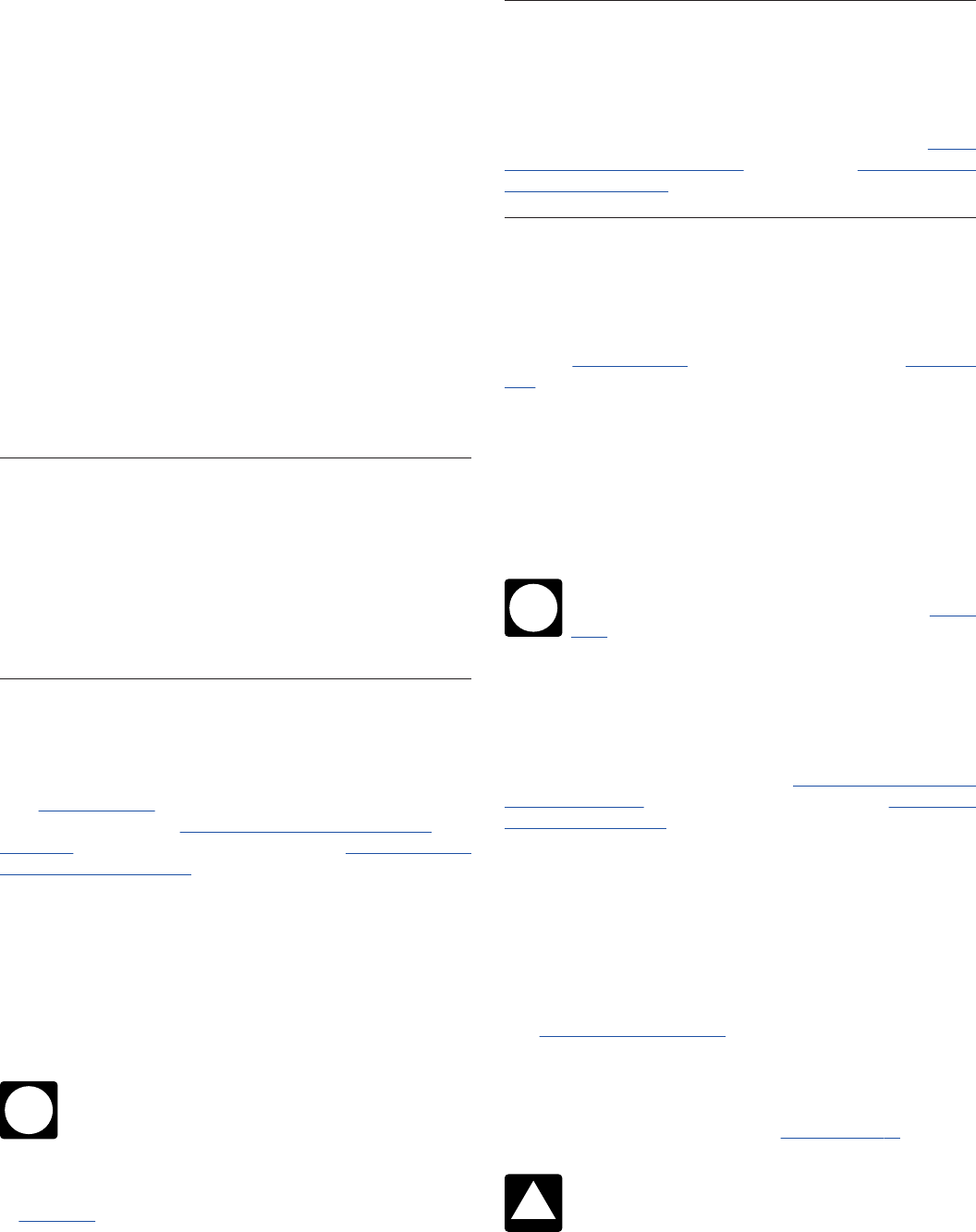
Page 38 of 61 Fileid: … ions/p590a/2023/a/xml/cycle03/source 9:10 - 4-Mar-2024
The type and rule above prints on all proofs including departmental reproduction proofs. MUST be removed before printing.
•
A qualified employee annuity plan (section 403(a)
plan);
•
A tax-sheltered annuity plan (section 403(b) plan); and
•
A deferred compensation plan (section 457 plan)
maintained by a state, a political subdivision of a state,
or an agency or instrumentality of a state or political
subdivision of a state.
Designated Roth accounts. Designated Roth accounts
are separate accounts under section 401(k), 403(b), or
457(b) plans that accept elective deferrals that are refer-
red to as Roth contributions. These elective deferrals are
included in your income, but qualified distributions from
these accounts aren’t included in your income. Designa-
ted Roth accounts aren’t IRAs and shouldn’t be confused
with Roth IRAs. Contributions, up to their respective limits,
can be made to Roth IRAs and designated Roth accounts
according to your eligibility to participate. A contribution to
one doesn’t impact your eligibility to contribute to the
other. See Pub. 575 for more information on designated
Roth accounts.
Introduction
Regardless of your age, you may be able to establish and
make nondeductible contributions to an individual retire-
ment plan called a Roth IRA.
Contributions not reported. You don’t report Roth IRA
contributions on your return.
What Is a Roth IRA?
A Roth IRA is an individual retirement plan that, except as
explained in this chapter, is subject to the rules that apply
to a traditional IRA (defined next). It can be either an ac-
count or an annuity. Individual retirement accounts and
annuities are described in chapter 1 under How Can a Tra-
ditional IRA Be Opened.
To be a Roth IRA, the account or annuity must be des-
ignated as a Roth IRA when it is opened. A deemed IRA
can be a Roth IRA, Roth SEP IRA, or a Roth SIMPLE IRA.
Unlike a traditional IRA, you can’t deduct contributions
to a Roth IRA. But, if you satisfy the requirements, quali-
fied distributions (discussed in chapter 2 of Pub. 590-B)
are tax free, and if you choose, you can leave amounts in
your Roth IRA as long as you live.
Beginning in 2023, SEP and SIMPLE IRAs can be
designated as Roth IRAs.
Traditional IRA. A traditional IRA is any IRA that isn’t a
Roth IRA or SIMPLE IRA. Traditional IRAs are discussed
in chapter 1.
TIP
When Can a Roth IRA Be
Opened?
You can open a Roth IRA at any time. However, the time
for making contributions for any year is limited. See When
Can You Make Contributions, later, under Can You Con-
tribute to a Roth IRA.
Can You Contribute to a Roth
IRA?
Generally, you can contribute to a Roth IRA if you have
taxable compensation (defined later) and your modified
AGI (defined later) is less than:
•
$228,000 for married filing jointly or qualifying surviv-
ing spouse;
•
$153,000 for single, head of household, or married fil-
ing separately and you didn’t live with your spouse at
any time during the year; and
•
$10,000 for married filing separately and you lived with
your spouse at any time during the year.
You may be able to claim a credit for contributions
to your Roth IRA. For more information, see chap-
ter 3.
Is there an age limit for contributions? Contributions
can be made to your Roth IRA regardless of your age.
Can you contribute to a Roth IRA for your spouse?
You can contribute to a Roth IRA for your spouse, provi-
ded the contributions satisfy the Kay Bailey Hutchison
Spousal IRA limit discussed in chapter 1 under How Much
Can Be Contributed, you file jointly, and your modified AGI
is less than $228,000.
Compensation. Compensation includes wages, salaries,
tips, professional fees, bonuses, and other amounts re-
ceived for providing personal services. It also includes
commissions, self-employment income, nontaxable com-
bat pay, military differential pay, and taxable alimony and
separate maintenance payments, and taxable non-tuition
fellowship and stipend payments. For more information,
see What Is Compensation under Who Can Open a Tradi-
tional IRA? in chapter 1.
Modified AGI. Your modified AGI for Roth IRA purposes
is your adjusted gross income (AGI) as shown on your re-
turn with some adjustments. Use Worksheet 2-1 to deter-
mine your modified AGI.
Don’t subtract conversion income when figuring
your other AGI-based phaseouts and taxable in-
come, such as your deduction for medical and
dental expenses. Subtract them from AGI only for the pur-
pose of figuring your modified AGI for Roth IRA purposes.
TIP
CAUTION
!
38 Chapter 2 Roth IRAs Publication 590-A (2023)

Page 39 of 61 Fileid: … ions/p590a/2023/a/xml/cycle03/source 9:10 - 4-Mar-2024
The type and rule above prints on all proofs including departmental reproduction proofs. MUST be removed before printing.
How Much Can Be Contributed?
The contribution limit for Roth IRAs generally depends on
whether contributions are made only to Roth IRAs or to
both traditional IRAs and Roth IRAs.
Roth IRAs only. If contributions are made only to Roth
IRAs, your contribution limit is generally the lesser of:
•
$6,500 ($7,500 if you are age 50 or older), or
•
Your taxable compensation.
However, if your modified AGI is above a certain
amount, your contribution limit may be reduced, as ex-
plained later under Contribution limit reduced.
Roth IRAs and traditional IRAs. If contributions are
made to both Roth IRAs and traditional IRAs established
for your benefit, your contribution limit for Roth IRAs is
generally the same as your limit would be if contributions
were made only to Roth IRAs, but then reduced by all con-
tributions for the year to all IRAs other than Roth IRAs.
Employer contributions under a SEP or SIMPLE IRA plan
don’t affect this limit.
This means that your contribution limit is the lesser of:
•
$6,500 ($7,500 if you are age 50 or older) minus all
contributions (other than employer contributions under
a SEP or SIMPLE IRA plan) for the year to all IRAs
other than Roth IRAs, or
•
Your taxable compensation minus all contributions
(other than employer contributions under a SEP or
SIMPLE IRA plan) for the year to all IRAs other than
Roth IRAs.
However, if your modified AGI is above a certain
amount, your contribution limit may be reduced, as ex-
plained later under Contribution limit reduced.
SEPs and SIMPLE plans are discussed in Pub. 560.
Repayment of reservist distributions. You can repay
qualified reservist distributions even if the repayments
would cause your total contributions to the Roth IRA to be
more than the general limit on contributions. However, the
total repayments can’t be more than the amount of your
distribution.
Note. If you make repayments of qualified reservist
distributions to a Roth IRA, increase your basis in the Roth
IRA by the amount of the repayment. For more informa-
tion, see Qualified reservist repayments under How Much
Can Be Contributed? in chapter 1.
Contribution limit reduced. If your modified AGI is
above a certain amount, your contribution limit is gradually
reduced. Use Table 2-1 to determine if this reduction ap-
plies to you.
Figuring the reduction. If the amount you can con-
tribute must be reduced, use Worksheet 2-2 to figure your
reduced contribution limit.
Round your reduced contribution limit up to the
nearest $10. If your reduced contribution limit is
more than $0, but less than $200, increase the
limit to $200.
Example. You are a 45-year-old, single individual with
taxable compensation of $139,000. You want to make the
maximum allowable contribution to your Roth IRA for
2023. Your modified AGI for 2023 is $139,000. You haven’t
contributed to any traditional IRA, so the maximum contri-
bution limit before the modified AGI reduction is $6,500.
You figure your reduced Roth IRA contribution of $6,060
as shown on Worksheet 2-2. Example—Illustrated.
TIP
Publication 590-A (2023) Chapter 2 Roth IRAs 39

Page 40 of 61 Fileid: … ions/p590a/2023/a/xml/cycle03/source 9:10 - 4-Mar-2024
The type and rule above prints on all proofs including departmental reproduction proofs. MUST be removed before printing.
Worksheet 2-1. Modified Adjusted Gross Income for Roth IRA Purposes
Use this worksheet to figure your modified adjusted gross income for Roth IRA purposes.
1. Enter your adjusted gross income from Form 1040, 1040-SR, or
1040-NR, line 11 .............................................................. 1.
2. Enter any income resulting from the conversion of an IRA (other than a
Roth IRA) to a Roth IRA (included on Form 1040, 1040-SR, or 1040-NR,
line 4b) and a rollover from a qualified retirement plan to a Roth IRA
(included on Form 1040, 1040-SR, or 1040-NR, line 5b) ................... 2.
3. Subtract line 2 from line 1 ....................................................
3.
4. Enter any traditional IRA deduction from Schedule 1 (Form 1040),
line 20 ......................................................................... 4.
5. Enter any student loan interest deduction from Schedule 1 (Form 1040),
line 21 ......................................................................... 5.
6. Enter any foreign earned income exclusion and/or housing exclusion from
Form 2555, line 45 ............................................................ 6.
7. Enter any foreign housing deduction from Form 2555, line 50 .............
7.
8. Enter any excludable qualified savings bond interest from Form 8815,
line 14 ......................................................................... 8.
9. Enter any excluded employer-provided adoption benefits from Form
8839, line 28 .................................................................. 9.
10. Add the amounts on lines 3 through 9 ......................................
10.
11. Enter:
•
$228,000 if married filing jointly or qualifying surviving spouse,
•
$10,000 if married filing separately and you lived with your spouse at
any time during the year, or
•
$153,000 for all others .......................... .......................... 11.
Is the amount on line 10 more than the amount on line 11?
If “Yes,” see the Note below.
If “No,” the amount on line 10 is your modified adjusted gross income
for Roth IRA purposes.
Note. If the amount on line 10 is more than the amount on line 11 and you have other income
or loss items, such as social security income or passive activity losses, that are subject to
AGI-based phaseouts, you can refigure your AGI solely for the purpose of figuring your
modified AGI for Roth IRA purposes. (If you receive social security benefits, use Worksheet 1
in Appendix B to refigure your AGI.) Then, go to line 3 above in this Worksheet 2-1 to refigure
your modified AGI. If you don’t have other income or loss items subject to AGI-based
phaseouts, your modified adjusted gross income for Roth IRA purposes is the amount on
line 10 above.
40 Chapter 2 Roth IRAs Publication 590-A (2023)
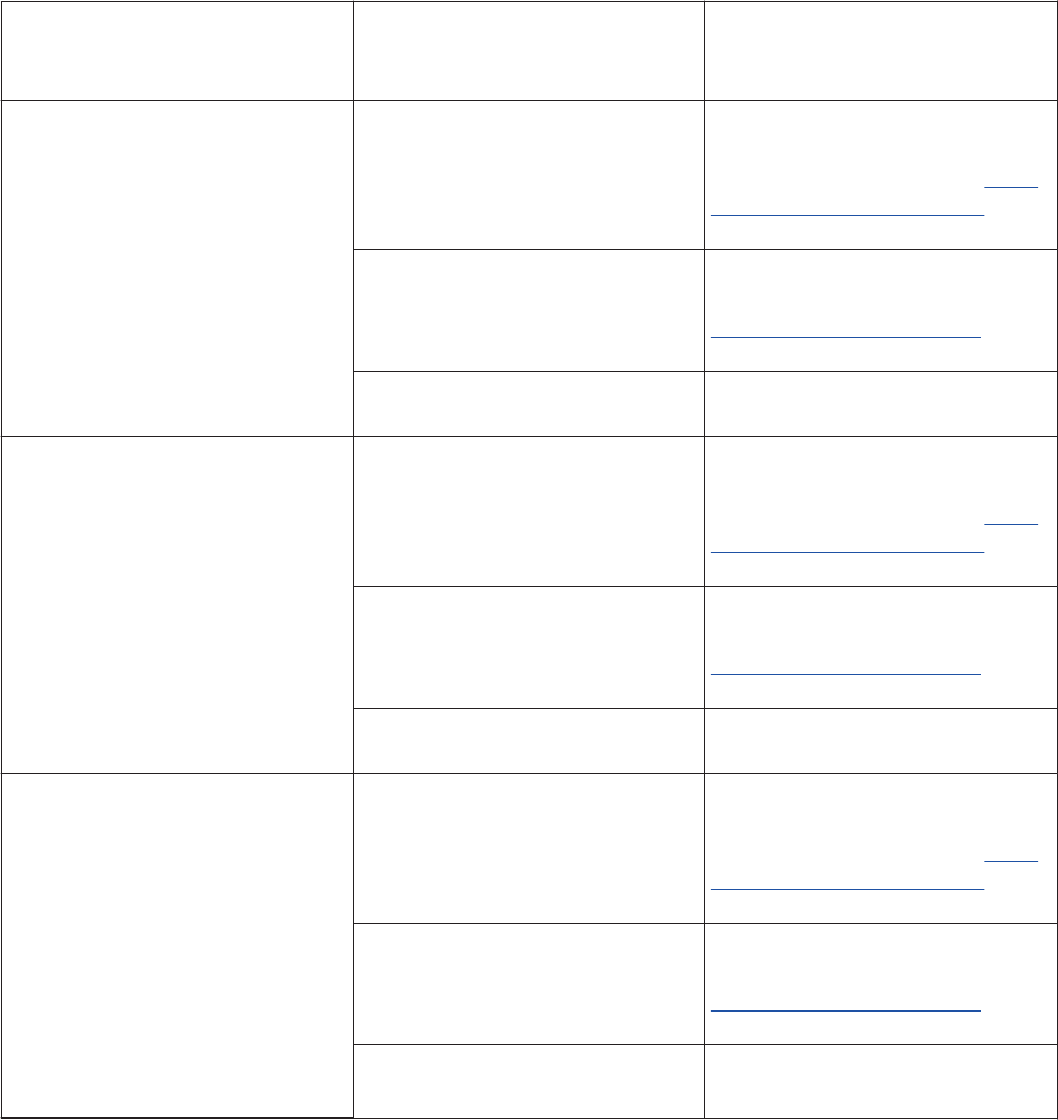
Page 41 of 61 Fileid: … ions/p590a/2023/a/xml/cycle03/source 9:10 - 4-Mar-2024
The type and rule above prints on all proofs including departmental reproduction proofs. MUST be removed before printing.
Table 2-1. Effect of Modified AGI on Roth IRA Contribution
This table shows whether your contribution to a Roth IRA is affected by the amount of your modified adjusted gross
income (modified AGI).
IF you have taxable
compensation
and your filing status is... AND your modified AGI is... THEN...
married filing jointly or
qualifying surviving spouse
less than $218,000
you can contribute up to $6,500
($7,500 if you are age 50 or
older) as explained under How
Much Can Be Contributed,
earlier.
at least $218,000
but less than $228,000
the amount you can contribute
is reduced as explained under
Contribution limit reduced,
earlier.
$228,000 or more
you can’t contribute to a Roth
IRA.
married filing separately
(and you lived with your spouse
at any time during the year)
zero (-0-)
you can contribute up to $6,500
($7,500 if you are age 50 or
older) as explained under How
Much Can Be Contributed,
earlier.
more than zero (-0-)
but less than $10,000
the amount you can contribute
is reduced as explained under
Contribution limit reduced,
earlier.
$10,000 or more
you can’t contribute to a Roth
IRA.
single, head of household, or
married filing separately
(and you didn’t live with your
spouse at any time during the
year)
less than $138,000
you can contribute up to $6,500
($7,500 if you are age 50 or
older) as explained under How
Much Can Be Contributed,
earlier.
at least $138,000
but less than $153,000
the amount you can contribute
is reduced as explained under
Contribution limit reduced,
earlier.
$153,000 or more
you can’t contribute to a Roth
IRA.
Publication 590-A (2023) Chapter 2 Roth IRAs 41

Page 42 of 61 Fileid: … ions/p590a/2023/a/xml/cycle03/source 9:10 - 4-Mar-2024
The type and rule above prints on all proofs including departmental reproduction proofs. MUST be removed before printing.
When Can You Make Contributions?
You can make contributions to a Roth IRA for a year at any
time during the year or by the due date of your return for
that year (not including extensions).
You can make contributions for 2023 by the due
date (not including extensions) for filing your 2023
tax return. This means that most people can make
contributions for 2023 by April 15, 2024.
What if You Contribute Too Much?
A 6% excise tax applies to any excess contribution to a
Roth IRA.
Excess contributions. These are the contributions to
your Roth IRAs for a year that equal the total of:
1. Amounts contributed for the tax year to your Roth
IRAs (other than amounts properly and timely rolled
TIP
over from a Roth IRA or properly converted from a tra-
ditional IRA or rolled over from a qualified retirement
plan, as described later) that are more than your con-
tribution limit for the year (explained earlier under How
Much Can Be Contributed); plus
2. Any excess contributions for the preceding year, re-
duced by the total of:
a. Any distributions out of your Roth IRAs for the
year, plus
b. Your contribution limit for the year minus your con-
tributions to all your IRAs for the year.
Withdrawal of excess contributions. For purposes
of determining excess contributions, any contribution that
is withdrawn on or before the due date (including exten-
sions) for filing your tax return for the year is treated as an
amount not contributed. This treatment only applies if any
earnings on the contributions are also withdrawn. The
Determining Your Reduced Roth IRA Contribution Limit
Before using this worksheet, check Table 2-1 to determine whether or not your Roth IRA contribution limit is reduced. If it
is, use this worksheet to determine how much it is reduced.
1. Enter your modified AGI for Roth IRA purposes (Worksheet 2-1,
line 10) .................................................................. 1.
2. Enter:
•
$218,000 if filing a joint return or qualifying surviving spouse,
•
$-0- if married filing a separate return and you lived with your spouse
at any time in 2023, or
•
$138,000 for all others ................................................
2.
3. Subtract line 2 from line 1 ................................................
3.
4. Enter:
•
$10,000 if filing a joint return or qualifying surviving spouse or married
filing a separate return and you lived with your spouse at any time
during the year, or
•
$15,000 for all others ........................ ........................
4.
5. Divide line 3 by line 4 and enter the result as a decimal (rounded to at
least three places). If the result is 1.000 or more, enter 1.000 ............ 5.
6. Enter the lesser of:
•
$6,500 ($7,500 if you are age 50 or older), or
•
Your taxable compensation ..................... ..................... 6.
7. Multiply line 5 by line 6 ...................................................
7.
8. Subtract line 7 from line 6. Round the result up to the nearest $10. If the
result is less than $200, enter $200 ...................................... 8.
9. Enter contributions for the year to other IRAs ............................
9.
10. Subtract line 9 from line 6 ................................................
10.
11. Enter the lesser of line 8 or line 10. This is your reduced Roth IRA
contribution limit ...................................................... 11.
Worksheet 2-2.
42 Chapter 2 Roth IRAs Publication 590-A (2023)

Page 43 of 61 Fileid: … ions/p590a/2023/a/xml/cycle03/source 9:10 - 4-Mar-2024
The type and rule above prints on all proofs including departmental reproduction proofs. MUST be removed before printing.
earnings are considered earned and received in the year
the excess contribution was made.
If you timely filed your 2023 tax return without withdraw-
ing a contribution that you made in 2023, you can still have
the contribution returned to you within 6 months of the due
date of your 2023 tax return, excluding extensions. If you
do, file an amended return with “Filed pursuant to section
301.9100-2” written at the top. Report any related earn-
ings on the amended return and include an explanation of
the withdrawal. Make any other necessary changes on the
amended return.
Applying excess contributions. If contributions to your
Roth IRA for a year were more than the limit, you can ap-
ply the excess contribution in 1 year to a later year if the
contributions for that later year are less than the maximum
allowed for that year.
Can You Move Amounts Into a
Roth IRA?
You may be able to convert amounts from either a tradi-
tional, SEP, or SIMPLE IRA into a Roth IRA. You may be
able to roll over amounts from a qualified retirement plan
to a Roth IRA. You may be able to recharacterize contribu-
tions made to one IRA as having been made directly to a
different IRA. You can roll amounts over from a designated
Roth account or from one Roth IRA to another Roth IRA.
Conversions
You can convert a traditional IRA to a Roth IRA. The con-
version is treated as a rollover, regardless of the conver-
sion method used. Most of the rules for rollovers, descri-
bed in chapter 1 under Rollover From One IRA Into
Another, apply to these rollovers. However, the 1-year
waiting period doesn’t apply.
Conversion methods. You can convert amounts from a
traditional IRA to a Roth IRA in any of the following three
ways.
•
Rollover. You can receive a distribution from a tradi-
tional IRA and roll it over (contribute it) to a Roth IRA
within 60 days after the distribution.
•
Trustee-to-trustee transfer. You can direct the
trustee of the traditional IRA to transfer an amount
from the traditional IRA to the trustee of the Roth IRA.
•
Same trustee transfer. If the trustee of the traditional
IRA also maintains the Roth IRA, you can direct the
trustee to transfer an amount from the traditional IRA
to the Roth IRA.
Same trustee. Conversions made with the same
trustee can be made by redesignating the traditional IRA
Worksheet 2-2. Example—Illustrated
Before using this worksheet, check Table 2-1 to determine whether or not your Roth IRA contribution limit is reduced. If it
is, use this worksheet to determine how much it is reduced.
1. Enter your modified AGI for Roth IRA purposes (Worksheet 2-1, line 10) ..............
1.
139,000
2. Enter:
•
$218,000 if filing a joint return or qualifying surviving spouse,
•
$-0- if married filing a separate return and you lived with your spouse at any time in
2023, or
•
$138,000 for all others .................................................... 2.
138,000
3. Subtract line 2 from line 1 ....................................................
3.
1,000
4. Enter:
•
$10,000 if filing a joint return or qualifying surviving spouse or married filing a
separate return and you lived with your spouse at any time during the year, or
•
$15,000 for all others ...................................................... 4.
15,000
5. Divide line 3 by line 4 and enter the result as a decimal (rounded to at least three places).
If the result is 1.000 or more, enter 1.000 ........................................ 5.
0.067
6. Enter the lesser of:
•
$6,500 ($7,500 if you are age 50 or older), or
•
Your taxable compensation ................................................ 6.
6,500
7. Multiply line 5 by line 6 .......................................................
7.
436
8. Subtract line 7 from line 6. Round the result up to the nearest $10. If the result is less than
$200, enter $200 ........................................................... 8.
6,060
9. Enter contributions for the year to other IRAs ....................................
9.
0
10. Subtract line 9 from line 6 ....................................................
10.
6,500
11. Enter the lesser of line 8 or line 10. This is your reduced Roth IRA
contribution limit .......................................................... 11.
6,060
Publication 590-A (2023) Chapter 2 Roth IRAs 43

Page 44 of 61 Fileid: … ions/p590a/2023/a/xml/cycle03/source 9:10 - 4-Mar-2024
The type and rule above prints on all proofs including departmental reproduction proofs. MUST be removed before printing.
as a Roth IRA, rather than opening a new account or issu-
ing a new contract.
Income. You must include in your gross income distribu-
tions from a traditional IRA that you would have had to in-
clude in income if you hadn’t converted them into a Roth
IRA. These amounts are normally included in income on
your return for the year that you converted them from a tra-
ditional IRA to a Roth IRA.
If you must include any amount in your gross in-
come, you may have to increase your withholding
or make estimated tax payments. See Pub. 505.
More information. For more information on conversions,
see Converting From Any Traditional IRA Into a Roth IRA
in chapter 1.
Rollover From Employer's Plan Into a
Roth IRA
You can roll over into a Roth IRA all or part of an eligible
rollover distribution you receive from your (or your de-
ceased spouse's):
•
Employer's qualified pension, profit-sharing, or stock
bonus plan (including a 401(k) plan);
•
Annuity plan;
•
Tax-sheltered annuity plan (section 403(b) plan); or
•
Governmental deferred compensation plan (section
457 plan).
Any amount rolled over is subject to the same rules for
converting a traditional IRA into a Roth IRA. See Convert-
ing From Any Traditional IRA Into a Roth IRA in chapter 1.
Also, the rollover contribution must meet the rollover re-
quirements that apply to the specific type of retirement
plan.
Rollover methods. You can roll over amounts from a
qualified retirement plan to a Roth IRA in one of the follow-
ing ways.
•
Rollover. You can receive a distribution from a quali-
fied retirement plan and roll it over (contribute it) to a
Roth IRA within 60 days after the distribution. Because
the distribution is paid directly to you, the payer must
generally withhold 20% of it. For rules about making a
rollover of a plan loan offset, including a qualified plan
loan offset, see Time Limit for Making a Rollover Con-
tribution in chapter 1.
•
Direct rollover option. Your employer's qualified plan
must give you the option to have any part of an eligible
rollover distribution paid directly to a Roth IRA. Gener-
ally, no tax is withheld from any part of the designated
distribution that is directly paid to the trustee of the
Roth IRA.
Rollover by nonspouse beneficiary. If you are a desig-
nated beneficiary (other than a surviving spouse) of a de-
ceased employee, you can roll over all or part of an eligi-
ble rollover distribution from one of the types of plans
CAUTION
!
listed earlier into a Roth IRA. You must make the rollover
by a direct trustee-to-trustee transfer into an inherited
Roth IRA.
You will determine your required minimum distributions
in years after you make the rollover based on whether the
employee died before his or her required beginning date
for taking distributions from the plan. For more informa-
tion, see Distributions after the employee’s death under
Tax on Excess Accumulation in Pub. 575.
Income. You must include in your gross income distribu-
tions from a qualified retirement plan that you would have
had to include in income if you hadn’t rolled them over into
a Roth IRA. You don’t include in gross income any part of
a distribution from a qualified retirement plan that is a re-
turn of basis (after-tax contributions) to the plan that were
taxable to you when paid. These amounts are normally in-
cluded in income on your return for the year of the rollover
from the qualified employer plan to a Roth IRA.
If you must include any amount in your gross in-
come, you may have to increase your withholding
or make estimated tax payments. See Pub. 505.
For more information on eligible rollover distributions
from qualified retirement plans and withholding, see Roll-
over From Employer's Plan Into an IRA in chapter 1.
Military Death Gratuities and
Servicemembers' Group Life
Insurance (SGLI) Payments
If you received a military death gratuity or SGLI payment
with respect to a death from injury that occurred after Oc-
tober 6, 2001, you can contribute (roll over) all or part of
the amount received to your Roth IRA. The contribution is
treated as a qualified rollover contribution.
The amount you can roll over to your Roth IRA can’t ex-
ceed the total amount that you received reduced by any
part of that amount that was contributed to a Coverdell
ESA or another Roth IRA. Any military death gratuity or
SGLI payment contributed to a Roth IRA is disregarded for
purposes of the 1-year waiting period between rollovers.
The rollover must be completed before the end of the
1-year period beginning on the date you received the pay-
ment.
The amount contributed to your Roth IRA is treated as
part of your cost basis (investment in the contract) in the
Roth IRA that isn’t taxable when distributed.
Rollover From a Roth IRA
You can withdraw, tax free, all or part of the assets from
one Roth IRA if you contribute them within 60 days to an-
other Roth IRA. Most of the rules for rollovers, described
in chapter 1 under Rollover From One IRA Into Another,
apply to these rollovers. However, rollovers from retire-
ment plans other than Roth IRAs are disregarded for pur-
poses of the 1-year waiting period between rollovers.
CAUTION
!
44 Chapter 2 Roth IRAs Publication 590-A (2023)

Page 45 of 61 Fileid: … ions/p590a/2023/a/xml/cycle03/source 9:10 - 4-Mar-2024
The type and rule above prints on all proofs including departmental reproduction proofs. MUST be removed before printing.
A rollover from a Roth IRA to an employer retirement
plan isn’t allowed.
A rollover from a designated Roth account can only be
made to another designated Roth account or to a Roth
IRA.
If you roll over an amount from one Roth IRA to another
Roth IRA, the 5-year period used to determine qualified
distributions doesn’t change. The 5-year period begins
with the first tax year for which the contribution was made
to the initial Roth IRA. See What Are Qualified Distribu-
tions? in chapter 2 of Pub. 590-B.
3.
Retirement Savings
Contributions Credit
(Saver's Credit)
What's New
Modified AGI limit for retirement savings contribu-
tions credit increased. For 2023, you may be able to
claim the retirement savings contributions credit if your
modified AGI isn’t more than:
•
$73,000 if your filing status is married filing jointly;
•
$54,750 if your filing status is head of household; or
•
$36,500 if your filing status is single, married filing
separately, or qualifying surviving spouse.
Introduction
You may be able to take a tax credit if you make eligible
contributions (defined later) to a qualified retirement plan,
an eligible deferred compensation plan, or an IRA. You
may be able to take a credit of up to $1,000 (up to $2,000
if filing jointly). This credit could reduce the federal income
tax you pay dollar for dollar.
Can you claim the credit? If you make eligible contribu-
tions to a qualified retirement plan, an eligible deferred
compensation plan, or an IRA, you can claim the credit if
all of the following apply.
1. You were born before January 2, 2005.
2. You aren’t a full-time student (explained later).
3. No one else, such as your parent(s), claims you as a
dependent on their tax return.
4. Your adjusted gross income (defined later) isn’t more
than:
a. $73,000 if your filing status is married filing jointly;
b. $54,750 if your filing status is head of household;
or
c. $36,500 if your filing status is single, married filing
separately, or qualifying surviving spouse.
Full-time student. You are a full-time student if, during
some part of each of 5 calendar months (not necessarily
consecutive) during the calendar year, you are either:
•
A full-time student at a school that has a regular teach-
ing staff, course of study, and regularly enrolled body
of students in attendance; or
•
A student taking a full-time, on-farm training course
given by either a school that has a regular teaching
staff, course of study, and regularly enrolled body of
students in attendance, or a state, county, or local
government.
You are a full-time student if you are enrolled for the num-
ber of hours or courses the school considers to be full
time.
Adjusted gross income (AGI). This is generally the
amount on line 11 of your 2023 Form 1040, 1040-SR, or
1040-NR. However, you must add to that amount any ex-
clusion or deduction claimed for the year for:
•
Foreign earned income,
•
Foreign housing costs,
•
Income for bona fide residents of American Samoa,
and
•
Income from Puerto Rico.
Eligible contributions. These include:
1. Contributions to a traditional or Roth IRA;
2. Salary reduction contributions (elective deferrals, in-
cluding amounts designated as after-tax Roth contri-
butions) to:
a. A 401(k) plan (including a SIMPLE 401(k)),
b. A section 403(b) annuity,
c. An eligible deferred compensation plan of a state
or local government (a governmental 457 plan),
d. A SIMPLE IRA plan, or
e. A salary reduction SEP; and
3. Contributions to a section 501(c)(18) plan.
They also include voluntary after-tax employee contribu-
tions to a tax-qualified retirement plan or section 403(b)
annuity. For purposes of the credit, an employee contribu-
tion will be voluntary as long as it isn’t required as a condi-
tion of employment.
Reducing eligible contributions. Reduce your eligible
contributions (but not below zero) by the total distributions
you received during the testing period (defined later) from
any IRA, plan, or annuity included above under Eligible
contributions. Also reduce your eligible contributions by
Publication 590-A (2023) Chapter 3 Retirement Savings Contributions Credit
(Saver's Credit)
45

Page 46 of 61 Fileid: … ions/p590a/2023/a/xml/cycle03/source 9:10 - 4-Mar-2024
The type and rule above prints on all proofs including departmental reproduction proofs. MUST be removed before printing.
any distribution from a Roth IRA that isn’t rolled over, even
if the distribution isn’t taxable.
Don’t reduce your eligible contributions by any of the
following.
1. The portion of any distribution which isn’t includible in
income because it is a trustee-to-trustee transfer or a
rollover distribution.
2. Distributions that are taxable as the result of an
in-plan rollover to your designated Roth account.
3. Any distribution that is a return of a contribution to an
IRA (including a Roth IRA) made during the year for
which you claim the credit if:
a. The distribution is made before the due date (in-
cluding extensions) of your tax return for that year,
b. You don’t take a deduction for the contribution,
and
c. The distribution includes any income attributable
to the contribution.
4. Loans from a qualified employer plan treated as a dis-
tribution.
5. Distributions of excess contributions or deferrals (and
income attributable to excess contributions and defer-
rals).
6. Distributions of dividends paid on stock held by an
employee stock ownership plan under section 404(k).
7. Distributions from an eligible retirement plan that are
converted or rolled over to a Roth IRA.
8. Distributions from a military retirement plan.
9. Distributions from an inherited IRA by a nonspousal
beneficiary.
Distributions received by spouse. Any distributions
your spouse receives are treated as received by you if you
file a joint return with your spouse both for the year of the
distribution and for the year for which you claim the credit.
Testing period. The testing period consists of the year
for which you claim the credit, the period after the end of
that year and before the due date (including extensions)
for filing your return for that year, and the 2 tax years be-
fore that year.
Example. You and your spouse filed joint returns in
2021 and 2022, and plan to do so in 2023 and 2024. You
received a taxable distribution from a qualified plan in
2021 and a taxable distribution from an eligible deferred
compensation plan in 2022. Your spouse received taxable
distributions from a Roth IRA in 2023 and tax-free distribu-
tions from a Roth IRA in 2024 before April 15. You made
eligible contributions to an IRA in 2023 and you otherwise
qualify for this credit. You must reduce the amount of your
qualifying contributions in 2023 by the total of the distribu-
tions you received in 2021, 2022, 2023, and 2024.
Maximum eligible contributions. After your contribu-
tions are reduced, the maximum annual contribution on
which you can base the credit is $2,000 per person.
Effect on other credits. The amount of this credit won’t
change the amount of your refundable tax credits. A re-
fundable tax credit, such as the earned income credit or
the refundable amount of your child tax credit, is an
amount that you would receive as a refund even if you
didn’t otherwise owe any taxes.
Maximum credit. This is a nonrefundable credit. The
amount of the credit in any year can’t be more than the
amount of tax that you would otherwise pay (not counting
any refundable credits) in any year. If your tax liability is re-
duced to zero because of other nonrefundable credits,
such as the credit for child and dependent care expenses,
then you won’t be entitled to this credit.
How to figure and report the credit. The amount of the
credit you can get is based on the contributions you make
and your credit rate. Your credit rate can be as low as 10%
or as high as 50%. Your credit rate depends on your in-
come and your filing status. See Form 8880 to determine
your credit rate.
The maximum contribution taken into account is $2,000
per person. On a joint return, up to $2,000 is taken into ac-
count for each spouse.
Figure the credit on Form 8880. Report the credit on
Schedule 3 (Form 1040), line 4, and attach Form 8880 to
your return.
How To Get Tax Help
If you have questions about a tax issue; need help prepar-
ing your tax return; or want to download free publications,
forms, or instructions, go to IRS.gov to find resources that
can help you right away.
Preparing and filing your tax return. After receiving all
your wage and earnings statements (Forms W-2, W-2G,
1099-R, 1099-MISC, 1099-NEC, etc.); unemployment
compensation statements (by mail or in a digital format) or
other government payment statements (Form 1099-G);
and interest, dividend, and retirement statements from
banks and investment firms (Forms 1099), you have sev-
eral options to choose from to prepare and file your tax re-
turn. You can prepare the tax return yourself, see if you
qualify for free tax preparation, or hire a tax professional to
prepare your return.
Free options for tax preparation. Your options for pre-
paring and filing your return online or in your local com-
munity, if you qualify, include the following.
•
Free File. This program lets you prepare and file your
federal individual income tax return for free using soft-
ware or Free File Fillable Forms. However, state tax
preparation may not be available through Free File. Go
to IRS.gov/FreeFile to see if you qualify for free online
federal tax preparation, e-filing, and direct deposit or
payment options.
•
VITA. The Volunteer Income Tax Assistance (VITA)
program offers free tax help to people with
low-to-moderate incomes, persons with disabilities,
46 Publication 590-A (2023)

Page 47 of 61 Fileid: … ions/p590a/2023/a/xml/cycle03/source 9:10 - 4-Mar-2024
The type and rule above prints on all proofs including departmental reproduction proofs. MUST be removed before printing.
and limited-English-speaking taxpayers who need
help preparing their own tax returns. Go to IRS.gov/
VITA, download the free IRS2Go app, or call
800-906-9887 for information on free tax return prepa-
ration.
•
TCE. The Tax Counseling for the Elderly (TCE) pro-
gram offers free tax help for all taxpayers, particularly
those who are 60 years of age and older. TCE volun-
teers specialize in answering questions about pen-
sions and retirement-related issues unique to seniors.
Go to IRS.gov/TCE or download the free IRS2Go app
for information on free tax return preparation.
•
MilTax. Members of the U.S. Armed Forces and quali-
fied veterans may use MilTax, a free tax service of-
fered by the Department of Defense through Military
OneSource. For more information, go to
MilitaryOneSource (MilitaryOneSource.mil/MilTax).
Also, the IRS offers Free Fillable Forms, which can
be completed online and then e-filed regardless of in-
come.
Using online tools to help prepare your return. Go to
IRS.gov/Tools for the following.
•
The Earned Income Tax Credit Assistant (IRS.gov/
EITCAssistant) determines if you’re eligible for the
earned income credit (EIC).
•
The Online EIN Application (IRS.gov/EIN) helps you
get an employer identification number (EIN) at no
cost.
•
The Tax Withholding Estimator (IRS.gov/W4App)
makes it easier for you to estimate the federal income
tax you want your employer to withhold from your pay-
check. This is tax withholding. See how your withhold-
ing affects your refund, take-home pay, or tax due.
•
The First-Time Homebuyer Credit Account Look-up
(IRS.gov/HomeBuyer) tool provides information on
your repayments and account balance.
•
The Sales Tax Deduction Calculator (IRS.gov/
SalesTax) figures the amount you can claim if you
itemize deductions on Schedule A (Form 1040).
Getting answers to your tax questions. On
IRS.gov, you can get up-to-date information on
current events and changes in tax law.
•
IRS.gov/Help: A variety of tools to help you get an-
swers to some of the most common tax questions.
•
IRS.gov/ITA: The Interactive Tax Assistant, a tool that
will ask you questions and, based on your input, pro-
vide answers on a number of tax topics.
•
IRS.gov/Forms: Find forms, instructions, and publica-
tions. You will find details on the most recent tax
changes and interactive links to help you find answers
to your questions.
•
You may also be able to access tax information in your
e-filing software.
Need someone to prepare your tax return? There are
various types of tax return preparers, including enrolled
agents, certified public accountants (CPAs), accountants,
and many others who don’t have professional credentials.
If you choose to have someone prepare your tax return,
choose that preparer wisely. A paid tax preparer is:
•
Primarily responsible for the overall substantive accu-
racy of your return,
•
Required to sign the return, and
•
Required to include their preparer tax identification
number (PTIN).
Although the tax preparer always signs the return,
you're ultimately responsible for providing all the
information required for the preparer to accurately
prepare your return and for the accuracy of every item re-
ported on the return. Anyone paid to prepare tax returns
for others should have a thorough understanding of tax
matters. For more information on how to choose a tax pre-
parer, go to Tips for Choosing a Tax Preparer on IRS.gov.
Employers can register to use Business Services On-
line. The Social Security Administration (SSA) offers on-
line service at SSA.gov/employer for fast, free, and secure
W-2 filing options to CPAs, accountants, enrolled agents,
and individuals who process Form W-2, Wage and Tax
Statement, and Form W-2c, Corrected Wage and Tax
Statement.
IRS social media. Go to IRS.gov/SocialMedia to see the
various social media tools the IRS uses to share the latest
information on tax changes, scam alerts, initiatives, prod-
ucts, and services. At the IRS, privacy and security are our
highest priority. We use these tools to share public infor-
mation with you. Don’t post your social security number
(SSN) or other confidential information on social media
sites. Always protect your identity when using any social
networking site.
The following IRS YouTube channels provide short, in-
formative videos on various tax-related topics in English,
Spanish, and ASL.
•
Youtube.com/irsvideos.
•
Youtube.com/irsvideosmultilingua.
•
Youtube.com/irsvideosASL.
Watching IRS videos. The IRS Video portal
(IRSVideos.gov) contains video and audio presentations
for individuals, small businesses, and tax professionals.
Online tax information in other languages. You can
find information on IRS.gov/MyLanguage if English isn’t
your native language.
Free Over-the-Phone Interpreter (OPI) Service. The
IRS is committed to serving taxpayers with limited-English
proficiency (LEP) by offering OPI services. The OPI Serv-
ice is a federally funded program and is available at Tax-
payer Assistance Centers (TACs), most IRS offices, and
CAUTION
!
Publication 590-A (2023) 47

Page 48 of 61 Fileid: … ions/p590a/2023/a/xml/cycle03/source 9:10 - 4-Mar-2024
The type and rule above prints on all proofs including departmental reproduction proofs. MUST be removed before printing.
every VITA/TCE tax return site. The OPI Service is acces-
sible in more than 350 languages.
Accessibility Helpline available for taxpayers with
disabilities. Taxpayers who need information about ac-
cessibility services can call 833-690-0598. The Accessi-
bility Helpline can answer questions related to current and
future accessibility products and services available in al-
ternative media formats (for example, braille, large print,
audio, etc.). The Accessibility Helpline does not have ac-
cess to your IRS account. For help with tax law, refunds, or
account-related issues, go to IRS.gov/LetUsHelp.
Note. Form 9000, Alternative Media Preference, or
Form 9000(SP) allows you to elect to receive certain types
of written correspondence in the following formats.
•
Standard Print.
•
Large Print.
•
Braille.
•
Audio (MP3).
•
Plain Text File (TXT).
•
Braille Ready File (BRF).
Disasters. Go to IRS.gov/DisasterRelief to review the
available disaster tax relief.
Getting tax forms and publications. Go to IRS.gov/
Forms to view, download, or print all the forms, instruc-
tions, and publications you may need. Or, you can go to
IRS.gov/OrderForms to place an order.
Getting tax publications and instructions in eBook
format. Download and view most tax publications and in-
structions (including the Instructions for Form 1040) on
mobile devices as eBooks at IRS.gov/eBooks.
IRS eBooks have been tested using Apple's iBooks for
iPad. Our eBooks haven’t been tested on other dedicated
eBook readers, and eBook functionality may not operate
as intended.
Access your online account (individual taxpayers
only). Go to IRS.gov/Account to securely access infor-
mation about your federal tax account.
•
View the amount you owe and a breakdown by tax
year.
•
See payment plan details or apply for a new payment
plan.
•
Make a payment or view 5 years of payment history
and any pending or scheduled payments.
•
Access your tax records, including key data from your
most recent tax return, and transcripts.
•
View digital copies of select notices from the IRS.
•
Approve or reject authorization requests from tax pro-
fessionals.
•
View your address on file or manage your communica-
tion preferences.
Get a transcript of your return. With an online account,
you can access a variety of information to help you during
the filing season. You can get a transcript, review your
most recently filed tax return, and get your adjusted gross
income. Create or access your online account at IRS.gov/
Account.
Tax Pro Account. This tool lets your tax professional
submit an authorization request to access your individual
taxpayer IRS online account. For more information, go to
IRS.gov/TaxProAccount.
Using direct deposit. The safest and easiest way to re-
ceive a tax refund is to e-file and choose direct deposit,
which securely and electronically transfers your refund di-
rectly into your financial account. Direct deposit also
avoids the possibility that your check could be lost, stolen,
destroyed, or returned undeliverable to the IRS. Eight in
10 taxpayers use direct deposit to receive their refunds. If
you don’t have a bank account, go to IRS.gov/
DirectDeposit for more information on where to find a bank
or credit union that can open an account online.
Reporting and resolving your tax-related identity
theft issues.
•
Tax-related identity theft happens when someone
steals your personal information to commit tax fraud.
Your taxes can be affected if your SSN is used to file a
fraudulent return or to claim a refund or credit.
•
The IRS doesn’t initiate contact with taxpayers by
email, text messages (including shortened links), tele-
phone calls, or social media channels to request or
verify personal or financial information. This includes
requests for personal identification numbers (PINs),
passwords, or similar information for credit cards,
banks, or other financial accounts.
•
Go to IRS.gov/IdentityTheft, the IRS Identity Theft
Central webpage, for information on identity theft and
data security protection for taxpayers, tax professio-
nals, and businesses. If your SSN has been lost or
stolen or you suspect you’re a victim of tax-related
identity theft, you can learn what steps you should
take.
•
Get an Identity Protection PIN (IP PIN). IP PINs are
six-digit numbers assigned to taxpayers to help pre-
vent the misuse of their SSNs on fraudulent federal in-
come tax returns. When you have an IP PIN, it pre-
vents someone else from filing a tax return with your
SSN. To learn more, go to IRS.gov/IPPIN.
Ways to check on the status of your refund.
•
Go to IRS.gov/Refunds.
•
Download the official IRS2Go app to your mobile de-
vice to check your refund status.
•
Call the automated refund hotline at 800-829-1954.
48 Publication 590-A (2023)

Page 49 of 61 Fileid: … ions/p590a/2023/a/xml/cycle03/source 9:10 - 4-Mar-2024
The type and rule above prints on all proofs including departmental reproduction proofs. MUST be removed before printing.
The IRS can’t issue refunds before mid-February
for returns that claimed the EIC or the additional
child tax credit (ACTC). This applies to the entire
refund, not just the portion associated with these credits.
Making a tax payment. Payments of U.S. tax must be
remitted to the IRS in U.S. dollars. Digital assets are not
accepted. Go to IRS.gov/Payments for information on how
to make a payment using any of the following options.
•
IRS Direct Pay: Pay your individual tax bill or estimated
tax payment directly from your checking or savings ac-
count at no cost to you.
•
Debit Card, Credit Card, or Digital Wallet: Choose an
approved payment processor to pay online or by
phone.
•
Electronic Funds Withdrawal: Schedule a payment
when filing your federal taxes using tax return prepara-
tion software or through a tax professional.
•
Electronic Federal Tax Payment System: Best option
for businesses. Enrollment is required.
•
Check or Money Order: Mail your payment to the ad-
dress listed on the notice or instructions.
•
Cash: You may be able to pay your taxes with cash at
a participating retail store.
•
Same-Day Wire: You may be able to do same-day
wire from your financial institution. Contact your finan-
cial institution for availability, cost, and time frames.
Note. The IRS uses the latest encryption technology to
ensure that the electronic payments you make online, by
phone, or from a mobile device using the IRS2Go app are
safe and secure. Paying electronically is quick, easy, and
faster than mailing in a check or money order.
What if I can’t pay now? Go to IRS.gov/Payments for
more information about your options.
•
Apply for an online payment agreement (IRS.gov/
OPA) to meet your tax obligation in monthly install-
ments if you can’t pay your taxes in full today. Once
you complete the online process, you will receive im-
mediate notification of whether your agreement has
been approved.
•
Use the Offer in Compromise Pre-Qualifier to see if
you can settle your tax debt for less than the full
amount you owe. For more information on the Offer in
Compromise program, go to IRS.gov/OIC.
Filing an amended return. Go to IRS.gov/Form1040X
for information and updates.
Checking the status of your amended return. Go to
IRS.gov/WMAR to track the status of Form 1040-X amen-
ded returns.
It can take up to 3 weeks from the date you filed
your amended return for it to show up in our sys-
tem, and processing it can take up to 16 weeks.
CAUTION
!
CAUTION
!
Understanding an IRS notice or letter you’ve re-
ceived. Go to IRS.gov/Notices to find additional informa-
tion about responding to an IRS notice or letter.
Responding to an IRS notice or letter. You can now
upload responses to all notices and letters using the
Document Upload Tool. For notices that require additional
action, taxpayers will be redirected appropriately on
IRS.gov to take further action. To learn more about the tool
go to IRS.gov/Upload.
Note. You can use Schedule LEP (Form 1040), Re-
quest for Change in Language Preference, to state a pref-
erence to receive notices, letters, or other written commu-
nications from the IRS in an alternative language. You may
not immediately receive written communications in the re-
quested language. The IRS’s commitment to LEP taxpay-
ers is part of a multi-year timeline that began providing
translations in 2023. You will continue to receive communi-
cations, including notices and letters, in English until they
are translated to your preferred language.
Contacting your local TAC. Keep in mind, many ques-
tions can be answered on IRS.gov without visiting a TAC.
Go to IRS.gov/LetUsHelp for the topics people ask about
most. If you still need help, TACs provide tax help when a
tax issue can’t be handled online or by phone. All TACs
now provide service by appointment, so you’ll know in ad-
vance that you can get the service you need without long
wait times. Before you visit, go to IRS.gov/TACLocator to
find the nearest TAC and to check hours, available serv-
ices, and appointment options. Or, on the IRS2Go app,
under the Stay Connected tab, choose the Contact Us op-
tion and click on “Local Offices.”
The Taxpayer Advocate Service (TAS)
Is Here To Help You
What Is TAS?
TAS is an independent organization within the IRS that
helps taxpayers and protects taxpayer rights. TAS strives
to ensure that every taxpayer is treated fairly and that you
know and understand your rights under the Taxpayer Bill
of Rights.
How Can You Learn About Your Taxpayer
Rights?
The Taxpayer Bill of Rights describes 10 basic rights that
all taxpayers have when dealing with the IRS. Go to
TaxpayerAdvocate.IRS.gov to help you understand what
these rights mean to you and how they apply. These are
your rights. Know them. Use them.
What Can TAS Do for You?
TAS can help you resolve problems that you can’t resolve
with the IRS. And their service is free. If you qualify for
their assistance, you will be assigned to one advocate
who will work with you throughout the process and will do
Publication 590-A (2023) 49

Page 50 of 61 Fileid: … ions/p590a/2023/a/xml/cycle03/source 9:10 - 4-Mar-2024
The type and rule above prints on all proofs including departmental reproduction proofs. MUST be removed before printing.
everything possible to resolve your issue. TAS can help
you if:
•
Your problem is causing financial difficulty for you,
your family, or your business;
•
You face (or your business is facing) an immediate
threat of adverse action; or
•
You’ve tried repeatedly to contact the IRS but no one
has responded, or the IRS hasn’t responded by the
date promised.
How Can You Reach TAS?
TAS has offices in every state, the District of Columbia,
and Puerto Rico. To find your advocate’s number:
•
Go to TaxpayerAdvocate.IRS.gov/Contact-Us;
•
Download Pub. 1546, The Taxpayer Advocate Service
Is Your Voice at the IRS, available at IRS.gov/pub/irs-
pdf/p1546.pdf;
•
Call the IRS toll free at 800-TAX-FORM
(800-829-3676) to order a copy of Pub. 1546;
•
Check your local directory; or
•
Call TAS toll free at 877-777-4778.
How Else Does TAS Help Taxpayers?
TAS works to resolve large-scale problems that affect
many taxpayers. If you know of one of these broad issues,
report it to TAS at IRS.gov/SAMS. Be sure to not include
any personal taxpayer information.
Low Income Taxpayer Clinics (LITCs)
LITCs are independent from the IRS and TAS. LITCs rep-
resent individuals whose income is below a certain level
and who need to resolve tax problems with the IRS. LITCs
can represent taxpayers in audits, appeals, and tax collec-
tion disputes before the IRS and in court. In addition,
LITCs can provide information about taxpayer rights and
responsibilities in different languages for individuals who
speak English as a second language. Services are offered
for free or a small fee. For more information or to find an
LITC near you, go to the LITC page at
TaxpayerAdvocate.IRS.gov/LITC or see IRS Pub. 4134,
Low Income Taxpayer Clinic List, at IRS.gov/pub/irs-pdf/
4134.pdf.
50 Publication 590-A (2023)

Page 51 of 61 Fileid: … ions/p590a/2023/a/xml/cycle03/source 9:10 - 4-Mar-2024
The type and rule above prints on all proofs including departmental reproduction proofs. MUST be removed before printing.
Appendices
To help you complete your tax return,
use the following appendices that in-
clude worksheets and tables.
1. Appendix A—Summary Record
of Traditional IRA(s) for 2023.
2. Appendix B—Worksheets you
use if you receive social security
benefits and are subject to the IRA
deduction phaseout rules. A fil-
led-in example is included.
a. Worksheet 1, Computation of
Modified AGI.
b. Worksheet 2, Computation of
Traditional IRA Deduction for
2023.
c. Worksheet 3, Computation of
Taxable Social Security Bene-
fits.
d. Comprehensive Example and
completed worksheets.
3. Appendix C—Line 1 Worksheet.
Publication 590-A (2023) 51
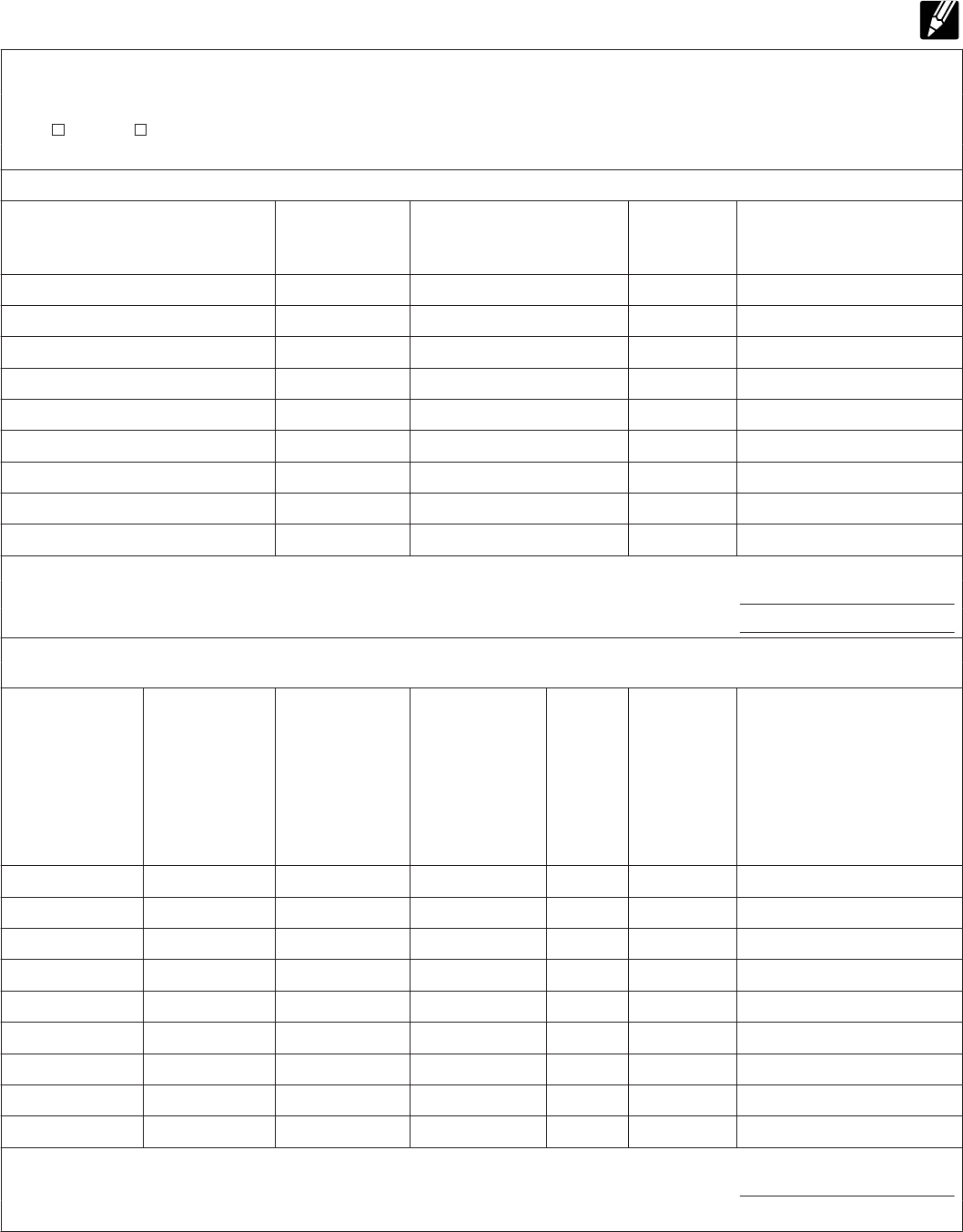
Page 52 of 61 Fileid: … ions/p590a/2023/a/xml/cycle03/source 9:10 - 4-Mar-2024
The type and rule above prints on all proofs including departmental reproduction proofs. MUST be removed before printing.
Summary Record of Traditional IRA(s) for
2023
Appendix A.
Keep for Your Records
Name ______________________________________
I was covered not covered by my employer's retirement plan during the year.
I became age 59
1
/2 on ______________________________________(month) (day) (year)
Contributions
Name of traditional IRA Date
Amount contributed for
2023
Check if
rollover
contribution
Fair market value of IRA as
of December 31, 2023,
from Form 5498
1.
2.
3.
4.
5.
6.
7.
8.
Total
Total contributions deducted on tax return ............................................. $
Total contributions treated as nondeductible on Form 8606 ............................... $
Distributions
Name of
traditional IRA Date
Amount of
distribution
Reason (for
example,
retirement,
rollover,
conversion,
withdrawal of
excess
contributions)
Income
earned
on IRA
Taxable
amount
reported on
income tax
return
Nontaxable amount from
Form 8606, line 13
1.
2.
3.
4.
5.
6.
7.
8.
Total
Basis of all traditional IRAs for 2023 and earlier years (from Form 8606, line 14) ............. $
Note. You should keep copies of your income tax return, and Forms W-2, 8606, and 5498.
52 Publication 590-A (2023)
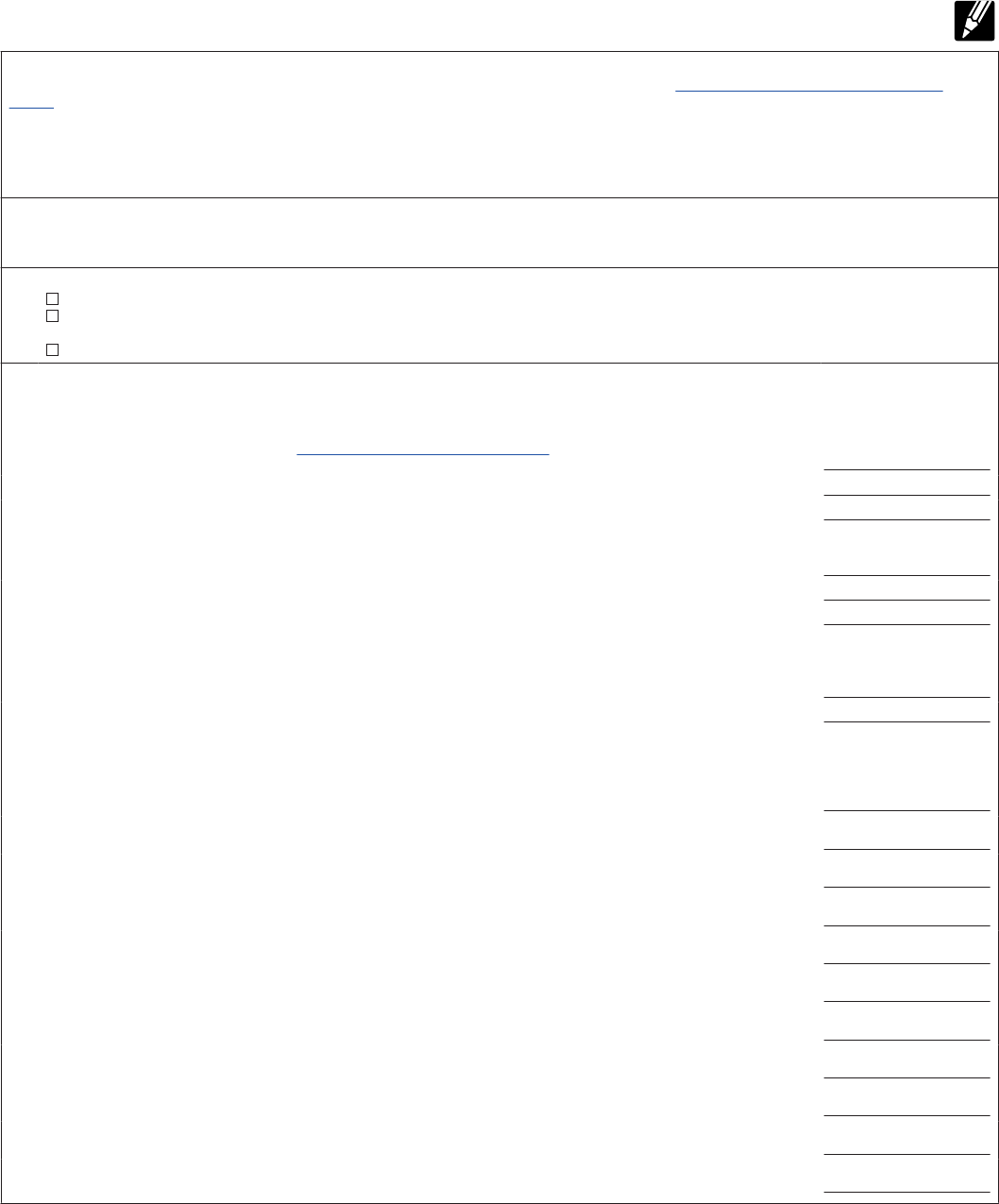
Page 53 of 61 Fileid: … ions/p590a/2023/a/xml/cycle03/source 9:10 - 4-Mar-2024
The type and rule above prints on all proofs including departmental reproduction proofs. MUST be removed before printing.
Worksheets for Social Security Recipients
Who Contribute to a Traditional IRA
Appendix B.
Keep for Your Records
If you receive social security benefits, have taxable compensation, contribute to your traditional IRA, and you or your spouse
are covered by an employer retirement plan, complete the following worksheets. (See Are You Covered by an Employer
Plan? in chapter 1.)
Use Worksheet 1 to figure your modified adjusted gross income. This amount is needed in the computation of your IRA
deduction, if any, which is figured using Worksheet 2.
The IRA deduction figured using Worksheet 2 is entered on your tax return.
Worksheet 1
Computation of Modified AGI
(For use only by taxpayers who receive social security benefits)
Filing Status—Check only one box:
A. Married filing jointly
B. Single, Head of household, Qualifying surviving spouse, or Married filing separately and
lived apart from your spouse during the entire year
C. Married filing separately and lived with your spouse at any time during the year
1. Adjusted gross income (AGI) from Form 1040 or 1040-SR.
(For purposes of this worksheet, figure your AGI without taking into account any social security
benefits from Form SSA-1099 or RRB-1099, any deduction for contributions to a traditional
IRA, any student loan interest deduction, or any exclusion of interest from savings bonds to be
reported on Form 8815. See the Line 1 Worksheet in Appendix C for assistance with
this calculation.) ................................................................... 1.
2. Enter the amount in box 5 of all Forms SSA-1099 and Forms RRB-1099 ...................
2.
3. Enter one-half of line 2 .............................................................
3.
4. Enter the amount of any foreign earned income exclusion, foreign housing exclusion, U.S.
territories income exclusion, exclusion of income from Puerto Rico you claimed as a bona fide
resident of Puerto Rico, or exclusion of employer-provided adoption benefits .............. 4.
5. Enter the amount of any tax-exempt interest reported on Form 1040 or 1040-SR, line 2a .....
5.
6. Add lines 1, 3, 4, and 5 .............................................................
6.
7. Enter the amount listed below for your filing status.
•
$32,000 if you checked box A above.
•
$25,000 if you checked box B above.
•
$0 if you checked box C above .................................................... 7.
8. Subtract line 7 from line 6. If zero or less, enter -0- on this line ...........................
8.
9. If line 8 is zero, skip to line 17, enter -0-, and continue with line 18.
If line 8 is more than zero, enter the amount listed below for your filing status.
•
$12,000 if you checked box A above.
•
$9,000 if you checked box B above.
•
$0 if you checked box C above .................................................... 9.
10. Subtract line 9 from line 8. If zero or less, enter -0- .....................................
10.
11. Enter the smaller of line 8 or line 9 ...................................................
11.
12. Enter one-half of line 11 ............................................................
12.
13. Enter the smaller of line 3 or line 12 ..................................................
13.
14. Multiply line 10 by 0.85. If line 10 is zero, enter -0- ......................................
14.
15. Add lines 13 and 14 ................................................................
15.
16. Multiply line 2 by 0.85 ..............................................................
16.
17. Taxable benefits to be included in modified AGI for traditional IRA deduction purposes.
Enter the smaller of line 15 or line 16 .................................................
17.
18. Enter the amount of any employer-provided adoption benefits exclusion and any foreign
earned income exclusion and foreign housing exclusion or deduction that you claimed ......
18.
19. Modified AGI for determining your reduced traditional IRA deduction—add lines 1, 17, and
18. Enter here and on line 2 of Worksheet 2, next .......................................
19.
Publication 590-A (2023) 53

Page 54 of 61 Fileid: … ions/p590a/2023/a/xml/cycle03/source 9:10 - 4-Mar-2024
The type and rule above prints on all proofs including departmental reproduction proofs. MUST be removed before printing.
Appendix B. (Continued) Keep for Your Records
Worksheet 2
Computation of Traditional IRA Deduction for 2023
(For use only by taxpayers who receive social security benefits)
IF your filing status is... AND your modified AGI is over...
THEN enter on line 1
below...
married filing jointly or
qualifying surviving
spouse $116,000* $136,000
married filing jointly (you
are not covered by an
employer plan but your
spouse is) $218,000* $228,000
single, or head of
household $73,000* $83,000
married filing
separately** $0* $10,000
* If your modified AGI isn’t over this amount, you can take an IRA deduction for your contributions of up to the lesser
of $6,500 ($7,500 if you are age 50 or older) or your taxable compensation. Skip this worksheet, proceed to
Worksheet 3, and enter your IRA deduction on line 2 of Worksheet 3.
** If you didn’t live with your spouse at any time during the year, consider your filing status as single.
Note. If you were married and you or your spouse worked and you both contributed to IRAs, figure the deduction for
each of you separately.
1. Enter the applicable amount from above ..........................................
1.
2. Enter your modified AGI from Worksheet 1, line 19 ................................
2.
Note. If line 2 is equal to or more than the amount on line 1, stop here; your traditional
IRA contributions aren’t deductible. Proceed to Worksheet 3.
3. Subtract line 2 from line 1 .......................................................
3.
4. Multiply line 3 by the percentage below that applies to you. If the result isn’t a multiple of
$10, round it to the next highest multiple of $10. (For example, $611.40 is rounded to
$620.) However, if the result is less than $200, enter $200.
•
Married filing jointly or qualifying surviving spouse and you
are covered by an employer plan, multiply line 3 by 33%
(0.33) (by 38% (0.38) if you are age 50 or older).
•
All others, multiply line 3 by 65% (0.65) (by 75% (0.75) if
you are age 50 or older).
.................. 4.
5. Enter your compensation minus any deductions on Schedule 1 (Form 1040), line 15
(deductible part of self-employment tax), and Schedule 1 (Form 1040), line 16
(self-employed SEP, SIMPLE, and qualified plans). If you are the lower-income spouse,
include your spouse's compensation reduced by his or her traditional IRA and Roth IRA
contributions for this year ....................................................... 5.
6. Enter contributions you made, or plan to make, to your traditional IRA for 2023, but don’t
enter more than $6,500 ($7,500 if you are age 50 or older) .......................... 6.
7. Deduction. Compare lines 4, 5, and 6. Enter the smallest amount here (or a smaller
amount if you choose). Enter this amount on your Schedule 1 (Form 1040), line 20. (If the
amount on line 6 is more than the amount on line 7, complete line 8.) ................. 7.
8. Nondeductible contributions. Subtract line 7 from line 5 or 6, whichever is smaller.
Enter the result here and on line 1 of your Form 8606, Nondeductible IRAs ............ 8.
54 Publication 590-A (2023)

Page 55 of 61 Fileid: … ions/p590a/2023/a/xml/cycle03/source 9:10 - 4-Mar-2024
The type and rule above prints on all proofs including departmental reproduction proofs. MUST be removed before printing.
Appendix B. (Continued) Keep for Your Records
Worksheet 3
Computation of Taxable Social Security Benefits
(For use by taxpayers who receive social security benefits and take a traditional IRA
deduction)
Filing Status—Check only one box:
A. Married filing jointly
B. Single, Head of household, Qualifying surviving spouse, or Married filing separately
and lived apart from your spouse during the entire year
C. Married filing separately and lived with your spouse at any time during the
year
1. Adjusted gross income (AGI) from Form 1040 or 1040-SR.
(For purposes of this worksheet, figure your AGI without taking into account any IRA
deduction, any student loan interest deduction, or any social security benefits from Form
SSA-1099 or RRB-1099, or any exclusion of interest from savings bonds to be reported
on Form 8815. See the Line 1 Worksheet in Appendix C for assistance with
this calculation.) ............................................................... 1.
2. Deduction(s) from line 7 of Worksheet(s) 2 ........................................
2.
3. Subtract line 2 from line 1 .......................................................
3.
4. Enter the amount in box 5 of all Forms SSA-1099 and Forms RRB-1099 ...............
4.
5. Enter one-half of line 4 ..........................................................
5.
6. Enter the amount of any foreign earned income exclusion, foreign housing exclusion,
exclusion of income from U.S. territories, exclusion of income from Puerto Rico you
claimed as a bona fide resident of Puerto Rico, or exclusion of employer-provided
adoption benefits .............................................................. 6.
7. Enter the amount of any tax-exempt interest reported on line 2a of Form 1040 or
1040-SR ...................................................................... 7.
8. Add lines 3, 5, 6, and 7 .........................................................
8.
9. Enter the amount listed below for your filing status.
•
$32,000 if you checked box A above.
•
$25,000 if you checked box B above.
•
$0 if you checked box C above ................................................ 9.
10. Subtract line 9 from line 8. If zero or less, enter -0- on this line ........................
10.
11. If line 10 is zero, stop here. None of your social security benefits are taxable.
If line 10 is more than zero, enter the amount listed below for your filing status.
•
$12,000 if you checked box A above.
•
$9,000 if you checked box B above.
•
$0 if you checked box C above ................................................ 11.
12. Subtract line 11 from line 10. If zero or less, enter -0- ...............................
12.
13. Enter the smaller of line 10 or line 11 .............................................
13.
14. Enter one-half of line 13 .........................................................
14.
15. Enter the smaller of line 5 or line 14 ..............................................
15.
16. Multiply line 12 by 0.85. If line 12 is zero, enter -0- ..................................
16.
17. Add lines 15 and 16 ............................................................
17.
18. Multiply line 4 by 0.85 ...........................................................
18.
19. Taxable social security benefits. Enter the smaller of line 17 or line 18 ..............
19.
Publication 590-A (2023) 55
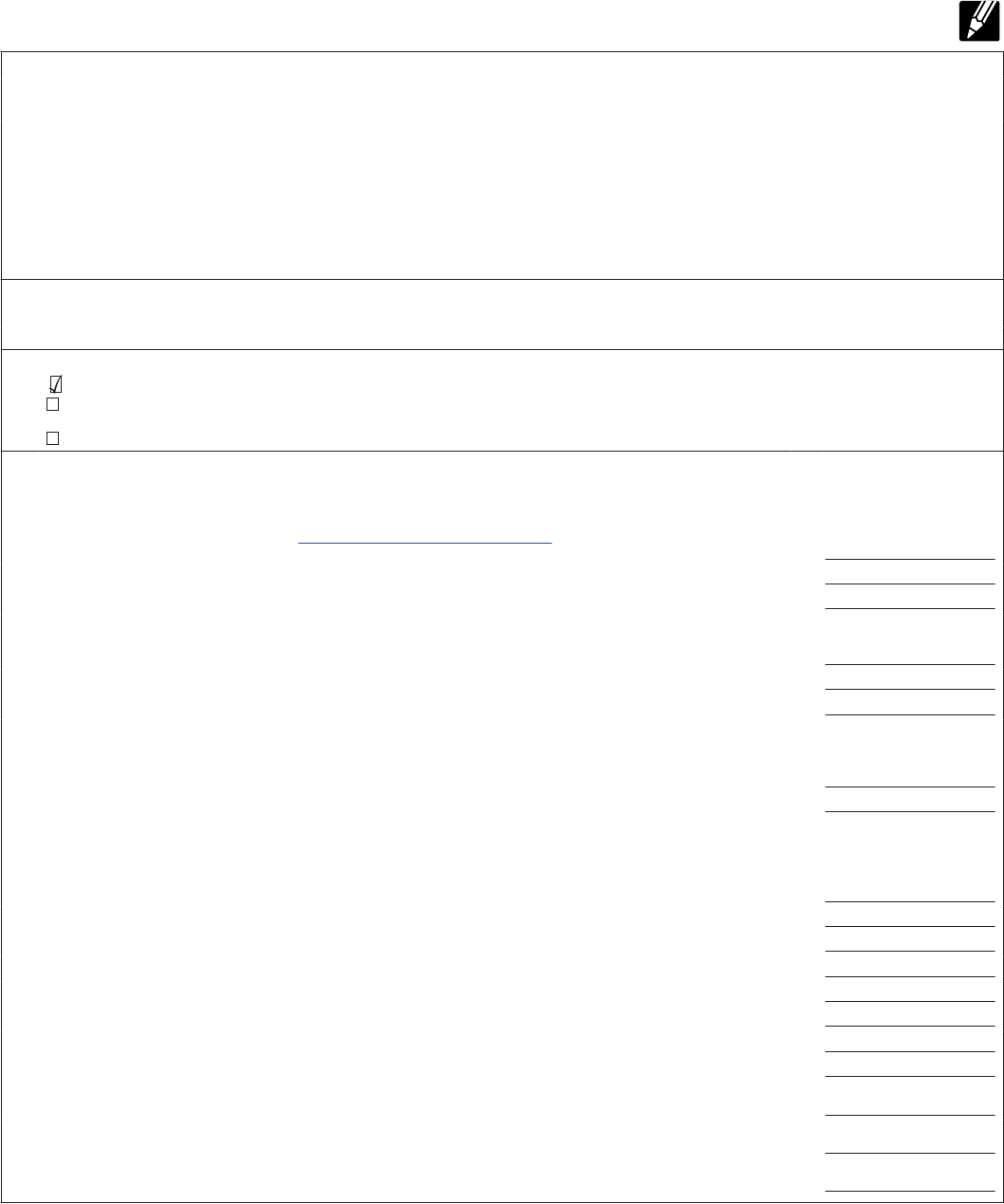
Page 56 of 61 Fileid: … ions/p590a/2023/a/xml/cycle03/source 9:10 - 4-Mar-2024
The type and rule above prints on all proofs including departmental reproduction proofs. MUST be removed before printing.
Appendix B. (Continued) Keep for Your Records
Comprehensive Example
Determining Your Traditional IRA Deduction and
the Taxable Portion of Your Social Security Benefits
You are married and file a joint return. You are 65 years old and had 2023 wages of $100,000. Your spouse didn’t work in
2023. You received social security benefits of $12,000 and made a $7,500 contribution to your traditional IRA for the year.
You had no foreign income, no tax-exempt interest, and no adjustments to income on lines 11 through 26 on your Schedule 1
(Form 1040). You participated in a section 401(k) retirement plan at work.
You complete Worksheets 1 and 2. Worksheet 2 shows that your 2023 IRA deduction is $6,770. You must either withdraw
the contributions that are more than the deduction amount (the $730 show on line 8 of Worksheet 2) or treat the excess
amounts as nondeductible contributions (in which case you must complete Form 8606 and attach it to your Form 1040-SR).
The completed worksheets that follow show how you figured your modified AGI to determine the IRA deduction and the
taxable social security benefits to report on your Form 1040-SR.
Worksheet 1
Computation of Modified AGI
(For use only by taxpayers who receive social security benefits)
Filing Status—Check only one box:
A. Married filing jointly
B. Single, Head of household, Qualifying surviving spouse, or Married filing separately and
lived apart from your spouse during the entire year
C. Married filing separately and lived with your spouse at any time during the year
1. Adjusted gross income (AGI) from Form 1040 or 1040-SR.
(For purposes of this worksheet, figure your AGI without taking into account any social security
benefits from Form SSA-1099 or RRB-1099, any deduction for contributions to a traditional
IRA, any student loan interest deduction, or any exclusion of interest from savings bonds to be
reported on Form 8815. See the Line 1 Worksheet in Appendix C for assistance with
this calculation.) ................................................................... 1.
108,000
2. Enter the amount in box 5 of all Forms SSA-1099 and Forms RRB-1099 ...................
2.
12,000
3. Enter one-half of line 2 .............................................................
3.
6,000
4. Enter the amount of any foreign earned income exclusion, foreign housing exclusion, U.S.
territories income exclusion, exclusion of income from Puerto Rico you claimed as a bona fide
resident of Puerto Rico, or exclusion of employer-provided adoption benefits .............. 4.
0
5. Enter the amount of any tax-exempt interest reported on Form 1040 or 1040-SR, line 2a .....
5.
0
6. Add lines 1, 3, 4, and 5 .............................................................
6.
114,000
7. Enter the amount listed below for your filing status.
•
$32,000 if you checked box A above.
•
$25,000 if you checked box B above.
•
$0 if you checked box C above .................................................... 7.
32,000
8. Subtract line 7 from line 6. If zero or less, enter -0- on this line ...........................
8.
82,000
9. If line 8 is zero, skip to line 17, enter -0-, and continue with line 18.
If line 8 is more than zero, enter the amount listed below for your filing status.
•
$12,000 if you checked box A above.
•
$9,000 if you checked box B above.
•
$0 if you checked box C above .................................................... 9.
12,000
10. Subtract line 9 from line 8. If zero or less, enter -0- .....................................
10.
70,000
11. Enter the smaller of line 8 or line 9 ...................................................
11.
12,000
12. Enter one-half of line 11 ............................................................
12.
6,000
13. Enter the smaller of line 3 or line 12 ..................................................
13.
6,000
14. Multiply line 10 by 0.85. If line 10 is zero, enter -0- ......................................
14.
59,500
15. Add lines 13 and 14 ................................................................
15.
65,500
16. Multiply line 2 by 0.85 ..............................................................
16.
10,200
17. Taxable benefits to be included in modified AGI for traditional IRA deduction purposes.
Enter the smaller of line 15 or line 16 .................................................
17.
10,200
18. Enter the amount of any employer-provided adoption benefits exclusion and any foreign
earned income exclusion and foreign housing exclusion or deduction that you claimed ......
18.
0
19. Modified AGI for determining your reduced traditional IRA deduction—add lines 1, 17, and
18. Enter here and on line 2 of Worksheet 2, next .......................................
19.
118,200
56 Publication 590-A (2023)

Page 57 of 61 Fileid: … ions/p590a/2023/a/xml/cycle03/source 9:10 - 4-Mar-2024
The type and rule above prints on all proofs including departmental reproduction proofs. MUST be removed before printing.
Appendix B. (Continued) Keep for Your Records
Worksheet 2
Computation of Traditional IRA Deduction for 2023
(For use only by taxpayers who receive social security benefits)
IF your filing status is... AND your modified AGI is over...
THEN enter on line 1
below...
married filing jointly or
qualifying surviving
spouse $116,000* $136,000
married filing jointly (you
aren’t covered by an
employer plan but your
spouse is) $218,000* $228,000
single, or head of
household $73,000* $83,000
married filing
separately** $0* $10,000
* If your modified AGI isn’t over this amount, you can take an IRA deduction for your contributions of up to the lesser
of $6,500 ($7,500 if you are age 50 or older) or your taxable compensation. Skip this worksheet, proceed to
Worksheet 3, and enter your IRA deduction on line 2 of Worksheet 3.
** If you didn’t live with your spouse at any time during the year, consider your filing status as single.
Note. If you were married and you or your spouse worked and you both contributed to IRAs, figure the deduction for
each of you separately.
1. Enter the applicable amount from above ..........................................
1.
136,000
2. Enter your modified AGI from Worksheet 1, line 19 ................................
2.
118,200
Note. If line 2 is equal to or more than the amount on line 1, stop here; your traditional
IRA contributions aren’t deductible. Proceed to Worksheet 3.
3. Subtract line 2 from line 1 .......................................................
3.
17,800
4. Multiply line 3 by the percentage below that applies to you. If the result isn’t a multiple of
$10, round it to the next highest multiple of $10. (For example, $611.40 is rounded to
$620.) However, if the result is less than $200, enter $200.
•
Married filing jointly or qualifying surviving spouse and you
are covered by an employer plan, multiply line 3 by 33%
(0.33) (by 38% (0.38) if you are age 50 or older).
•
All others, multiply line 3 by 65% (0.65) (by 75% (0.75) if
you are age 50 or older).
.................. 4.
6,770
5. Enter your compensation minus any deductions on Schedule 1 (Form 1040), line 15
(deductible part of self-employment tax), and Schedule 1 (Form 1040), line 16
(self-employed SEP, SIMPLE, and qualified plans). If you are the lower-income spouse,
include your spouse's compensation reduced by his or her traditional IRA and Roth IRA
contributions for this year ....................................................... 5.
105,000
6. Enter contributions you made, or plan to make, to your traditional IRA for 2023, but don’t
enter more than $6,500 ($7,500 if you are age 50 or older) .......................... 6.
7,500
7. Deduction. Compare lines 4, 5, and 6. Enter the smallest amount here (or a smaller
amount if you choose). Enter this amount on your Schedule 1 (Form 1040), line 20. (If the
amount on line 6 is more than the amount on line 7, complete line 8) .................. 7.
6,770
8. Nondeductible contributions. Subtract line 7 from line 5 or 6, whichever is smaller.
Enter the result here and on line 1 of your Form 8606, Nondeductible IRAs ............ 8.
730
Publication 590-A (2023) 57

Page 58 of 61 Fileid: … ions/p590a/2023/a/xml/cycle03/source 9:10 - 4-Mar-2024
The type and rule above prints on all proofs including departmental reproduction proofs. MUST be removed before printing.
Appendix B. (Continued) Keep for Your Records
Worksheet 3
Computation of Taxable Social Security Benefits
(For use by taxpayers who receive social security benefits and take a traditional IRA deduction)
Filing Status—Check only one box:
A. Married filing jointly
B. Single, Head of household, Qualifying surviving spouse, or Married filing separately
and lived apart from your spouse during the entire year
C. Married filing separately and lived with your spouse at any time during the
year
1. Adjusted gross income (AGI) from Form 1040 or 1040-SR.
(For purposes of this worksheet, figure your AGI without taking into account any IRA
deduction, any student loan interest deduction, any social security benefits from Form
SSA-1099 or RRB-1099, or any exclusion of interest from savings bonds to be reported on
Form 8815. See the Line 1 Worksheet in Appendix C for assistance with this
calculation.) ................................................................... 1.
118,200
2. Deduction(s) from line 7 of Worksheet(s) 2 .........................................
2.
6,770
3. Subtract line 2 from line 1 .......................................................
3.
111,430
4. Enter the amount in box 5 of all Forms SSA-1099 and Forms RRB-1099 ...............
4.
12,000
5. Enter one-half of line 4 ..........................................................
5.
6,000
6. Enter the amount of any foreign earned income exclusion, foreign housing exclusion,
exclusion of income from U.S. territories, exclusion of income from Puerto Rico you
claimed as a bona fide resident of Puerto Rico, or exclusion of employer-provided adoption
benefits ...................................................................... 6.
0
7. Enter the amount of any tax-exempt interest reported on Form 1040 or 1040-SR,
line 2a ....................................................................... 7.
0
8. Add lines 3, 5, 6, and 7 .........................................................
8.
117,430
9. Enter the amount listed below for your filing status.
•
$32,000 if you checked box A above.
•
$25,000 if you checked box B above.
•
$0 if you checked box C above ................................................ 9.
32,000
10. Subtract line 9 from line 8. If zero or less, enter -0- on this line ........................
10.
85,430
11. If line 10 is zero, stop here. None of your social security benefits are taxable.
If line 10 is more than zero, enter the amount listed below for your filing status.
•
$12,000 if you checked box A above.
•
$9,000 if you checked box B above.
•
$0 if you checked box C above ................................................ 11.
12,000
12. Subtract line 11 from line 10. If zero or less, enter -0- ................................
12.
73,430
13. Enter the smaller of line 10 or line 11 .............................................
13.
12,000
14. Enter one-half of line 13 .........................................................
14.
6,000
15. Enter the smaller of line 5 or line 14 ..............................................
15.
6,000
16. Multiply line 12 by 0.85. If line 12 is zero, enter -0- ...................................
16.
62,416
17. Add lines 15 and 16 ............................................................
17.
62,416
18. Multiply line 4 by 0.85 ...........................................................
18.
10,200
19. Taxable social security benefits. Enter the smaller of line 17 or line 18 ..............
19.
10,200
Appendix C. Line 1 Worksheet
Line 1 Supplemental Worksheet
1. Enter your adjusted gross income (AGI) from Form 1040 or 1040-SR, line 11 ................... 1.
2. Enter any social security benefits included in AGI from Form 1040 or 1040-SR, line 6b ............ 2.
3. Enter your IRA deduction amount from Schedule 1 (Form 1040), line 20 ....................... 3.
4. Enter your student loan interest deduction from Schedule 1 (Form 1040), line 21 ................ 4.
5 Enter the amount of savings bond interest reported on Form 8815, line14 ...................... 5.
6. Add the amounts on lines 2 through 6 ............................................. 6.
7. Subtract the amount on line 6 from line 1 .............................................. 7.
8. Enter this amount on line 1 of Worksheets 1 and 3 ................................... 8.
58 Publication 590-A (2023)

Page 59 of 61 Fileid: … ions/p590a/2023/a/xml/cycle03/source 9:10 - 4-Mar-2024
The type and rule above prints on all proofs including departmental reproduction proofs. MUST be removed before printing.
To help us develop a more useful index, please let us know if you have ideas for index entries.
See “Comments and Suggestions” in the “Introduction” for the ways you can reach us.
Index
10% additional tax 31
20% withholding 25
6% excise tax on excess
contributions to Roth IRAs 42
60-day period for rollovers 21
A
Additional taxes 31
(See also Penalties)
Reporting 37
Adjusted gross income (AGI) 13,
38
(See also Modified adjusted gross
income (AGI))
Retirement savings contributions
credit 45
Age 50:
Contributions 9
Age limit:
Traditional IRA 10
Alimony 6
Annuity contracts 9
Borrowing on 32
Assistance (See Tax help)
B
Basis:
Traditional IRAs 16
Bond purchase plans:
Rollovers from 27
Bonds, retirement (See Individual
retirement bonds)
Broker's commissions 8, 11
C
Collectibles 33
Community property 8
Compensation:
Alimony 6
Defined 6
Income included (Table 1-1) 7
Nontaxable combat pay 6
Self-employment 6
Wages, salaries, etc. 6
Conduit IRAs 26
Contribution limits:
More than one IRA 9
Contributions
Designating the year 10
Distributions in same year as 14
Excess (See Excess contributions)
Less than maximum 10
Nondeductible (See Nondeductible
contributions)
Not required 11
Qualified reservist repayments 8
Recharacterizing
(See Recharacterization)
Retirement savings contributions
credit 45
Roth IRAs 38-43
Traditional IRAs 8-10
When to contribute 10
Withdrawing before due date of
return 30
Conversions:
To Roth IRAs 43
Credits
Retirement savings contributions
credit 45, 46
D
Deductions
Figuring reduced IRA deduction 15
Phaseout 13
Traditional IRAs 11-16
Deemed IRAs 37
Defined benefit plans 12
Defined contribution plans 11
Difficulty of care payments:
Compensation 15
Nondeductible IRA contributions 15
Distributions:
Contributions in same year as 14
Income from 14
Inherited IRAs (See Inherited IRAs)
Divorce:
Rollovers by former spouse 27
Transfers incident to 27
E
Early distributions 31
(See also Penalties)
Tax 31
Employer and employee
association trust accounts 8
Employer plans:
Covered by 11
Year(s) covered 11
Employer retirement plans 11
Defined benefit plans 12
Defined contribution plans 11
Effect of modified AGI on deduction
(Table 1-2) 13
Limit if covered by 13
Prohibited transactions 32
Endowment contracts (See Annuity
contracts)
Excess contributions 33-37
Closed tax year 37
Deducted in earlier year 34
Deductible this year (Worksheet
1-5) 35
Deductible this year if any were
deducted in closed tax year
(Worksheet 1-6) 37
Deducting in a later year 35
Due to incorrect rollover
information 35
Recharacterizing 28
Roth IRAs 42
Tax 31
Withdrawn after due date of
return 34
Withdrawn by due date of return 34
Exempt transactions 32
F
Federal judges 11
Fiduciaries:
Prohibited transactions 32
Filing before IRA contribution is
made 10
Filing status 10
Deduction phaseout and 13
Firefighters, volunteer 12
Form 1040:
Modified AGI calculation from 14
Form 1040-NR:
Modified AGI calculation from 14
Form 1040-SR:
Modified AGI calculation from 14
Form 1099-R:
Distribution code 1 used on 37
Withdrawal of excess
contribution 34
Form 5329 37
Form 8606 15
Failure to file, penalty 16
Form 8880 46
Form W-2:
Employer retirement plans 11
Frozen deposits 23
Full-time student:
Retirement savings contributions
credit 45
H
How to:
Set up an IRA 7
Treat withdrawn contributions 34
I
Individual retirement accounts 7
Individual retirement annuities 7, 8
Publication 590-A (2023) 59

Page 60 of 61 Fileid: … ions/p590a/2023/a/xml/cycle03/source 9:10 - 4-Mar-2024
The type and rule above prints on all proofs including departmental reproduction proofs. MUST be removed before printing.
Individual retirement arrangements
(IRAs):
How to set up 7
When to set up 7
Individual retirement bonds 8
Inherited IRAs 20
Rollovers 24
Interest on IRA 3
Investment in collectibles:
Collectibles defined 33
Exception 33
K
Kay Bailey Hutchison Spousal
IRAs:
Contribution limits 9
Deductions 11
Roth IRA contribution limits 38
Keogh plans:
Rollovers from 27
L
Last-in first-out rule 31
Life insurance 27
Line 1 Worksheet 58
M
Military death gratuities 44
Missing children, photographs of 3
Modified adjusted gross income
(AGI):
Employer retirement plan coverage
and deduction (Table 1-2) 13
Figuring (Worksheet 1-1) 15
No employer retirement plan
coverage and deduction
(Table 1-3) 14
Roth IRAs 38
Effect on contribution amount
(Table 2-1) 41
More than one IRA 9
Recharacterization 30
N
Nondeductible contributions 15
Failure to report 16
Overstatement penalty 16
Notice:
Qualified employer plan to provide
prior to rollover distribution 25
Rollovers 21
P
Partial rollovers 24, 26
Penalties 31-37
Excess contributions 33-37
Roth IRAs 42
Exempt transactions 32, 33
Failure to file Form 8606 16
Overstatement of nondeductible
contributions 16
Prohibited transactions 32, 33
Reporting 37
Phaseout of deduction 13
Pledging account as security 32
Prohibited transactions 32, 33
Taxes on 32
Publications (See Tax help)
Q
Qualified domestic relations orders
(QDROs) 27
R
Recharacterization 28-30
Determining amount of net income
due to contribution and total
amount to be recharacterized
(Worksheet 1-3) 29
Reporting 30
Timing of 29
Recordkeeping requirements:
Summary record of traditional IRAs
for 2022 (Appendix A) 52
Traditional IRAs 16
Reporting:
Additional taxes 37
Deductible contributions 15
Recharacterization 30
Rollovers:
From employer plans 27
From IRAs 24
Reservists 12
Qualified reservist repayments 8
Retirement bonds (See Individual
retirement bonds)
Retirement savings contributions
credit 45, 46
Rollovers 21-27
Amount 23
Choosing an option (Table 1-5) 26
Completed after 60-day period 21
Conduit IRAs 26
Direct rollover option 25
Extension of period 23
From bond purchase plan 27
From employer's plan into a Roth
IRA 44
From employer's plan into an
IRA 24
From Keogh plans 27
From one IRA into another 23
From Roth IRAs 44
From traditional IRA 21
Inherited IRAs 24
Nonspouse beneficiary 25
Notice 21
Partial 24, 26
Tax treatment of rollover from
traditional IRA to eligible
retirement plan other than an
IRA 21
Time limit 21
To Roth IRAs 43
To traditional IRA 21
Waiting period between 23, 26
Withholding (See Withholding)
Roth IRAs 37
Age limit 38
Contribution limit reduced 39
Determining reduced limit
(Worksheet 2-2) 42
Contributions 38-43
Timing of 42
To traditional IRAs and to Roth
IRAs 39
Conversion 28, 43
Defined 38
Excess contributions 42
Modified AGI:
Effect on contribution amount
(Table 2-1) 41
Figuring (Worksheet 2-1) 40
Rollovers from 44
Setting up 38
Spouse 38
Traditional IRAs converted into 28
S
Section 501(c)(18) plan 9
Self-certification 23
Self-employed persons:
Deductible contributions 15
Income of 6
Separated taxpayers:
Filing status of 13
Servicemembers group life
insurance 44
Services received at reduced or no
cost 33
SIMPLE IRAs 8
Traditional IRA, mistakenly moved
to 28
Simplified employee pensions
(SEPs) 8
Social Security recipients 13
Contributions to traditional IRAs,
worksheet (Appendix B) 53, 56
Spousal IRAs (See Kay Bailey
Hutchison Spousal IRAs or Inherited
IRAs)
Students:
Retirement savings contributions
credit 45
Surviving spouse:
Rollovers by 27
T
Tables:
Compensation, types of
(Table 1-1) 7
Modified AGI:
Employer retirement plan
coverage and deduction
(Table 1-2) 13
No employer retirement plan
coverage and deduction
(Table 1-3) 14
60 Publication 590-A (2023)

Page 61 of 61 Fileid: … ions/p590a/2023/a/xml/cycle03/source 9:10 - 4-Mar-2024
The type and rule above prints on all proofs including departmental reproduction proofs. MUST be removed before printing.
Roth IRAs, effect on contribution
(Table 2-1) 41
Rollover vs. direct payment to
taxpayer (Table 1-5) 26
Using this publication (Table I-1) 4
Tax advantages of IRAs 3
Tax credits
Retirement savings contributions
credit 45, 46
Tax help 46
Tax year 11
Tax-sheltered annuities:
Rollovers from 27
Traditional IRAs 6-37
Contribution limits 8-10
Contributions 8, 10
Due date 10
To Roth IRAs and to traditional
IRAs 39
Converting into Roth IRA 28
Cost basis 16
Deductions 11-16
Defined 6
Disclosures 8
Excess contributions 33-37
Inherited IRAs 20
Loss of IRA status 32
Mistakenly moved to SIMPLE
IRA 28
Recordkeeping 16
Reduced IRA deduction for
2021 16
Rollovers (See Rollovers)
Setting up 6-8
Social Security recipients 13, 53,
56
Summary record for 2022
(Appendix A) 52
Transfers 20
Types of 7
Withdrawing or using assets 30, 31
Transfers 20
Divorce 27
To Roth IRAs 20, 43
Trustee to trustee 21, 43
Trustee-to-trustee transfers 21
To Roth IRAs 43
Trustees' fees 8, 11
U
Unrelated Business Income 33
V
Volunteer firefighters 12
W
Withdrawing or using assets
Contribution withdrawal, before due
date of return 30
Determining total amount to be
withdrawn (Worksheet 1-4) 30
Traditional IRAs 30, 31
Withholding:
Direct rollover option 25
Eligible rollover distribution paid to
taxpayer 25
Worksheets:
Excess contributions deductible this
year (Worksheet 1-5) 35
If any were deducted in closed
tax year (Worksheet 1-6) 37
Figuring amount of net income due
to IRA contribution and total
amount to be recharacterized
(Worksheet 1-3) 29
Figuring amount of net income due
to IRA contribution and total
amount to be withdrawn
(Worksheet 1-4) 30
Figuring modified AGI (Worksheet
1-1) 15
Roth IRAs:
Figuring modified AGI
(Worksheet 2-1) 40
Figuring reduced contribution
limit (Worksheet 2-2) 42
Social Security recipients who
contribute to traditional IRAs
(Appendix B) 53, 56
Publication 590-A (2023) 61
